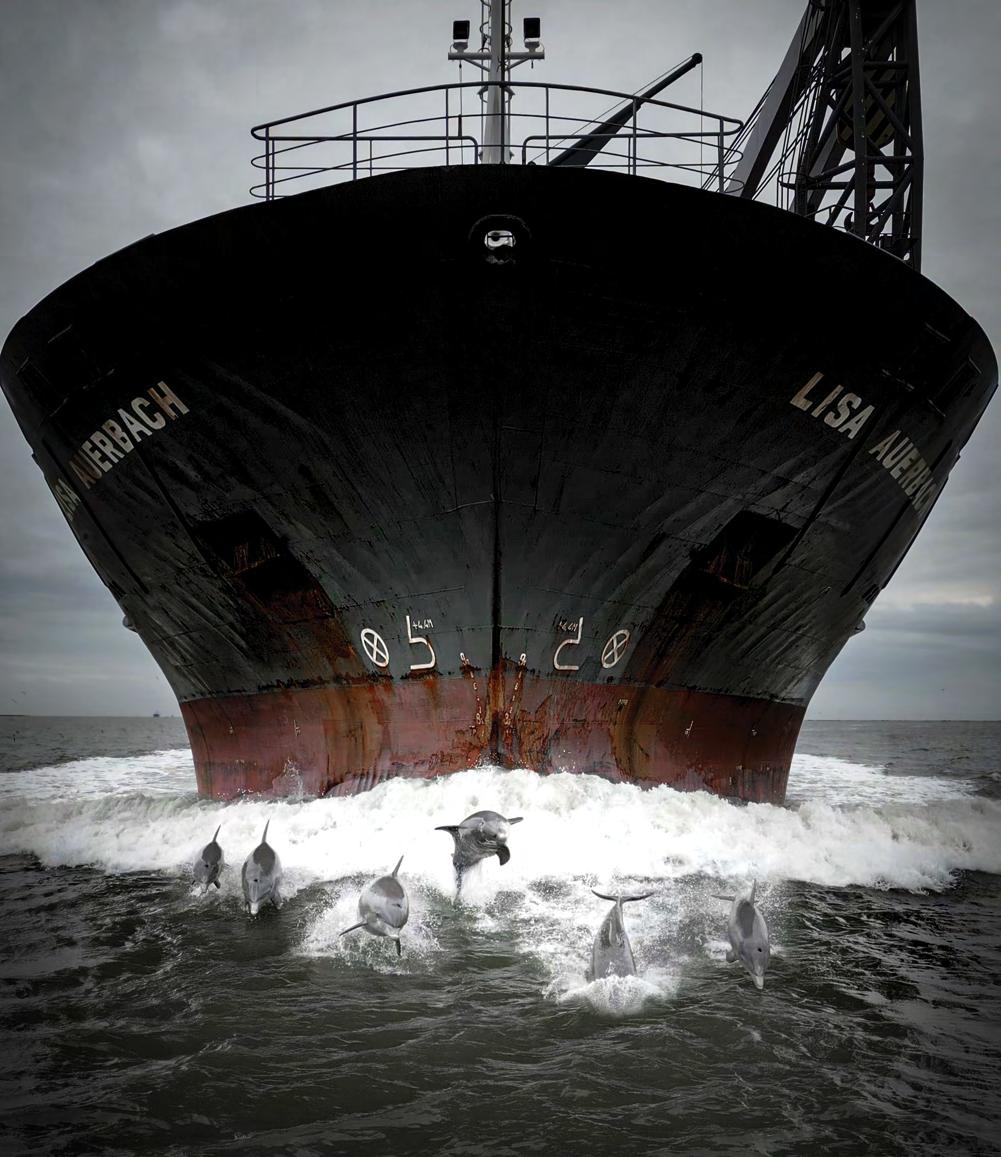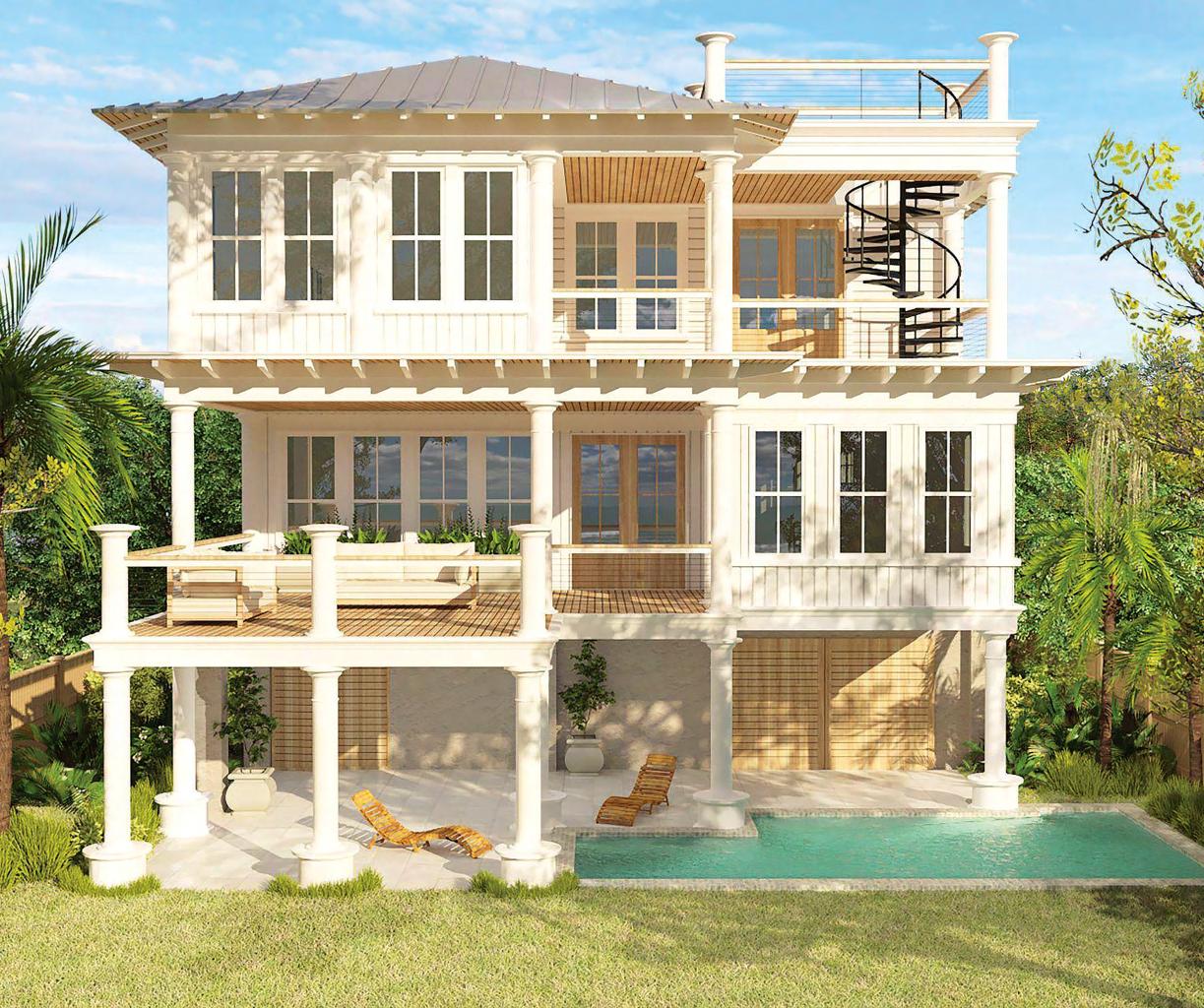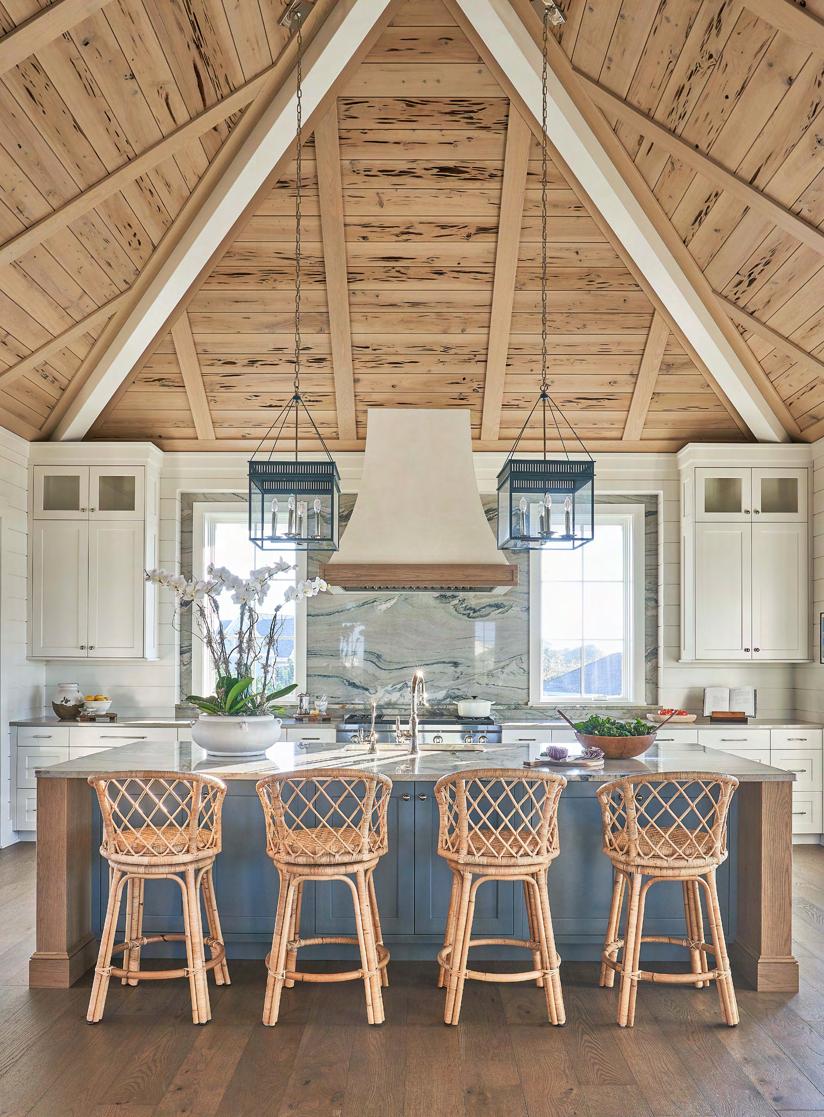SiP
SULLIVAN’S ISLAND ISLE OF PALMS SULLIVAN’S ISLAND ISLE OF PALMS






















































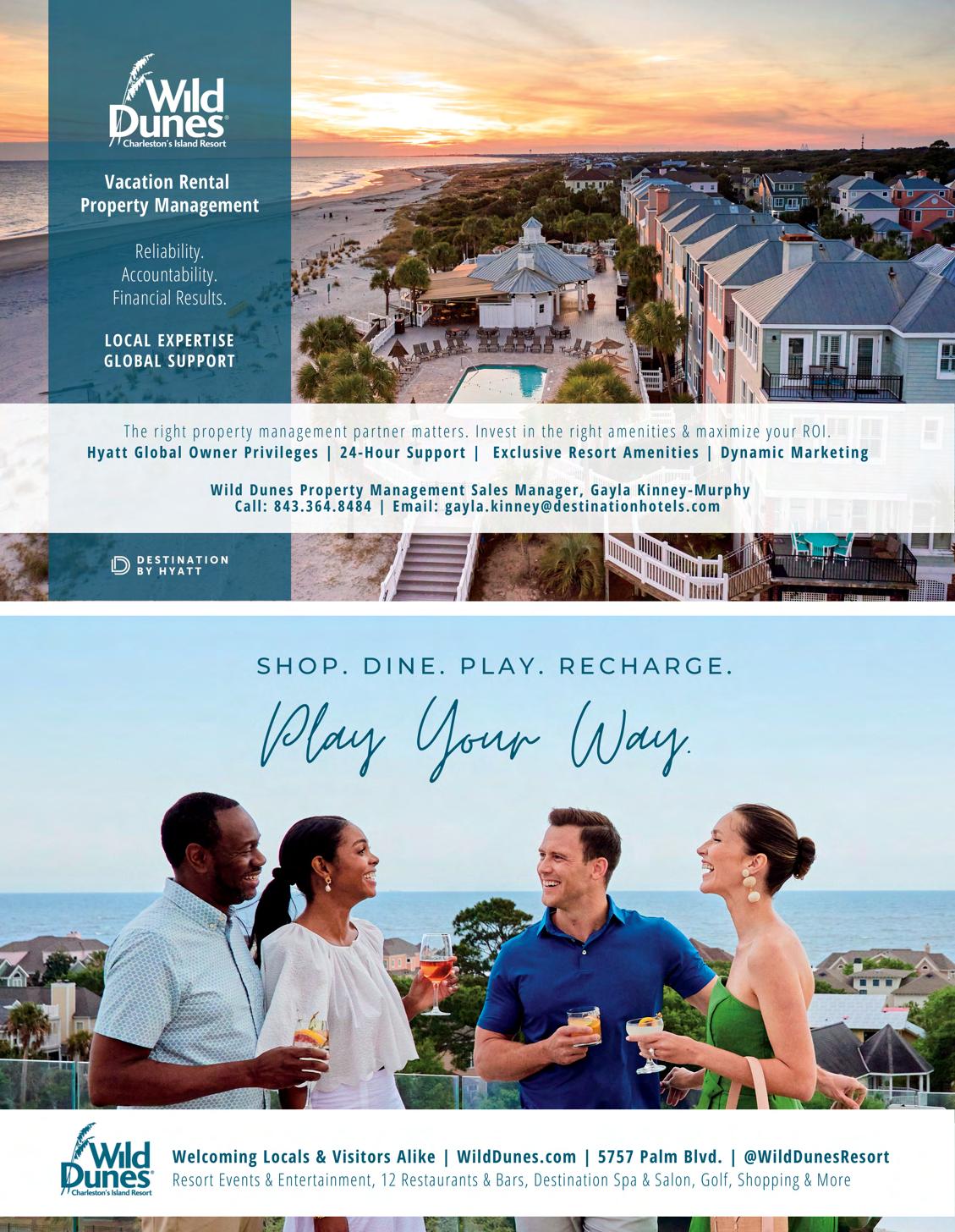
























































74 | A CAPER ON CAPERS
The unspoiled barrier island just north of IOP offers some of the best coastal camping on the Eastern seaboard.
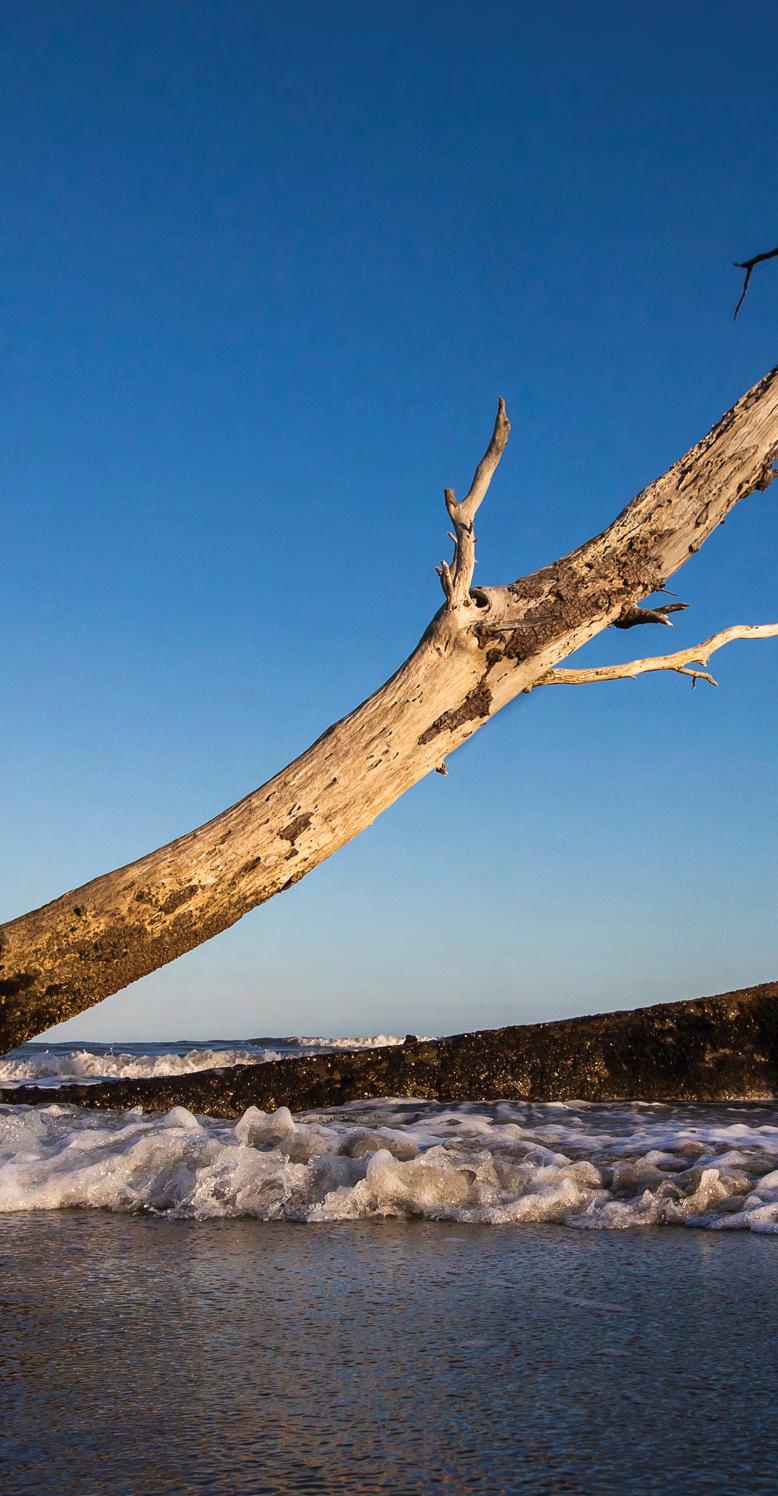 By Hastings Hensel
By Hastings Hensel
80 | SPANIELS OF SUMMER FEET
Madeleine McGee and Bunky Wichmann raised a bevy of Boykin spaniels in their Sullivan’s Island home during the peak of the pandemic.
By Jennifer Pattison Tuohy86 | THE KAYAK CREW
Kayaking opens up a whole new way of seeing the islands, as well as a whole new community.
By Hastings Hensel92 | SAILING INTO THE SUNSET
Join Sullivan’s Islanders Mark Stetler and Caroline Knopf on their sailboat Alliance as they explore the beauty and history of Charleston Harbor.
By Brian Sherman98 | THE SPY NEXT DOOR
An Isle of Palms resident explains how a Southern belle from Georgia ended up in the war zones of Afghanistan and Iraq.
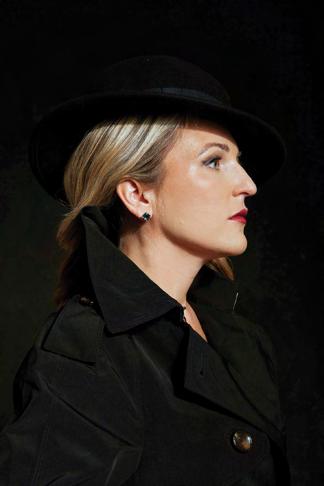 By Laura Anderson
By Laura Anderson
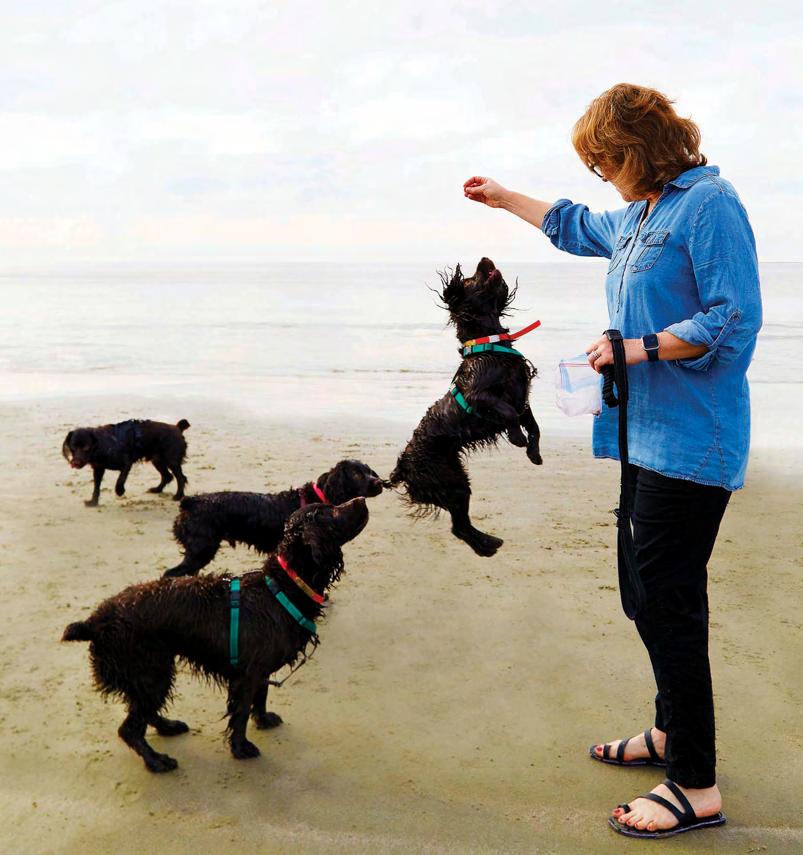
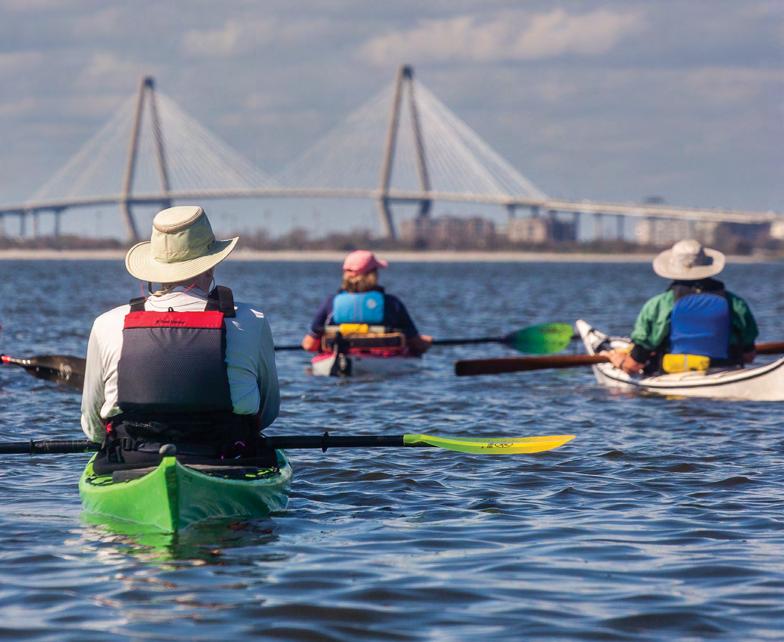

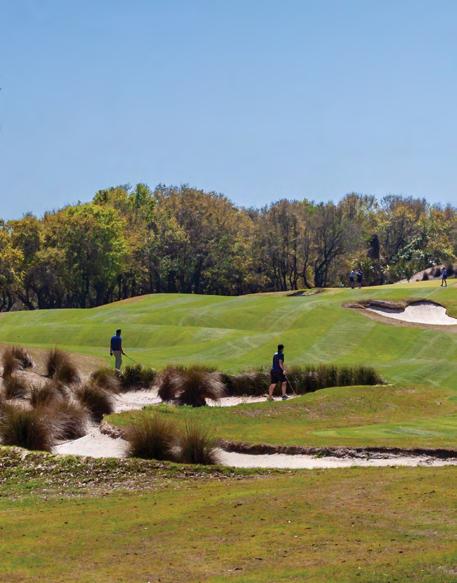
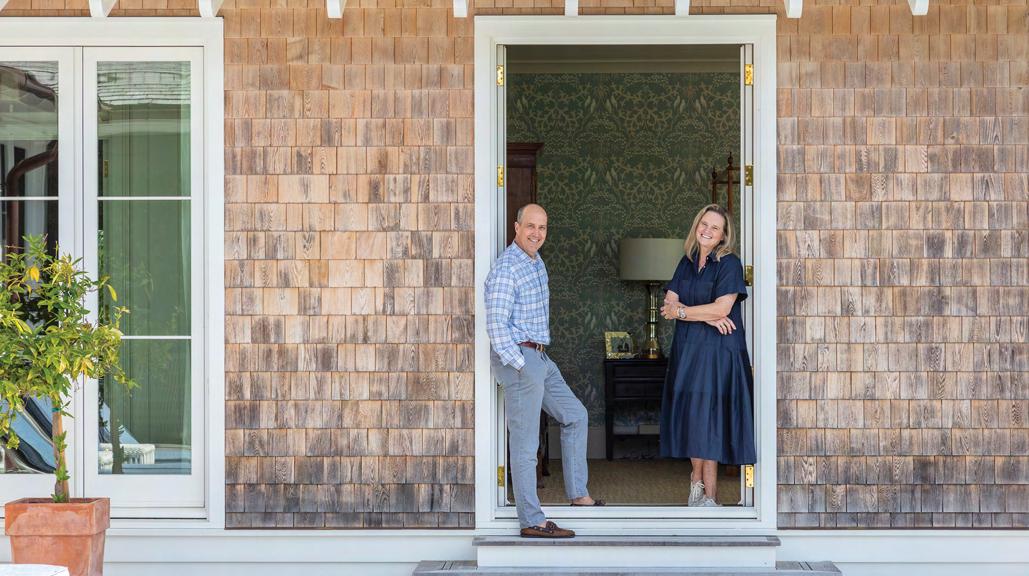

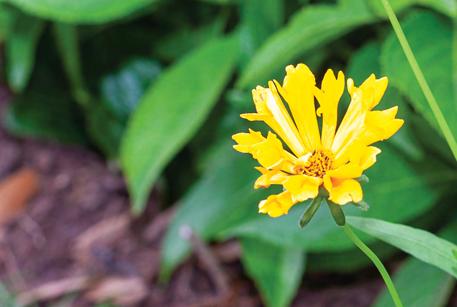
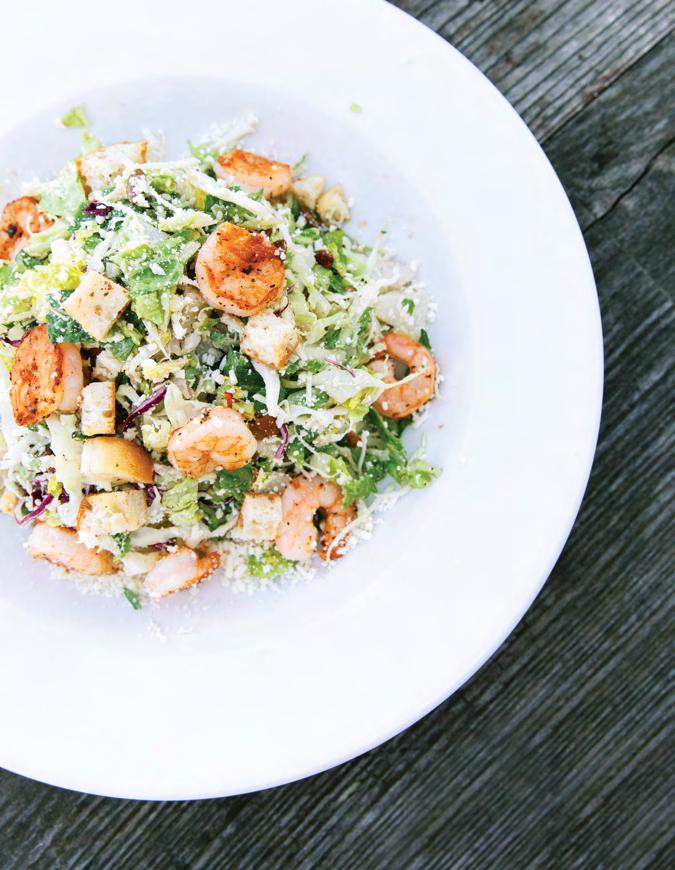
110 | COTTAGE CONFIDENTIAL
A thoughtful renovation aids a 1970s Atlantic Avenue beach house in capturing the quintessential charm of a classic Sullivan’s Island cottage.
By Jennifer Pattison Tuohy118 | SUMPTUOUS SUMMER SALADS
Thinking about a salad? Forget about bland lettuce topped with soggy cucumbers and flavorless tomatoes. Let us introduce you to a transformed classic that is anything but repetitive.
By Della Watson54 | WHEN PETER THE DOCTOR DREAMT UP FRED THE SNAKE
One of Dewees Islands’ longest residents, Dr. Peter Cotton, has helped shape both the eco-conscious barrier island, modern gastrointestinal medicine, and a reptile with a quirky personality
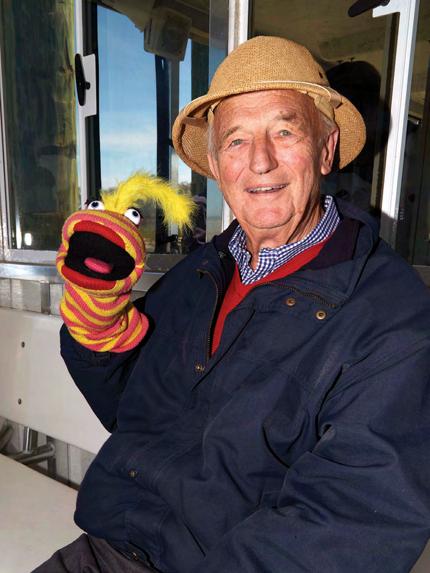 By Jennifer Pattison Tuohy
By Jennifer Pattison Tuohy
60 | HITTING ALL THE RIGHT NOTES
Julie Mathias reflects on her career instilling a love for music in the children at Sullivan’s Island Elementary School.
By Laura Anderson64 | A SUMMER SANCTUARY
Anne Bivens grew up at “Bamma’s Beach,” a fisherman’s cottage on Sullivan’s Island. Today, the accomplished silversmith showcases her jewelry at Sandpiper Gallery.
By Colin McCandless68 | A ROCK-SOLID RELATIONSHIP
Ricky Myatt has been a mailman, an IOP bar owner, and an entrepreneur. These days, his most important job is to be a dad – and a best friend as well.
By Brian Sherman22 | A RETURN VISITOR
The beautiful painted bunting visits the islands every spring.
By Sarah Harper26 | HOME SWEET HOME
Dewees Island is the perfect spot for birds of prey to feather their nests, both in places created just for them and in a few unusual spaces.
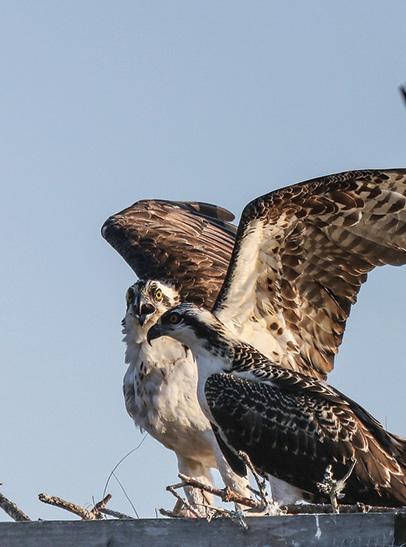 By Judy Drew Fairchild
By Judy Drew Fairchild
30 | A GADSDEN BY ANY OTHER NAME
Sullivan’s Island’s cultural center is named after a famous South Carolinian, but not the one you might think.
By Mike Walsh32 | BLACKBEARD AND THE GENTLEMAN PIRATE
Stede Bonnet and Blackbeard’s unlikely partnership led to an eight-month piratical frenzy that culminated on Sullivan’s.
By Christopher Downey36 | TRUE NORTH
Andrea Hazel’s ancestors arrived on Sullivan’s Island aboard a slave ship. Today, the local artist preserves the memories of her family through art.
By Marci ShoreISLAND LIFE
42 | ONE GARDEN AT A TIME
Master naturalist and Sullivan’s Islander Derek Wade explains how to care for your garden to benefit all living creatures.
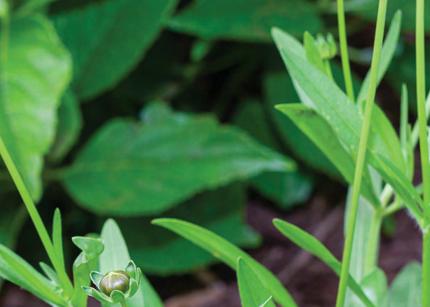 By Carol Antman
By Carol Antman
46 | TAKING AIM AT A DEADLY DISEASE
The Wild Dunes Men’s Golf Association has raised more than $800,000 over the past nine years to fight prostate cancer.
By Brian Sherman50 | HEART OVER MIND
Meditation classes offered at the Isle of Palms Rec Center challenge local residents to calm their minds and open their hearts.
By Marci Shore104 | A STROKE OF INDIGENIUS: ROLAND FELDMAN
106 | FLOWER POWER: STEPHANEY ‘JANE’ OBERON
108 | LIFESTYLE’S A BEACH: KATIE POOLE
126 | VIBES & VOCALS
Take a tour of the live music hot spots on the Isle of Palms and Sullivan’s Island.
128 | SIP CALENDAR
Your essential guide to island events.
130 | LAST LOOK
Welcome to the ninth annual issue of SiP – the magazine dedicated to celebrating life on the beautiful barrier islands of Sullivan’s, Isle of Palms, Dewees, and Goat.
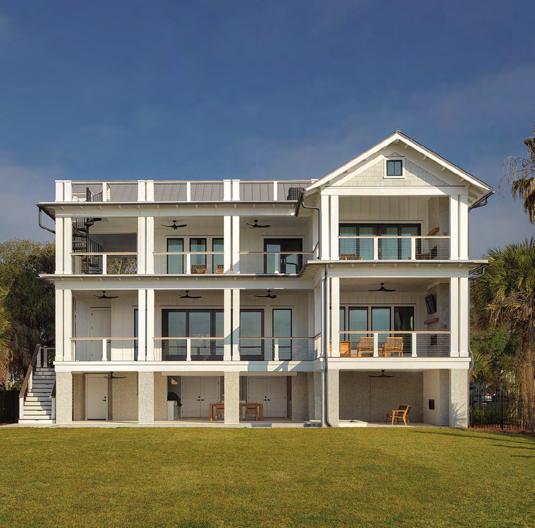

As we approach a decade of publishing this magazine, I want to take a moment to reflect on what we do here. I am often asked how we come up with the ideas for the stories in the magazine, and occasionally someone will say, “Well, you must have done all the stories there are by now!” Not by a long shot.


SiP is not your average glossy lifestyle magazine, chasing trends and writing for clicks. The mission of SiP is to celebrate our cherished communities. Each story within its pages highlights what a special place these islands are, either because of the history, the culture, the location, the wildlife, or, of course, because of the people.
A former editor of mine at a small Idaho newspaper once told me that if I was looking for a story I should just open the phone book (Yes, this was a few decades ago) and pick a name. “Call them up, talk to them for 10 minutes about their life, and you’ll find your story.” That pearl of wisdom has held me in good stead in this role.
Inside this issue, you’ll learn the fascinating stories of your neighbors, from a doctor on Dewees who helped pioneer modern gastrointestinal medicine (page 54) to an accomplished artist whose great-great-greatgrandmother arrived on Sullivan’s in a slave ship (page 36). You’ll uncover the rich history of pirates on Sullivan’s Island (page 32) and learn how the Wild Dunes Men’s Golf Association created the country’s largest annual golf fundraiser for prostate cancer research.
You will join your feathered neighbors inside their homes as we explore raptor nesting sites on Dewees and the painted bunting’s fondness for the Maritime Forest. And, if you are looking for ways to explore our wonderful area further, you’ll learn how to camp on Capers Island (page 74), sail around the harbor (page 92), or kayak in the creeks (page 86). There’s something for everyone. Enjoy!
Jennifer Pattison Tuohy Editor-in-Chief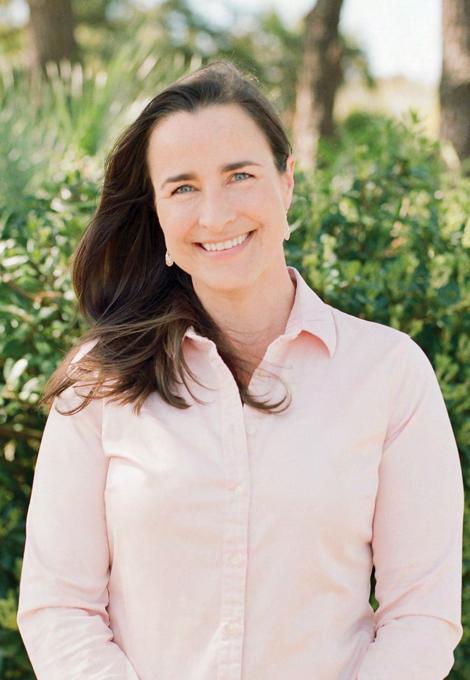
Lynn Pierotti Publisher
Jennifer Pattison TuohyEditor-in-Chief
Cristina Young
Art Director
Brian Sherman
Deputy Editor
Rob Byko Photographer
Jeff Lovins
Marci Shore
Advertising Executive
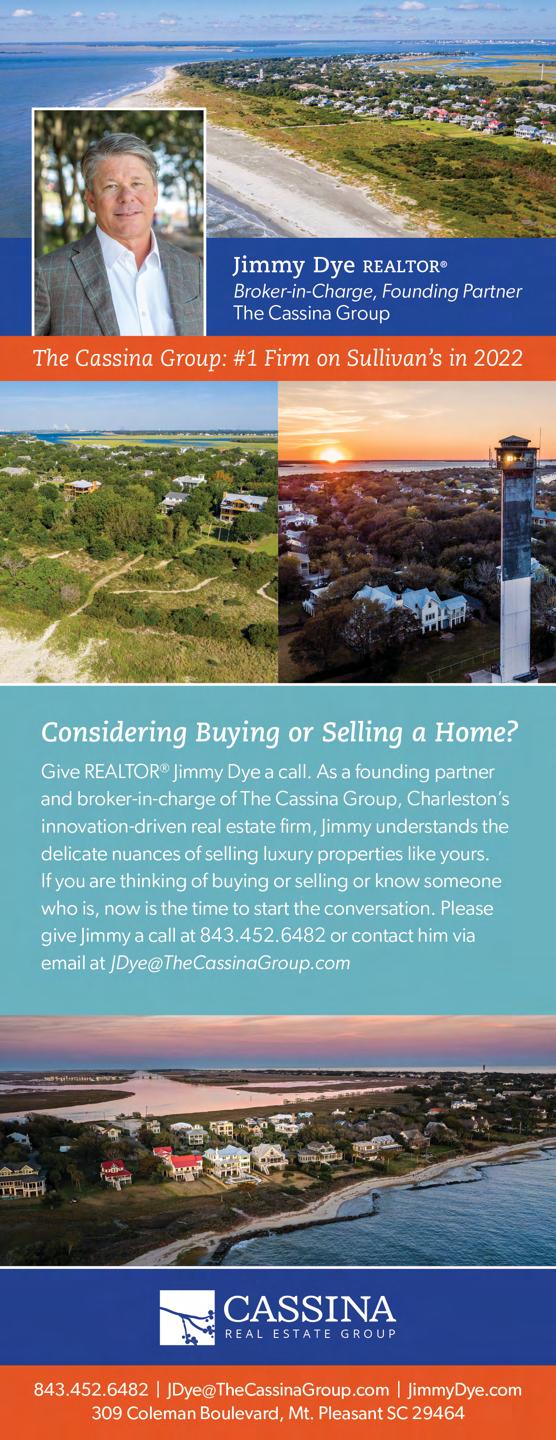
Contributors
Laura Anderson
Carol Antman
Josie Derrick
Christopher Downey
Sarah Harper
Hastings Hensel
Caroline Knopf
Julia Lynn
Colin McCandless
Brian Sherman
Marci Shore
Mic Smith
Mark Stetler
Mike Walsh
Della Watson
www.sipmagazinesc.com
jennifer@luckydognews.com
lynn@luckydognews.com www.luckydognews.com
Cover Photo by Michael Barnett
Copyright 2023
Laura Anderson was born in Upstate New York and graduated from the S.I. Newhouse School of Public Communications at Syracuse University with degrees in magazine journalism and English literature. She moved to Charleston in 2015. Her predilection for sharing stories and connecting with people led her to her current role as digital editor for Lucky Dog Publishing. She also owns LCA Design & Marketing.
Christopher Byrd Downey
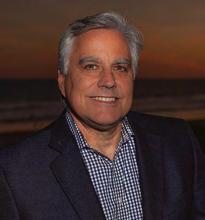
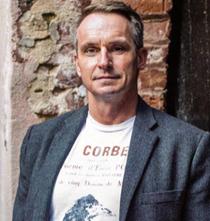

Captain Byrd received his degree in history from Virginia Tech in 1995, and, shortly after graduating, began a career in the maritime industry. He has authored four books related to the history of Charleston: Stede Bonnet: Charleston’s Gentleman Pirate; Charleston and the Golden Age of Piracy; Edgar Allan Poe’s Charleston; and A History Lover’s Guide to Charleston. A native of Virginia, he now lives with his family in Mount Pleasant. Visit him at captainbyrds.com.
Judy Drew Fairchild is a master naturalist, photographer, writer and nature educator who lives on Dewees Island. She produces one-minute nature education videos for all ages and creates content at her website, naturewalkswithjudy.com. She took more than 1,500 photos of owls this spring! You can find her outside every chance she gets.
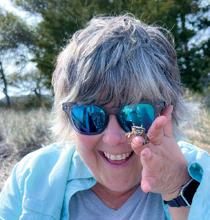
Carol Antman is driven by creative curiosity. Her passion for travel has led to living on a kibbutz, hitchhiking the Pan American highway, vagabonding in Europe and Central America, and camping throughout the U.S. to discover a home on Sullivan’s Island. As a travel writer, she is inspired by the idea that everyone has a story. A life-long pianist, Carol was also the founder of Creative Spark Center for the Arts.
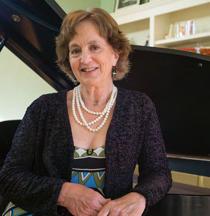
Rob Byko is a photographer and Realtor at Byko Realty, an agent of ERA Wilder Realty. An environmentalist at heart, Rob hopes his art inspires a protective spirit in others. Rob also serves on the Charleston County Public Library Board of Trustees and is the Public Image Co-Chair for the Historic Rotary Club of Charleston. Rob and his wife Karen live on Sullivan’s Island with their two rescue boxers and are committed to working with area nonprofits to improve the lives of Lowcountry residents.
Sarah Harper grew up on Sullivan’s Island and still lives here. She went to the College of Charleston for her bachelor’s degree in biology and earned her master’s in biology from the Citadel Graduate College. She began bird banding around 2004 with fellow islander Will Post. She has volunteered at banding stations in Belize, Peru, Costa Rica, Pennsylvania and New York. She is a director at large in the North American Banding Council and the director of the Sullivan’s Island Bird Banding Station.
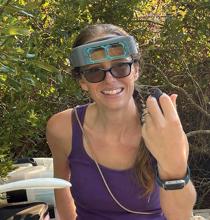
Michael Barnett was born in Charleston in 1982. He has lived on both Isle of Palms and Sullivan’s Island but resides today in Mount Pleasant with his young family. He has been taking pictures of wildlife since he was very young. His love for the Lowcountry and its ecosystems runs deep. Barnett has always tried to capture the wildlife he photographs from their perspective. His goal is to share this unique perspective with as many people as possible. (Instagram: TheMilkyWayChaser)
Josie Derrick is a lifestyle and brand photographer calling the Lowcountry home. Josie specializes in working with makers, creatives, and small business owners to help them create intentional imagery to tell their brand stories.
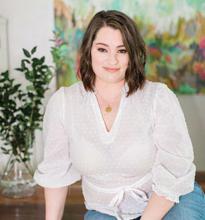
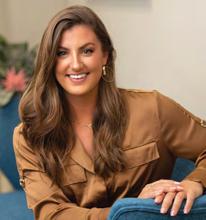
Hastings Hensel is a freelance writer and teaches writing at Coastal Carolina University. He is the author of two poetry collections — Ballyhoo and Winter Inlet — and a graduate of Johns Hopkins and Sewanee. He lives with his wife, Lee, and their dog, Huck, in Murrells Inlet, where he also works as the captain’s chronicler for Jolly Roger’s Fishing Adventures.
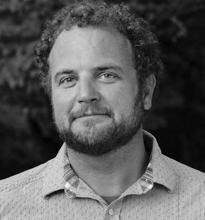
Caroline Knopf is a freelance photographer. After 26 years in New York, she returned to her Sullivan’s Island family home. She and her husband, Mark Stetler, both photographers, have opened The Space Studio in Charleston and have a sailing charter (alliancesailing. com). She is an advocate for preserving the historic and natural treasures of Sullivan’s Island, which are the inspiration for Maritime Outpost, a collection of clothing and accessories she developed.
Brian Sherman is a freelance writer and editor. A native of Philadelphia, he graduated from Memphis State University, has lived in 10 states and landed in the Lowcountry the day before 9/11. Back when he had a real job, he was the editor of three different newspapers and a national magazine. He is currently the editor of The Island Eye News. He lives in Mount Pleasant with his wife, Judy, and their adorable but incorrigible dachshund, Jelly Bean.
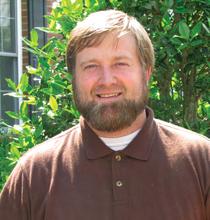
Mark Stetler’s life and career in photography span more than 20
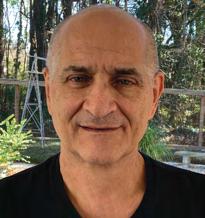
years. Born in Cleveland, Stetler studied photography at the Art Institute of Atlanta, moving to New York in 1993 to attend NYU. While in New York, he assisted many of the world’s most respected photographers, such as Mary Ellen Mark and Richard Avedon. Inspirational relationships with Avedon and others led to creative ventures of his own in landscape, portraiture and fashion, fields where he currently shoots for clients worldwide while based on Sullivan’s Island.

Julia Lynn is a Charlestonbased photographer specializing in interiors and architecture. She grew up in Southwest Virginia and attended college in Tennessee before settling in Charleston many years ago. Photographing houses has taken her all over the Lowcountry, as well as to other parts of the country; every new house or person she meets along the way has contributed to a truly fulfilling career. In her free time, she enjoys being with her family, especially spending time on the water in beautiful South Carolina.
Marci Shore has been a SiP Magazine feature writer for nine years. A Wake Forest University alumni, she still spends part of her time in the foothills of North Carolina. She is a part-time musician, playing fiddle with various groups and founder of Ma’ Formulas artisan herbal topicals.
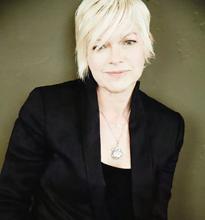
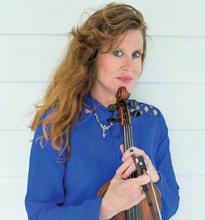
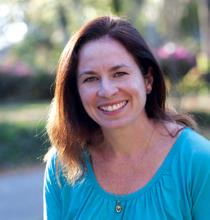
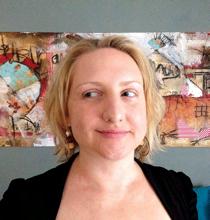
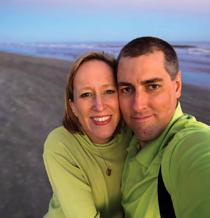
Mike Walsh is a retired orthopedic surgeon and avid amateur historian. Having married a native Charlestonian 52 years ago, he has been coming to Sullivan’s Island since then and lived here since 2005. He’s the president of Battery Gadsden Cultural Center and a volunteer tour guide for the National Park Service at Fort Moultrie, as well as serving on the Charleston County Historic Preservation Commission.
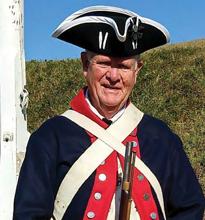
Colin McCandless is a freelance writer who lives in West Ashley. He has more than 14 years of writing and editing experience working for magazines and newspapers and developing blog and website content. He also writes for Charleston Magazine, Charleston Style & Design, HealthLinks Magazine, and Metro Magazine, among others. In his spare time, he enjoys writing poetry, traveling, and playing trivia and tennis.
Mic Smith Photographer Mic Smith loves Capers and enjoys kayaking, but he hates sleeping on dirt. Camping is not his favorite thing, but boating to Capers is, so he made sure his lights worked on his boat, left Hastings Hensel at dark and told him he would see him in the morning. He’s sure Hastings had a great time sleeping on Capers Island, but Mic was much more comfortable in his bed on Isle of Palms, dreaming of his next story for SiP
Della Watson was born in Charleston and has spent many happy days exploring the Isle of Palms and Sullivan’s Island. She works as a web strategist, editor, writer, and artist. An avid collector of collaborations, she is the co-author of Everything Reused in the Sea: The Crow and Benjamin Letters and the co-founder of the Bay Area Correspondence School, an epistolary arts organization. She loves to travel and make new friends, and always enjoys a good party.
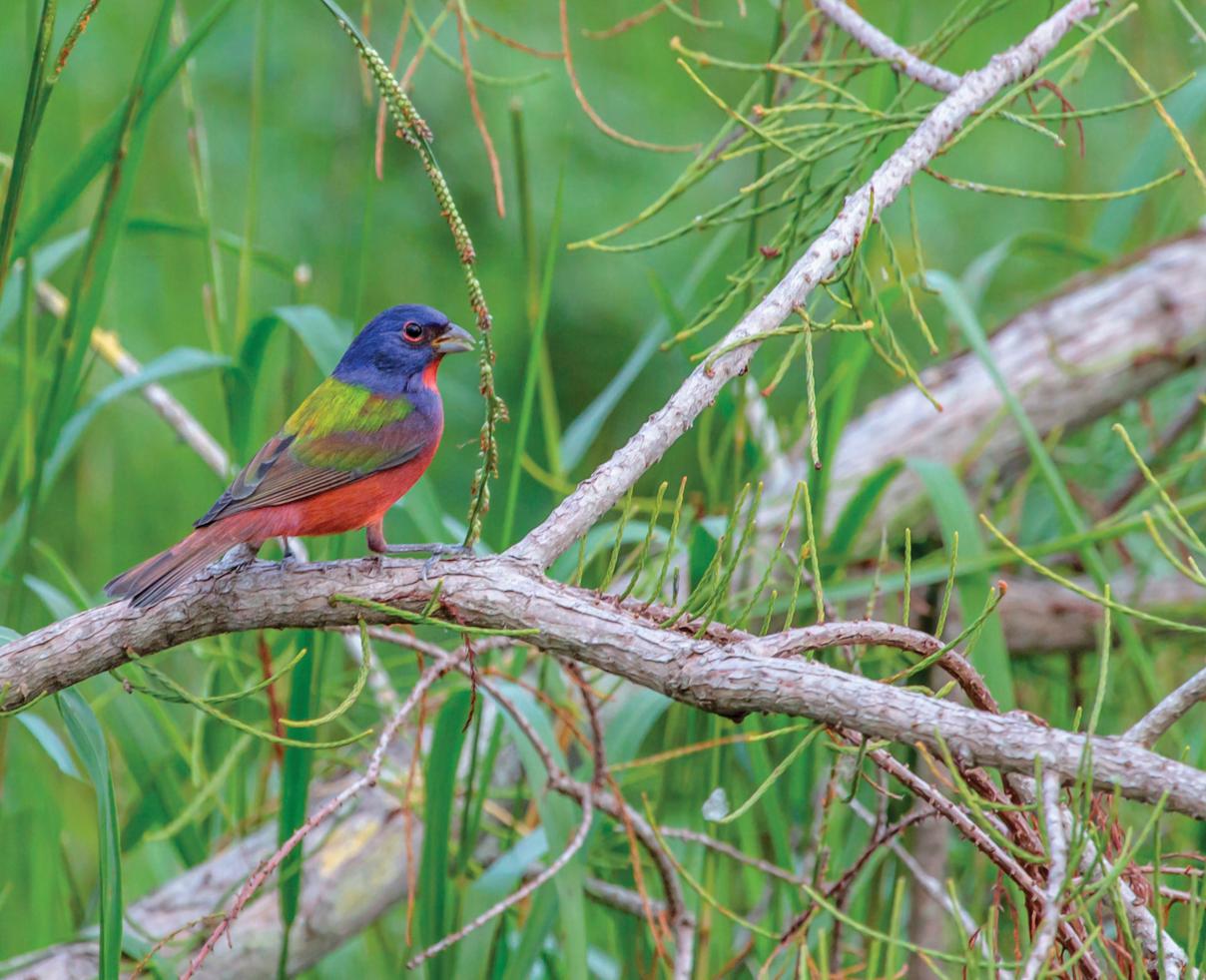 By
By
The beautiful painted bunting calls Sullivan’s their spring home, returning here year after year.
We all know how wonderful Sullivan’s Island is, so much so that if we’re not lucky enough to live here, we come back as often as we can. The same can be said of wildlife. One adult male painted bunting was banded at Sullivan’s Island Bird Banding Station on April 21, 2020, the recaptured on April 21, 2021, and again in 2022. This pattern and the fact that he was recaptured in the exact same place each time indicates that he successfully bred in this location for three years in a row.
The painted bunting is a small songbird with strikingly colorful plumage. Adult males have a blue head, red breast, and a green back with hints of yellow. Their tails are a dark reddish purple. Females and young males are either bright green or a duller tan color with a greenish wash.
There are two distinct breeding populations of painted buntings, both of which are in decline. The Western population centers around Texas and Louisiana, while the Eastern population breeds along the coast from North Carolina to Central Florida. Population declines are attributed to the loss of both breeding and overwintering habitats, as well as illegal capture for the pet trade in the tropics.
Painted buntings are referred to as neotropical migrants because they breed in North America and overwinter in the tropics. For this species, overwintering grounds include Southern Florida, the Caribbean, and Central America. The Maritime Forest and surrounding scrubland on Sullivan’s Island provide excellent breeding habitat. Bird banding data collected from studies in Georgia, as well as on Sullivan’s Island, indicate that adult male painted buntings have a high level of site fidelity to their breeding grounds, which means they return to the exact same locations year-to-year to breed.
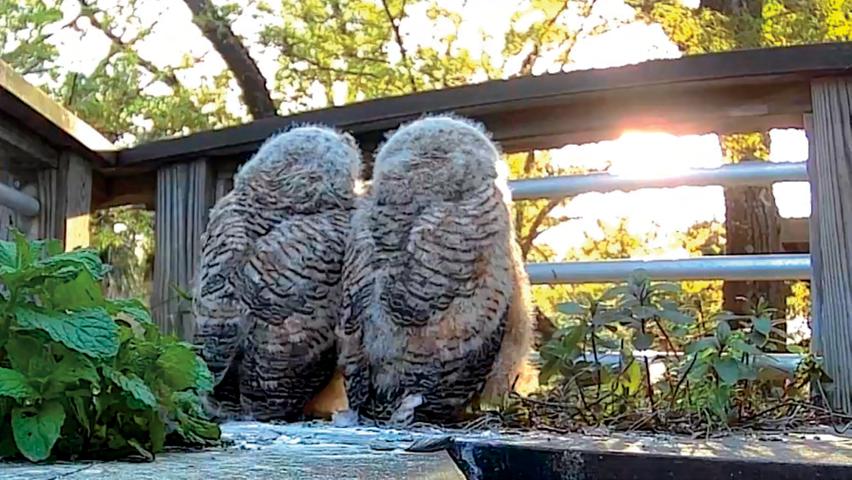

Bird banding and bird count data indicate that painted buntings arrive in the Lowcountry of South Carolina between April 9 and April 26. Males get here about a week before the females. Both males and females have been observed looking for nesting sites, but only females build an open-cup nest. They complete nest construction in as little as two days. In South Carolina, nests usually are built in wax myrtles, but occasionally they are built in oaks. The habitat surrounding the nest usually includes open scrubby land for foraging as well as some taller trees for the males to perch and sing.
A quick ferry from the Isle of Palms brings you to Dewees Island, a private environmental barrier island community where nature inspires you at every turn, where neighbors stop to watch the sunset, and where everything is done with nature in mind. Homes and Homesites available now.
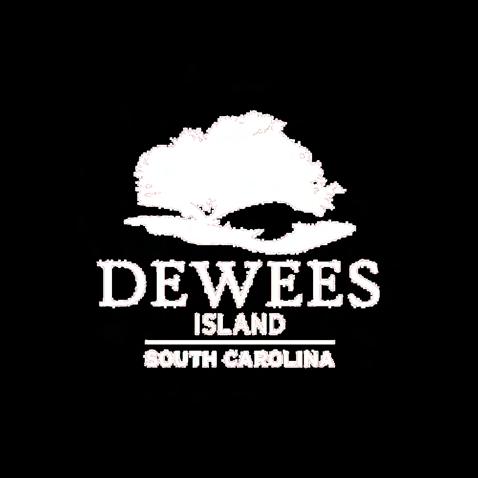
When you need we've got just the spot. A nest with a view,
Order: passeriformes (perching birds)
Family: cardinalidae (Cardinals, grosbeaks, tanagers and buntings)
Scientific name: passerina ciris
Longevity record for a painted bunting (determined through bird banding): 11 years 0 months
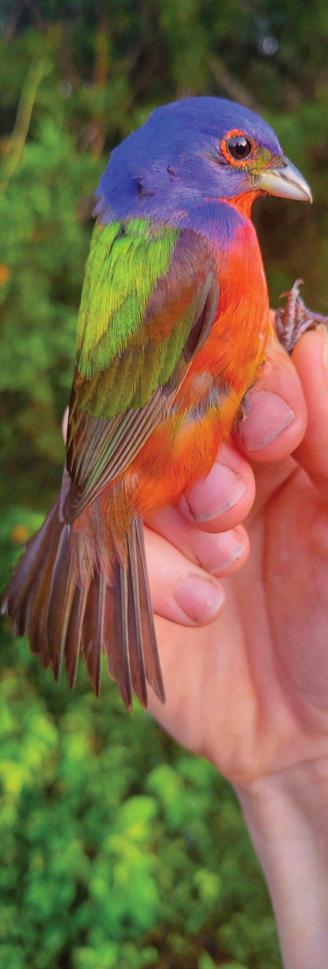
Bird Life International conservation status: near threatened
Listed as a species of concern by USFWS Migratory Bird Program Strategic Plan
Number of birds banded in fall 2022: 746
Number of birds recaptured in fall 2022: 29
Number of species banded in fall 2022: 35
Number of painted buntings banded in 2022: 7
Number of painted buntings recaptured in 2022: 1
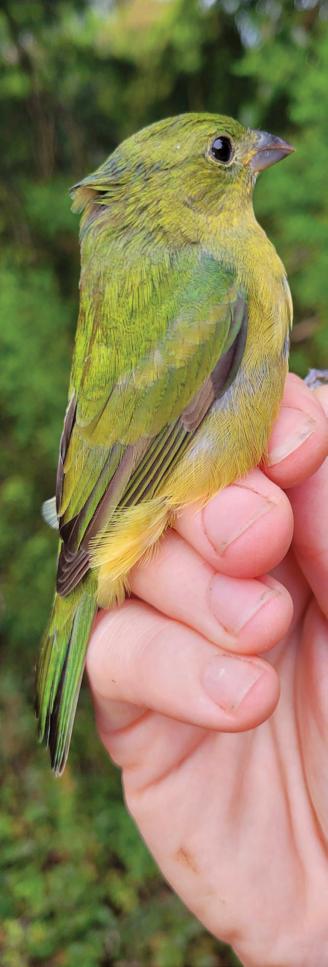
Egg laying commences in late April, and young are raised from May until early August. A typical clutch contains three or four eggs. The fledglings undergo a preformative molt before they migrate south for their first winter.
Bird banders can easily age first-cycle painted buntings because they replace their outer flight feathers and their inner flight feathers during the preformative molt, creating a visible molt limit in the wing. Unlike many other songbirds, painted buntings do not have a pre-alternate molt or breeding plumage.
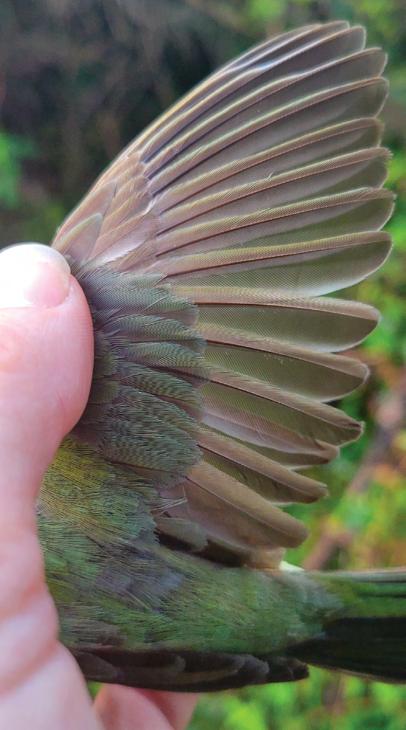
You can attract painted buntings to your feeders by offering them white millet seeds. They are at my feeders from April to early
The distribution of the painted bunting. Yellow are migration areas and orange indicates breeding grounds, including coastal South Carolina. Map courtesy of Cornell Lab of Ornithology.
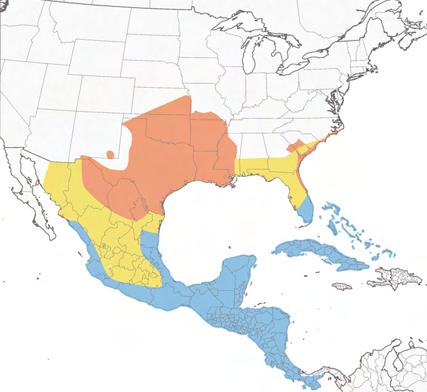
November. I like to put millet seed out over the winter; although the buntings are gone, a lot of other birds enjoy the millet, including red-winged blackbirds, woodpeckers, and chipping Sparrows.
Painted bunting conservation begins in your own backyard. Aside from offering them millet, you can also designate a “wild” area of your yard for songbirds to forage by planting flowers that are native to our region. Some native species that thrive here in the Lowcountry include spotted bee balm, native milkweed (be careful not to buy tropical milkweed), blanket flower, spiderwort, bronze fennel, black-eyed Susan, and partridge pea. SiP
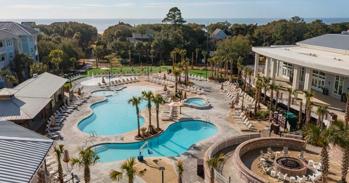
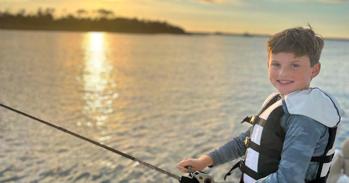


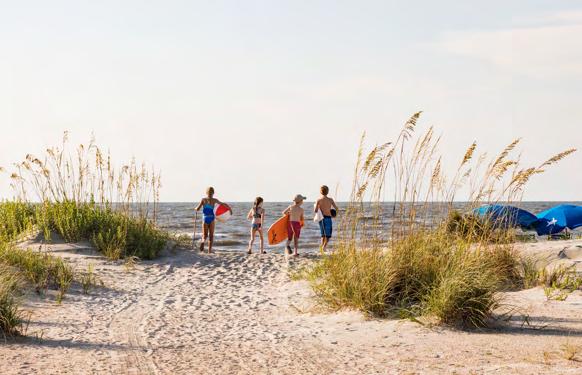
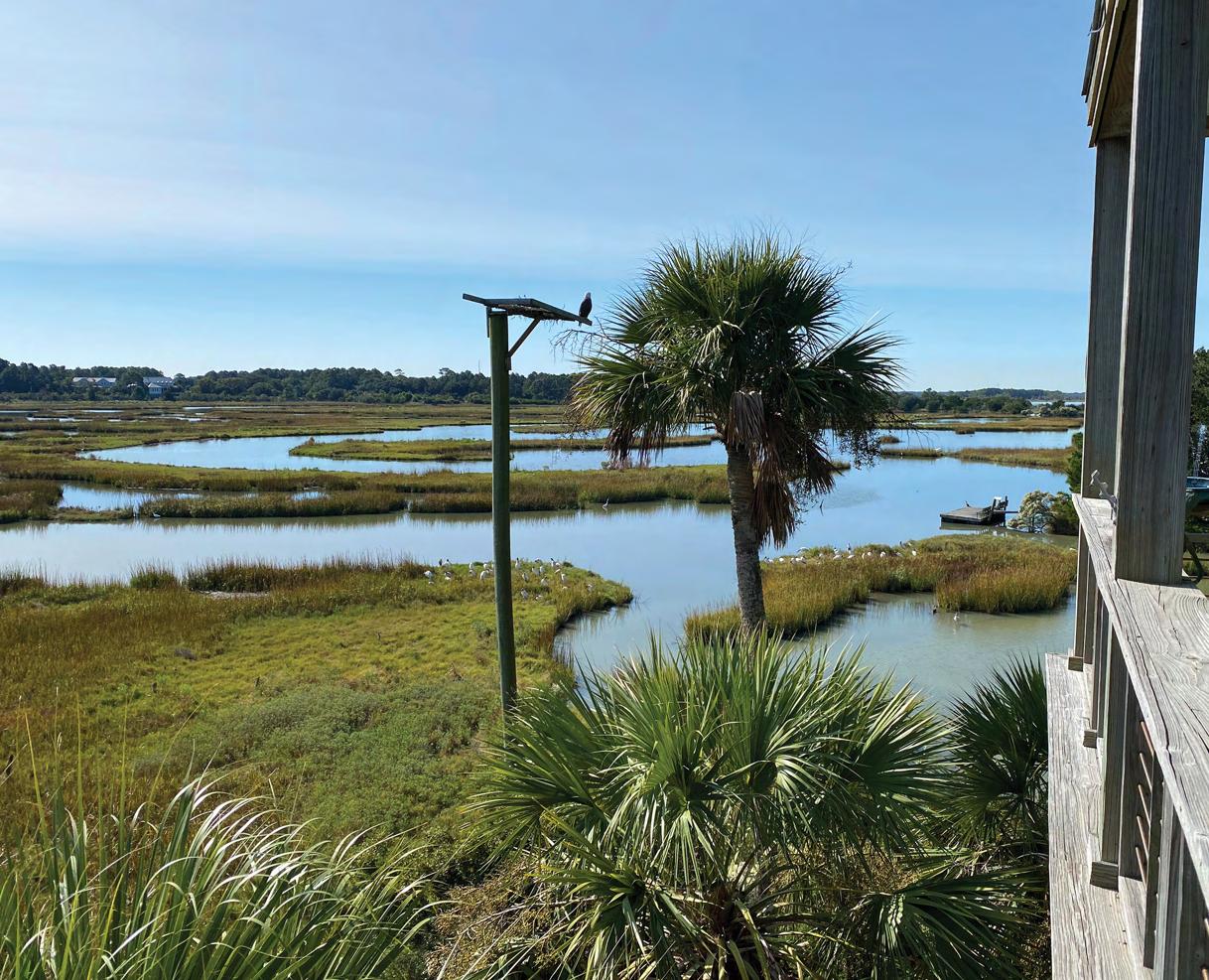
With 60 miles of protected coast to the north, Dewees Island provides the perfect spot for birds of prey to feather their nests — in dedicated places created just for them, as well as a few unusual spaces.
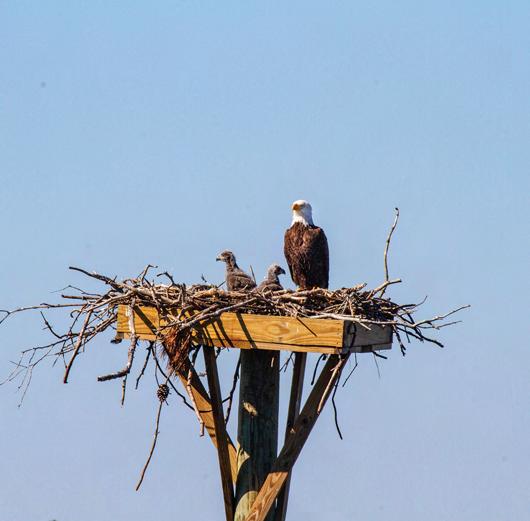
When bald eagles first established a nest on an elevated platform in 2012, Dewees residents were stunned to witness the arrival of a fluffy white chick in late spring. Neighbors watched with delight as the attentive adults fed their chick, cheering when the youngster took flight. That platform is in the middle of the island, with views in all directions, and the eagles have returned each year, even after the platform had to be rebuilt following a lightning strike.
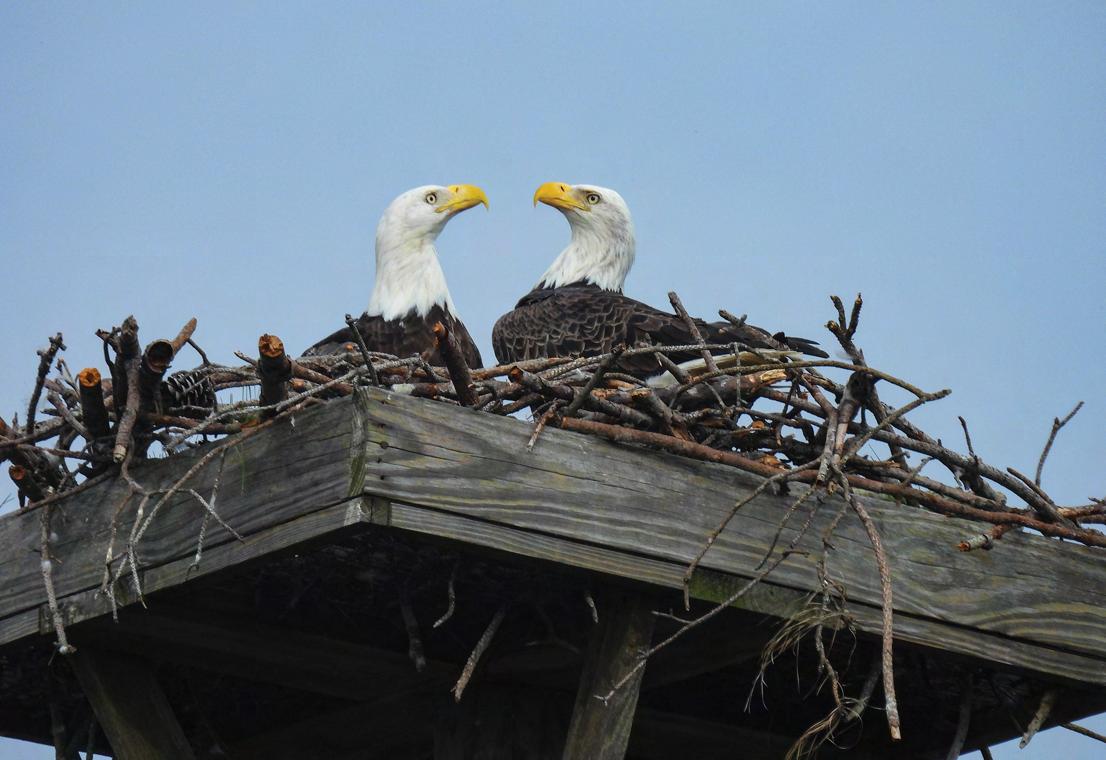

Start with a simple screech owl box; these diminutive friends are comfortable near homes and inhabit nest boxes. You might get a glimpse of youngsters vying for the best view out of the hole. And whenever you hear the crows making a ruckus, look up: They might be sounding the alarm that an owl or hawk is nearby.
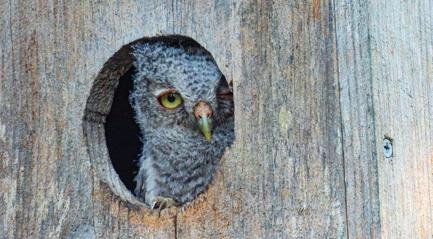
Great horned owls don’t usually build their own nests, instead claiming old hawk and eagle nests. One intrepid avian, however, has a penchant for human structures.Island resident Anne Anderson noticed an egg in her herb garden and then another two. Within days, a huge owl was inhabiting the planter right outside her front door. “We felt like this owl had chosen our porch as her habitat and quickly welcomed her choice by blocking off the front steps and directing guests up the elevator or the back stairs,” she says. “What a treat it is to watch the eggs hatch into fuzzy owlets, and then see them grow into the fierce predators they are.”
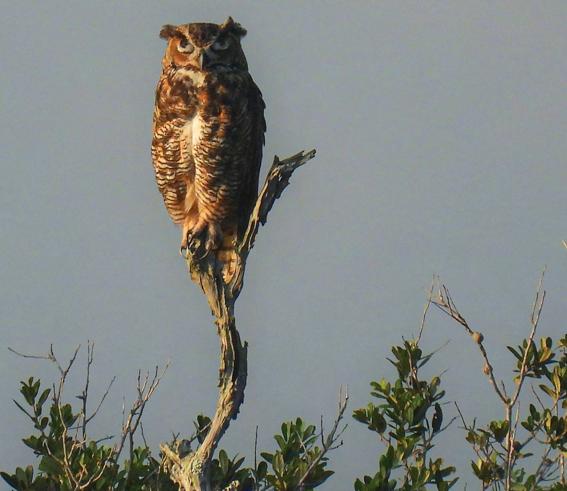
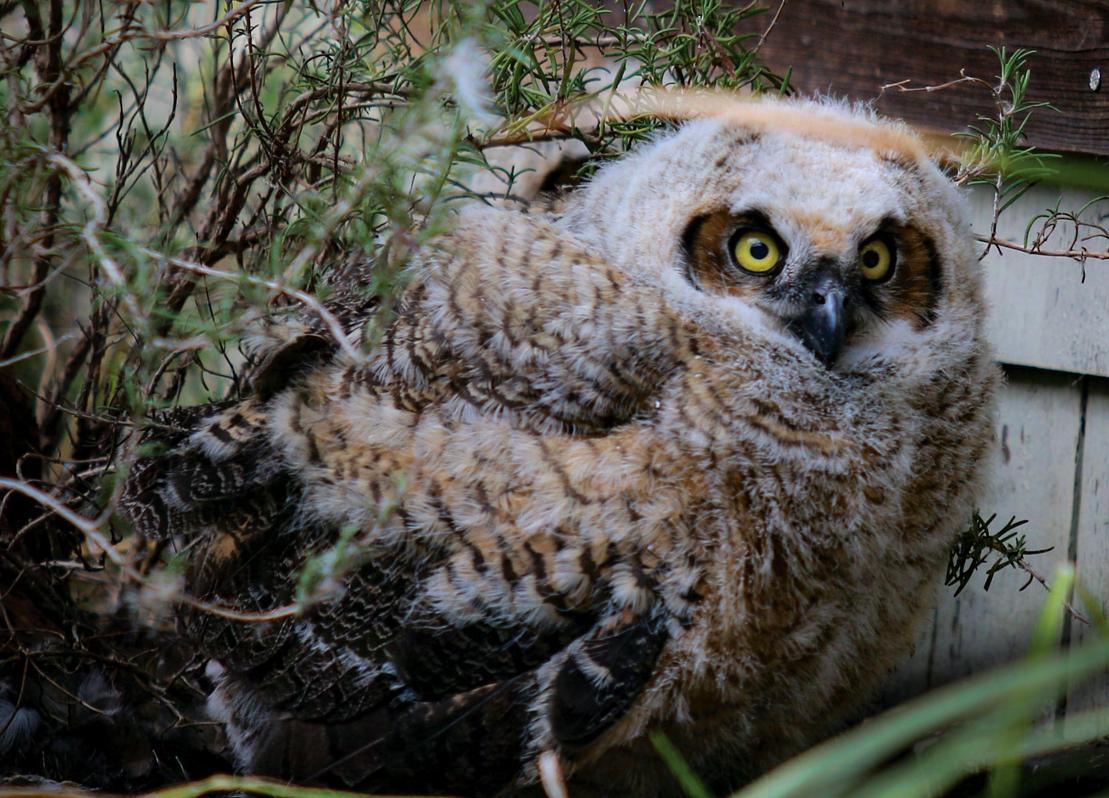
Ospreys have seen such a dramatic rebound since the DDT crisis of the ‘70s that they’ve established nests on almost every suitable site on Dewees. This particular pair sheltered their babies from the late spring sun as they fed them.
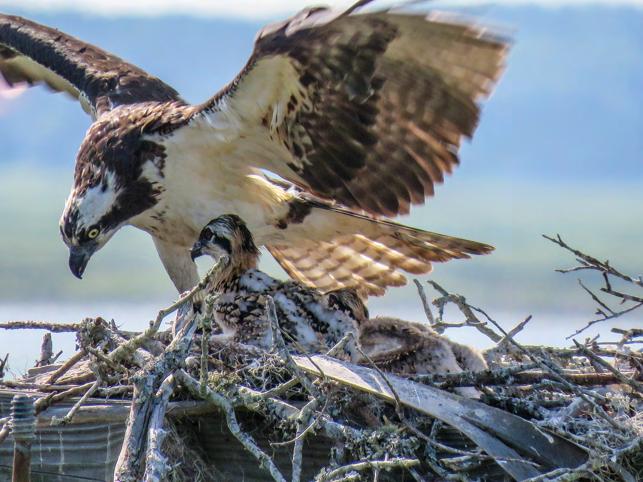
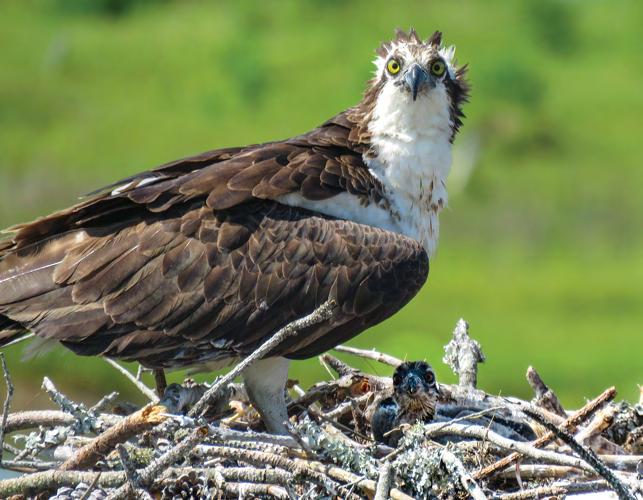

“ What a treat it is to watch the eggs hatch into fuzzy owlets, and then see them grow into the fierce predators they are.
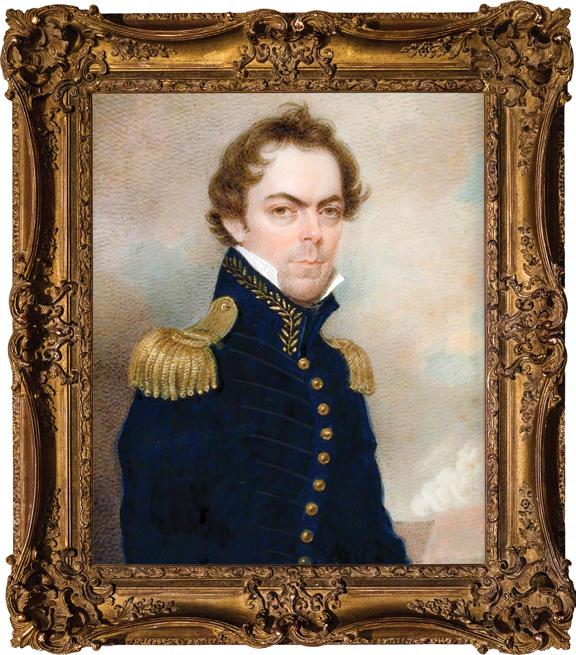 By Mike Walsh
By Mike Walsh
Sullivan’s Island’s history is rich, varied, and deep. And the task of capturing, chronicling, and preserving it partly falls to the Battery Gadsden Cultural Center. First founded in 1992 in the aftermath of Hurricane Hugo, today the Center’s mission statement is “Dedicated to preserving the culture of art and history on Sullivan’s Island.” Following a lull in the mid-2000s, the Center was reborn in 2014 with a new board and new location — part of the old Battery Gadsden building that also houses the Edgar Allan Poe Library.
Occupying a building that shares the organization’s namesake was serendipitous indeed — but led many more people to inquire, “just who is this Gadsden chap?” We asked Mike Walsh, Battery Gadsden Cultural Center board president, to shed some light on the matter.
If you visited the original Battery Gadsden Cultural Center website, you may have noticed a lengthy blog post I wrote in 2014. In it, I followed up on a comment made by one of our members sometime prior to that in which he briefly identified the namesake of Battery Gadsden as being Col. Christopher Gadsden of the 1st South Carolina Regiment, later brigadier general in the Continental Army, and a well-respected Revolutionary War hero. I went on to repeat much of what I had found about Gadsden in the book, Charleston! Charleston!, by former Citadel history professor Dr. Walter J. Fraser. Indeed Gadsden was quite a historical figure. Though perhaps best remembered today for designing what is now known as the Gadsden flag, the yellow
flag with a coiled rattlesnake, and the words “Don’t Tread on Me,” there are many other reasons to remember Christopher Gadsden. He was a wealthy Charleston native and merchant, an American patriot, and an agitator against oppressive British rule. Depending on one’s viewpoint, he was either a friend or a manipulator of the working class. He was both a military and civil leader, although he turned down the election for governor in 1781, citing his poor health from ill-treatment in captivity by the British.
However, he is not the namesake of our cultural center and the facility we occupy.
That’s right. Essentially all the fortifications and artillery batteries that have occupied our island over the centuries have been named for someone famous.
Take, for example, Fort Moultrie, named for Gen. William Moultrie, or Battery Jasper on the National Park Service grounds, named for Sgt. William Jasper, who so bravely retrieved the flag during the famous battle on June 28, 1776.

But the man for whom Battery Gadsden is named isn’t as familiar to most people. When the battery was finished in 1904 as part of the Endicott System of fortifications, it housed four 6-inch guns on disappearing carriages, pretty much state-of-the-art stuff at that time. The War Department must have been looking for other famous Carolinians to name it after.
Who they came up with was Col. James Gadsden, Christopher’s grandson.
Born in Charleston on May 15, 1788, James Gadsden served during the War of 1812 and later under the presidency of Andrew Jackson. In fact, Jackson instructed Gadsden to construct a fort on Prospect Bluff in Florida and later named it Fort Gadsden.
After the Army, he became a railroad executive and later a diplomat. He held some rather outrageous political and social views I won’t go into, but there’s another reason why his name is remembered — the Gadsden Purchase! That was the last addition to the continental United States in 1854 when James successfully negotiated the sale of nearly 30,000 square miles of northernmost Mexico at a price of $10 million. This land ultimately became part of New Mexico and Arizona and today forms a section of the border between Mexico and the United States. James died in 1858 and rests in St. Philip’s Cemetery in downtown Charleston, as does his more famous grandfather.
So if you happen to be down at Battery Gadsden (or in Gadsden, Alabama, Gadsden County, Florida, or Gadsden, Arizona), just remember it’s named for James — not Christopher.

“James died in 1858 and rests in St. Philip’s Cemetery in downtown Charleston, as does his more famous grandfather.The Battery Gadsden Cultural Center is in a building that also houses the Poe Library. A historic artillery battery, it was built in 1906 and is one of a series of batteries stretching from Fort Moultrie to the eastern end of Sullivan’s Island. Photo by Rob Byko. SiP
Sullivan’s Island, October 1718 — David Herriot sat perched atop a windswept dune, scanning the empty horizon while the misfortunes and mistakes of the last six months stewed in his mind. On the beach below him, his companion and fellow fugitive from the law stoked a large fire that had burned for more than a week.
That April, Herriot had been an honest merchant and captain of the Adventure, an 80-ton sloop that sailed from Jamaica, bound for the Bay of Honduras to load cut logwood. Entering the lagoon at Turneffe Atoll (about 30 miles off the coast of Belize) on April 5 to take on fresh water, Herriot spied three ships lying at anchor, which he assumed were trading vessels like his own. But, when the largest of the three vessels fired a shot across the Adventure’s bow and hoisted the black flag, the crew of the Adventure quickly found themselves hauled onto the deck of the 40-gun Queen Anne’s Revenge as prisoners of history’s most infamous pirate: Edward Thatch or Teach — alias Blackbeard.
Blackbeard informed the crew of the Adventure that he had decided to add their sloop to his growing pirate armada and pressed Herriot and his shipmates with the damnable choice of either being marooned at Turneffe or signing “articles” and joining the pirates’ ranks. Herriot fatefully chose the latter and was moved onboard Revenge, the pirates’ smaller 10-gun sloop. It was here that he first met the man with whom he now shared the desolation of Sullivan’s Island — Stede Bonnet.
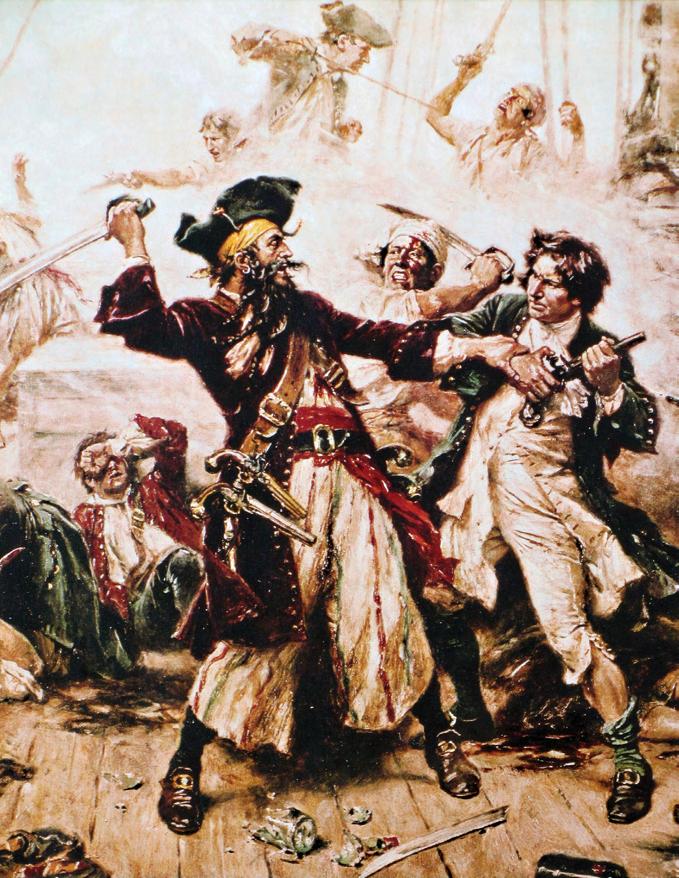
History remembers Bonnet as the “Gentleman Pirate” who enjoyed a “liberal education,” wealth, and privilege from the vast sugar cane plantation he owned in Barbados prior to his descent into piracy. Bonnet’s unlikely career shift in the spring of 1717 began with the unprecedented steps of having his own pirate ship built — the 60-ton Bermuda sloop Bonnet named Revenge — and the hiring of his own salaried pirate crew.
Bonnet proved to be a wholly unsuccessful pirate captain, but a chance meeting with Blackbeard at the pirate refuge of Nassau in the autumn of 1717 launched an unlikely partnership and an eight-month piratical frenzy that took the pair north along the U.S. East Coast, down to the Windward Islands, across the Gulf of Mexico, and into the Bay of Honduras, where the Adventure was taken as a prize, and David Herriot became a pirate.
In the spring of 1718, Blackbeard appeared off the coast of Charleston with a fleet of four ships and a force of more than 400 pirates. In the most brazen act of piracy since Henry Morgan’s 1671 sacking of Panama, Blackbeard paralyzed commerce in and out of Charleston — blockading the city for nearly a week.
Considered by many historians to be the high tide of the Golden Age of Piracy, Blackbeard’s blockade of Charleston was meant to be the swan song of his piratical career, and he sailed north from Charleston, intent on receiving a pardon from the governor of North Carolina. At Topsail Inlet — near present-day Beaufort, North Carolina — Queen Anne’s Revenge ran aground and was lost.
Herriot would later testify that the grounding was intentional and “was generally believed the said Thatch run his vessel aground on purpose to break up the companies, and to secure what moneys and effects he had got for himself.”
Christopher Downey recounts Stede Bonnet’s tale in his books Stede Bonnet: Charleston’s Gentleman Pirate and Charleston and the Golden Age of Piracy

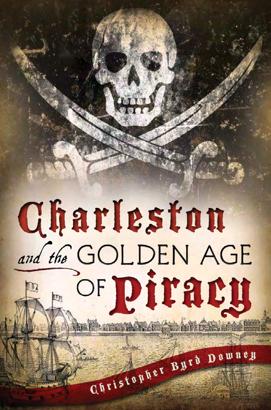
Encompassing roughly the first quarter of the 18th century, the Golden Age of piracy produced some of the most outrageous characters in maritime history. From its earliest days, Charleston was a vital port of call and center of trade, which left it vulnerable to seafaring criminals. The daring exploits of these infamous plunderers made thievery widespread along Charleston’s waterfront, but determined citizens would meet the pirate threat head-on. From the “Gentleman Pirate,” Stede Bonnet, to Edward “Blackbeard” Teach and famed pirate hunter and statesman William Rhett, the waters surrounding the Holy City have a history as rocky and wild as the high seas.
View Downey’s complete works at captainbyrds.com
“
In the spring of 1718, Blackbeard appeared off the coast of Charleston with a fleet of four ships and a force of more than 400 pirates.The October 1718 deposition of David Herriot from Charleston trial of Stede Bonnet and his crew.
Before sailing from Topsail in a small Spanish sloop that had been taken as a prize off Havana a month earlier, Blackbeard marooned Herriot with two dozen others on a sand bank several miles offshore where Herriot described that they, “Remained two nights and one day, and expected to perish…” Rescued by Bonnet and back onboard the Revenge, Herriot had little choice but to return to a life of piracy.
In September 1718, news reached Charleston that a pirate ship lay at anchor in the Cape Fear River in North Carolina. Still stinging from the humiliation of Blackbeard’s blockade a few months earlier, the Charlestonians armed two merchant vessels — the Henry and Sea Nymph — and placed them under the command of Col. William Rhett, with orders to sail north and capture the pirates. On October 3, Rhett arrived back in Charleston with Bonnet, Herriot, and three dozen other pirates “to the great joy of the whole province.”
To avoid the noose, Herriot quickly agreed to testify against his former crew and signed a long deposition describing the pirates’ movements and illegal activities since he was “forced” to join their ranks at Turneffe six months earlier. For his own safety, Herriot was separated from the rest of the pirate crew held at the Court of Guard on the Half Moon Battery (present-day site of the Old Exchange) and was detained in the home of Nathaniel Partridge, the city’s provost marshall, where Bonnet was already confined. But curiously, on the night of October 24, despite having turned state’s evidence that very morning and all but certain of acquittal, Herriot joined Bonnet in a daring escape into the dark streets of Charleston.

Local merchant Richard Tookerman, who had made a fortune from smuggled goods,

“ There was an exchange of gunfire and Herriot was killed and hastily buried in the Sullivan’s Island sand.Stede Bonnet’s flag.
had arranged a canoe and several slaves to paddle Bonnet and Herriot across Charleston Harbor. Landing at Sullivan’s Island, the fugitives’ plan after their bold escape is somewhat puzzling, but the news had reached Charleston a few days earlier that another pirate, Christopher Moody, was now lurking offshore, and it seems that Bonnet’s intention was to signal his fellow pirate to provide rescue.

For more than a week, the pair camped on Sullivan’s Island and fruitlessly tried to signal Moody. The consistent burning of a fire on the almost completely uninhabited Sullivan’s Island tipped off the authorities back in the city, and, on November 8, Rhett led a detachment of soldiers across the harbor and ambushed Bonnet and Herriot. There was an exchange of gunfire, and Herriot was killed and hastily buried in the Sullivan’s Island sand. Bonnet was returned to Charleston to stand trial and four days later was found guilty by Judge Nicholas Trott, who passed sentence, “That you, the said Stede Bonnet, shall go from hence to the place from whence you came, and from thence to the place of execution, where you shall be hanged by the neck till you are dead.”
Bonnet was hanged at White Point on December 10, 1718. SiP

Andrea Hazel’s great-great-great-grandparents arrived on Sullivan’s Island on a slave ship, one as a crew member and the other as a captive. Today the artist preserves the memories of her family and those of others through her art.
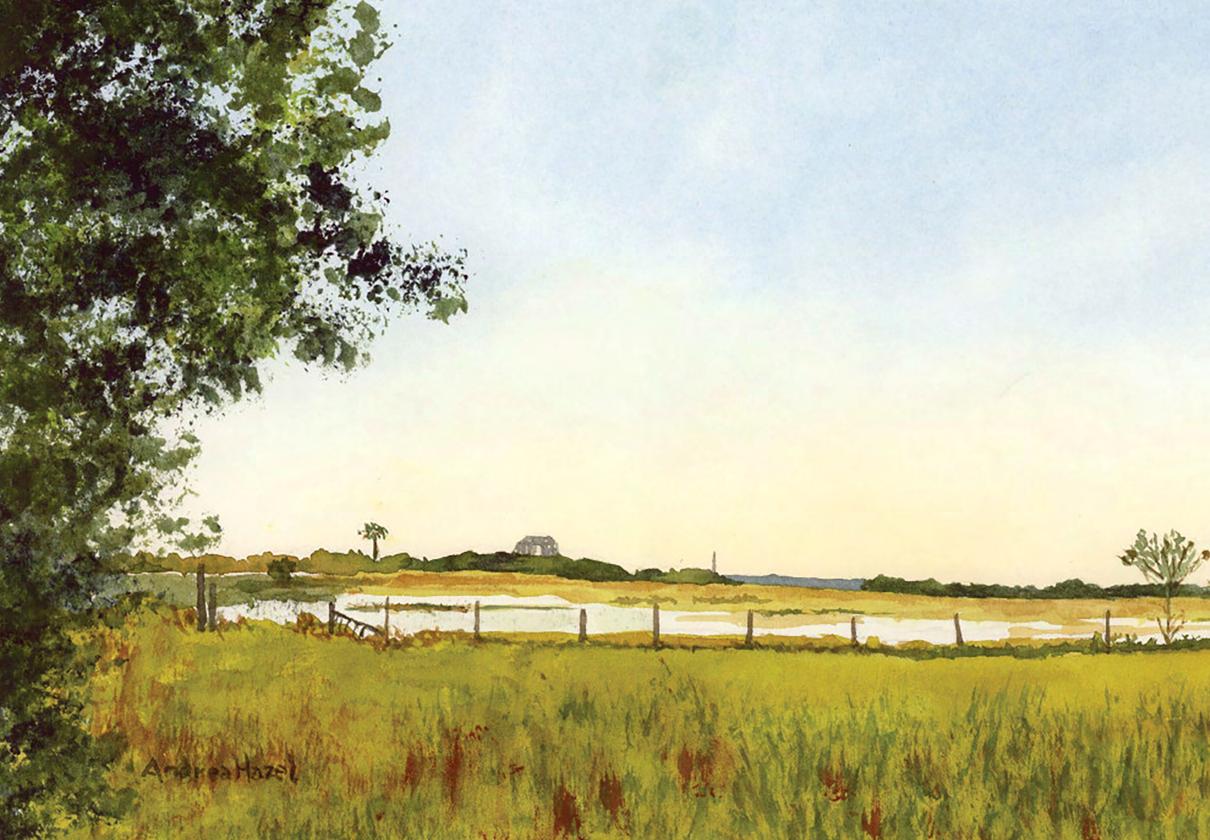 By Marci Shore Photos by Rob Byko
By Marci Shore Photos by Rob Byko
Andrea Hazel, 74, was gifted a set of watercolor paints when she turned 53, sparking a new passion. Her boyfriend, Frank Hamilton, surprised her with a starter set when they were on their first trip together, to Edisto Island.
Hamilton thought it might help Hazel slow down and decompress. She had been teaching math at Trident Tech since 1975 and worked weekends as a wedding photographer. The two careers were surprisingly similar. “You just smile a lot and tell people what to do and use your charm and humor to get grumpy old men to get in there for the pictures,” Hazel says with a laugh, seated by the window in Saffron restaurant in downtown Charleston, her hot tea in front of her and bright, winter sun shining in from behind.
Hamilton, to whom she has been married for 16 years, has a military background and remembered that Eisenhower and Churchill both painted to relieve stress. “I thought if it helped them, maybe it would help her,” he says. “I knew she already had the eye and perspective from her years of photography. I simply presented her with the opportunity.” While he thought she might dabble to relieve stress, “She didn’t just take the opportunity; she blew the door off opportunity,” he says.
The Little House, pictured left and painted below by Hazel in her work The Back Lot, is a two-room cottage built Hazel’s grandfather, Allen Perry “A.P.” Jones. Both it and the main house, also built by A.P. in 1902, still stand and remain in the family. A carpenter, A.P. worked on many houses on the island.
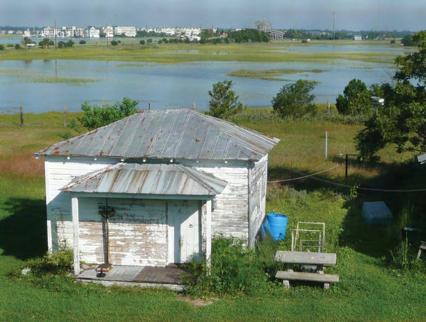
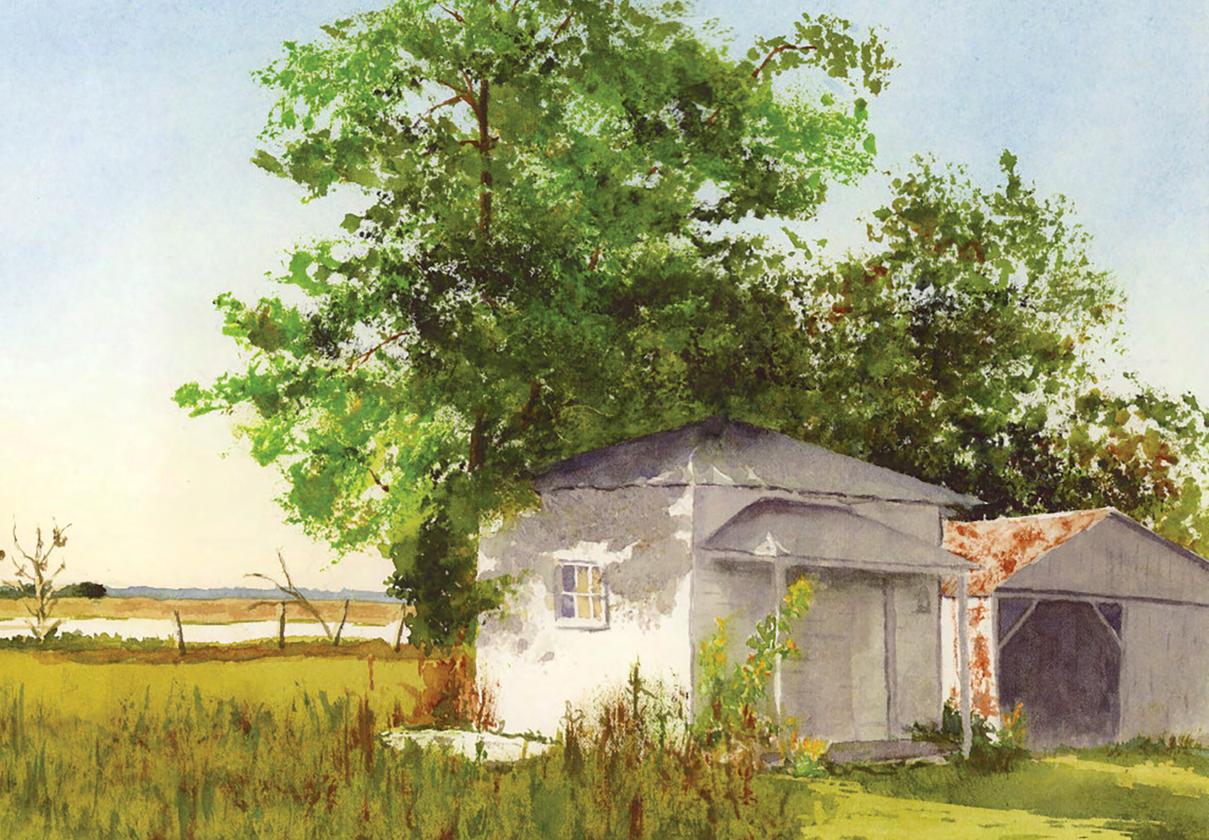
Five years after receiving the watercolors, she held her first exhibit Around the World in Watercolour, at the Georgina Arts Centre in Sutton, Ontario, Canada, and since then has appeared in nearly 40 exhibits. She was awarded Coastal Community Lowcountry Artist of the Year in 2011. And in 2020, her exhibit, How It Was — in 1963, premiered at the Gibbes Museum of Art, an institution she was prohibited from visiting as a young Black girl during the era of segregation.
The collection features watercolor and ink paintings of homes in the downtown Charleston neighborhood off Ashley Avenue, where she lived as a young girl. Most of the structures she painted were demolished when the Crosstown Expressway was built in 1968, and the works share a similar muted color palette, the intent being for them “to look like memories,” she says. Her paintings were drawn from photos she discovered in 2015 in the South Carolina Digital Library archives, taken when engineers were making plans to build the road. Completed in 1968, the Crosstown unified U.S. Highway 17, which originally stopped at the Ashley and Cooper Rivers and required drivers to navigate through downtown city streets.
Dozens of Black family homes were removed at the time and only existed in memories until Hazel brought them back to life with her ink and watercolor collection.
The art of building and preserving has been passed down through generations of Hazel’s family. Her father was a restoration carpenter
Historical photos of Hazel’s family on Sullivan’s Island over the years. Below is the family in 1914. Standing in the back row on the left is Mary Elizabeth Peter Pezant, Hazel’s great-grandmother and the granddaughter of Frenchman Vincent Peter and his African wife Betsey Peter. Next to her are her daughter and son, Rosa Florence Pezant and Arthur Pezant, and her son-in-law, Hazel’s grandfather, Allen Perry Jones. The woman seated is Hazel’s grandmother, Maggie Pezant Jones. Her children around her are, left to right, Alma, Alfred, Louise, Allen and toddler John.
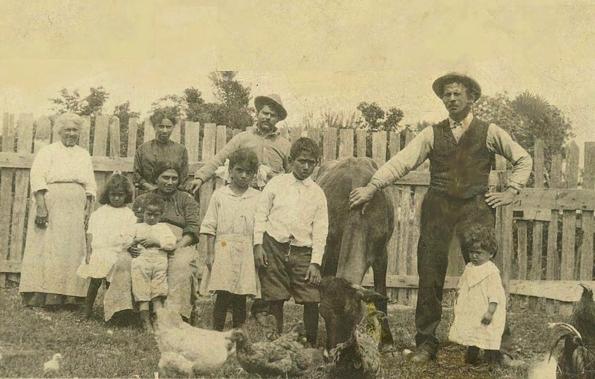
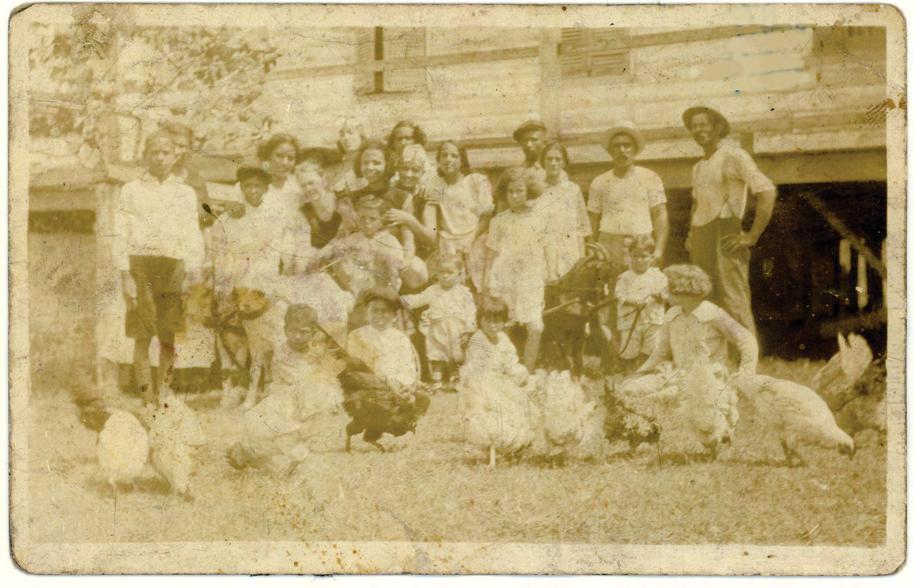
who worked on many downtown Charleston homes. Her grandfather was a carpenter on Sullivan’s Island who worked on many of the structures at Fort Moultrie.
Sullivan’s Island is where her American story starts, with the arrival of a slave ship around 1802. Among the passengers were a white Frenchman named Vincent Peter and an African girl, given the name Betsey (her African name was AhOu). By the time the ship made its way to South Carolina, Vincent and Betsey had a 2-year-old child. Though Hazel has yet to determine the route the ship took from Africa to South Carolina, the timeline coincides with the Haitian Revolution against French colonial rule, when thousands of refugees flooded into the Lowcountry, and she speculates the ship may have come from that area.
The family story is that Betsey, or as the family called her, AhOu, was the daughter of an African dignitary who was only on the slave ship to buy European goods. The vessel set sail while she was onboard, and though she attempted to buy her way off the ship with gold she had stashed in her handkerchief, she never made it back onshore to her African family.
The couple settled on Sullivan’s Island, where they had three more children. Vincent and Betsey’s offspring were all born free citizens, married other freed people, and lived on Sullivan’s Island. According to family history, Hazel says “Betsey was very particular about who her children associated with, as they were free people of color, and it was imperative that they not be confused as slave children and liable to be kidnapped into slavery.”
The couple’s great-granddaughter, Maggie
Andrea Hazel was the official photographer for the first Spoleto Festival, in 1977. With no photography experience, she bought a Canon 35mm and took photos for that first festival to help generate interest in future Spoletos. She recalled looking through the camera viewfinder. Her mind said “Click, I can do this.”
Hazel earned a bachelor of arts in mathematics from Marymount College in Tarrytown, New York, and a master of education in counseling from The Citadel. She also studied studio art at the College of Charleston.
Hazel’s grandfather, Allen Perry Jones, a carpenter, built the house around 1905. He worked on many houses on the island, including some in Fort Moultrie. Jones had been a soldier in the Spanish American War.
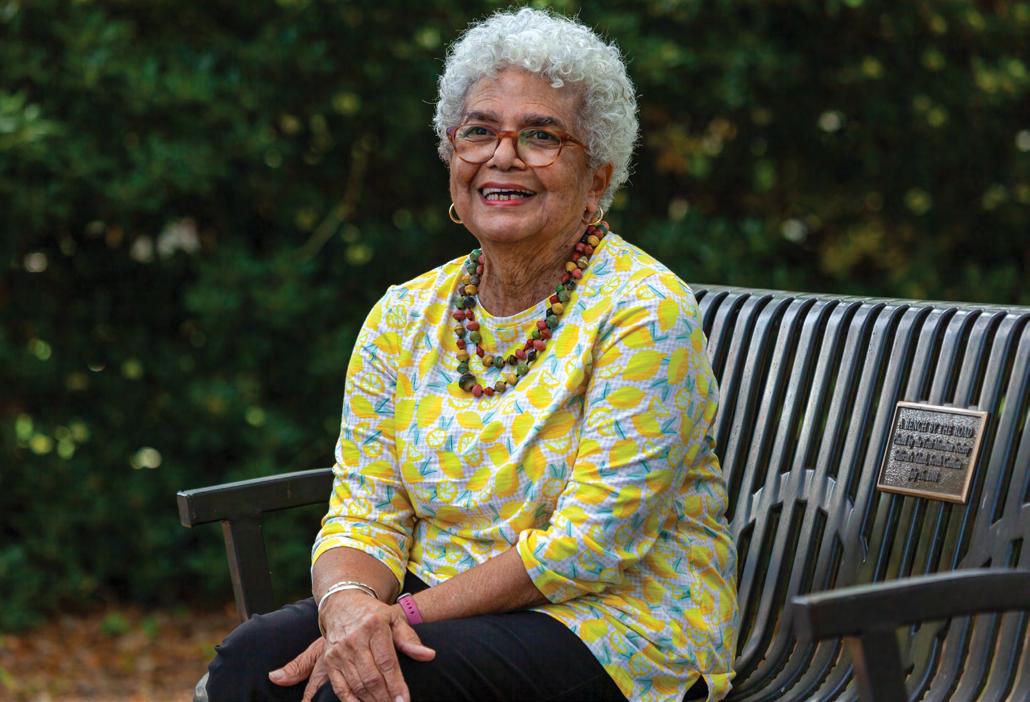
Hazel’s most recent exhibit, How It Was — in 1963 features paintings of homes in the downtown neighborhood of her youth. Many of the paintings were drawn from photos she discovered in the South Carolina Digital Library archives, taken when engineers were making plans to design and build the Crosstown Expressway. Dozens of Black family homes were demolished when the Crosstown was built and only existed in memories until Hazel brought them back to life with her ink and watercolor collection.
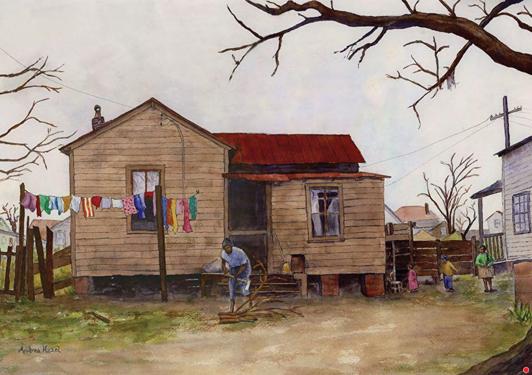
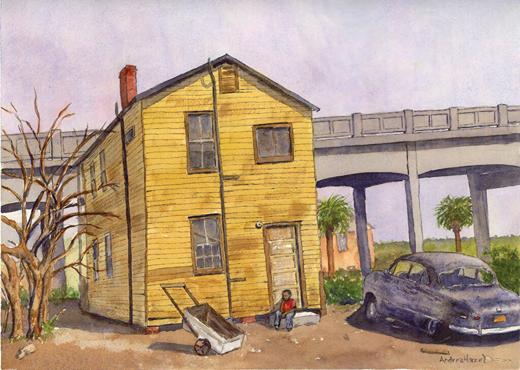
(Hazel’s grandmother), married Allen Perry “A.P.” Jones, and they built a house around 1902, raising 10 children on the back creek of Sullivan’s Island. The house still stands and is owned by the family.
In 1989, as Hugo was bearing down on Sullivan’s Island, Hazel’s brother, Walter Hazel, and uncle, Alfred Jones, were hunkering down in the house, refusing the mandatory evacuation order. “If it was going down, they were going down with the ship,” she says. She remembers entire houses being wiped away and the island being unrecognizable. But, remarkably, they were able to use their landline telephone during and after the storm.
Her brother was injured by flying debris when he went outside, and some of the tin roof came off during the storm. But, otherwise, the house their grandfather had built with his own two hands survived relatively unscathed. Since A.P. was a carpenter and was able to buy excess building materials, much of what he used to build the house came from the same stock as homes built within Fort Moultrie.“The house is elevated, but they said they could hear the ocean lapping underneath the floor,” she says. Hugo brought a 12-foot storm surge when it made landfall.
As soon as the storm passed, her uncles, John and Arthur Jones, rushed to the island in a boat since the Ben Sawyer Bridge was in pieces. Her three uncles, all in their 70s, were immediately up on the roof hammering until the National Guard came by and ordered them to leave. Hazel and her sister, Rovena Hazel Owens, were in the first car back on the island when the bridge reopened two weeks later, anxious to get to work cleaning up the property.
The house, visible just off the causeway as you enter Sullivan’s Island, is what the family describes as their ‘True North.’ “It’s something we all have in common. The swing under the house is the same one I used when I was young,” Hazel says, remembering “grand old days” of watching sunsets on the back beach, eating wild plums, tying matchboxes to fiddler crabs, and watching them pull them, and getting boats into the Intracoastal Waterway by pushing them through the marsh in a wheelbarrow. “Black girls weren’t supposed to be on the beach, but we went,” she says. “We would usually go in by the lighthouse. It was actually safer to play in the back creek, though, since the water only got knee-high. There were many more Black families on the island back then. Most of them were on the back side.”
The Sullivan’s Island of her youth in the 1950s included days of sliding down The Mound on cardboard boxes and getting respite from the summer heat in the bamboo groves at the base of the former Army ammunition store. Nighttime might include walking through the echoing concrete walls of Fort Moultrie, carrying candles and making ghost noises. The fort was abandoned for a period of time and had fallen into disrepair.
Even though Hazel grew up and lived in downtown Charleston, Sunday always meant visiting the Sullivan’s Island house. It still does. It’s where they go to celebrate and where they grieve, remember, and honor their grandmother Maggie’s wish.
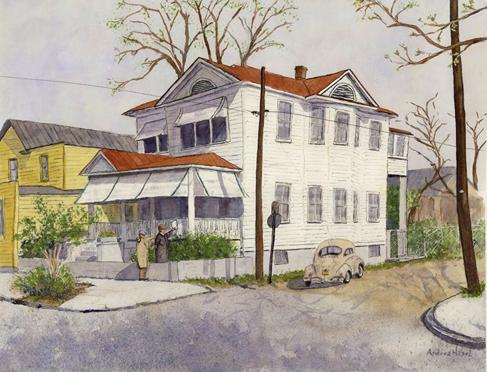
“She begged us to save the house,” says Hazel, the oldest of six children and relatives of A.P. and Maggie Jones who have gathered at the house through the years, including 33 grandchildren and 70 great-grandchildren. “We want to share the experience. It creates a stronger family having this common bond. It gives every family member and every cousin — from aunts and uncles who have died to cousins in Seattle, New York, California, and everywhere in between — a magnetic north. This is the place they can come and be ‘home.’ That sense of belonging and wholeness is the value of the house and the property — it’s not a monetary value.” SiP SiP
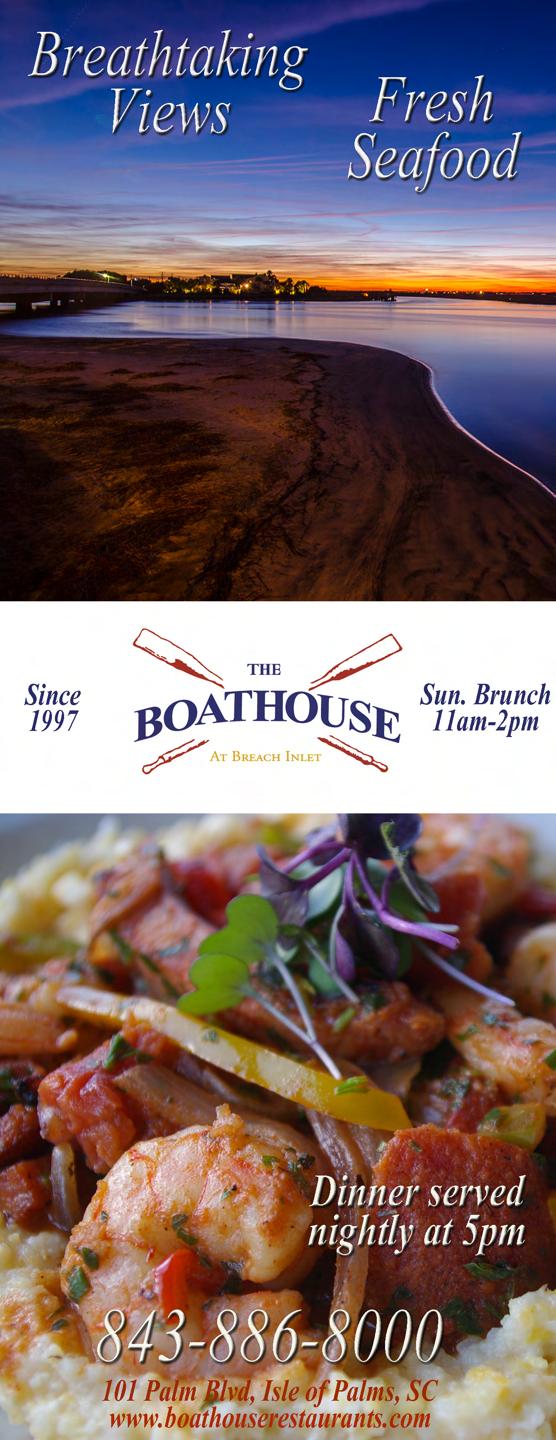
Master naturalist and island native Derek Wade, explains how to care for your island gardens for the benefit of all living creatures.
 By Carol Antman. Photos by Rob Byko
By Carol Antman. Photos by Rob Byko
Derek Wade describes his flourishing garden on Sullivan’s Island’s I’on Avenue as “a work in progress,” but it’s much more than that. It’s part of an expansive vision to link renewed landscapes from across the country into a system of Homegrown National Parks. Together these small and large tracts will comprise an area larger than all our national parks combined. They will multiply the amount of protected land in the United States and address some of our most pressing ecological concerns.
Sitting on the immense screened porch of the Wade family’s beach house today, it’s hard to picture what it looked like in 1963 when his parents, Harold and Jean, came from Brooklyn and bought it. (“For $8,000, including termites.”) The house had no heat nor air conditioning, sat on the ground, and had a barren yard. The ocean breeze blew through, unimpeded by neighboring houses. They named it “Jubalee” to commemorate Derek’s mom’s role in a performance by local theater troupe The Footlight Players.
Throughout his childhood, the family spent many happy summers in this “sleepy little place” until Derek began his mechanical engineering career in other states. After Hurricane Hugo in 1989, the house was left ravaged, and the city needed revitalization. At around that time Derek became disenchanted with life in the corporate world. He and his wife, Kathy, moved the family in with his parents and he joined his father’s company, Carolina Landscape.
During the ensuing years, the company designed and planted landscapes at many venues, including Grace Church downtown, Bishop Gadsden on James Island, and more than 80 properties in the I’On community in Mount Pleasant. Derek became a master naturalist through Clemson University and followed the evolving science of regenerative gardening with increasing interest. By the time the company was sold in 2018, he was passionate about the need to “stop fighting nature and start using nature.”
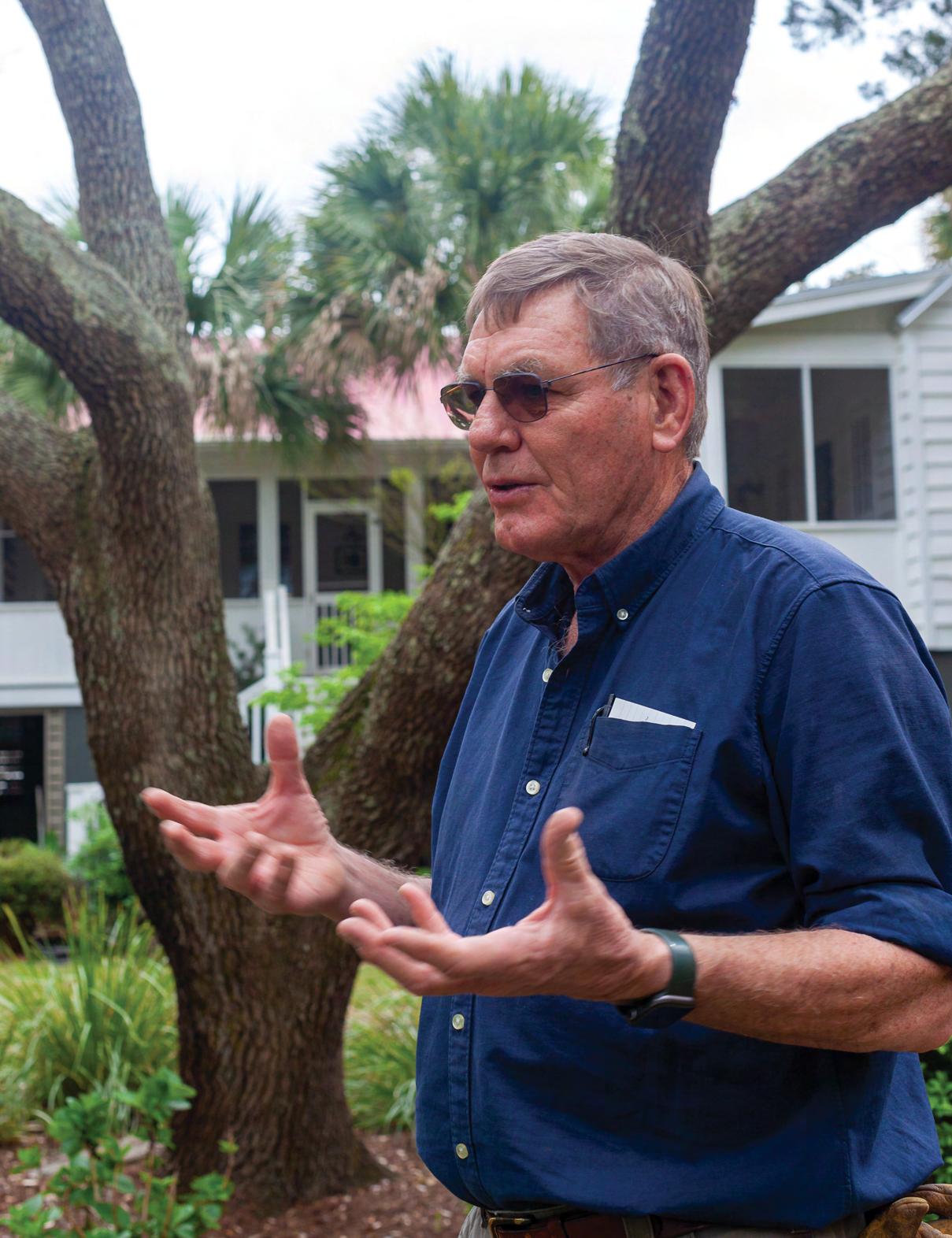 Derek Wade at his family home on Sullivan’s. He enjoys sharing his passion and knowledge of regenerative gardening with the community.
Derek Wade at his family home on Sullivan’s. He enjoys sharing his passion and knowledge of regenerative gardening with the community.
Doug Tallamy, an entomologist and ecologist who is one of Derek’s greatest influences, points out that North America has lost 3 billion birds in the last 50 years. He is alarmed by what he calls ‘the insect apocalypse.’ But his idea for Homegrown National Parks has ways that any one of us can affect positive change through renewed landscapes. It’s fundamentally about supporting food webs: the symbiotic connection between trees, insects, birds, seeds, and water that have evolved over thousands of years.
For example, Tallamy and his graduate students have shown that each oak tree that grows along the East Coast can support 400 different species of insects. Since 7,500 caterpillars are needed to feed just one clutch of chickadees, oak trees are essential to sustaining the environment, a “keystone species.”
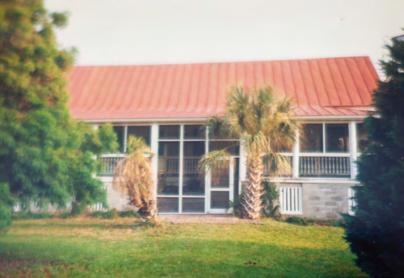
Derek’s well-mulched beds are full of fallen leaves and ground-covering plants that provide breeding grounds for the insects that feed the birds that scatter the seeds that grow the plants that clean the air and perpetuate the cycle. He ignores dandelions and other “weeds” so they can anchor the topsoil that
is being lost at an alarming rate. As root systems grow, plants capture carbon from the air, which addresses climate change. “Sequestering carbon in the ground is the most promising idea I’ve heard,” Derek says. Since grass anchors the soil, he includes some but advocates shrinking lawns to a smaller portion of a larger garden plan. He eschews the use of insecticides and enriches every hole with compost as he plants. Insects and worms are actually “the little things that run the world,” Tallamy says. So we must “suppress the wish to squish and stop the rush to crush.”
An essential part of regenerative gardening is the use of native plants and the elimination of invasive species. “Ninety percent of insects that support food webs can only develop on plants with which they share evolutionary history,” says Derek.
So, although our culture values tidy yards with lawns big enough for huge displays of Halloween decorations, ecological functionality is what really should matter.
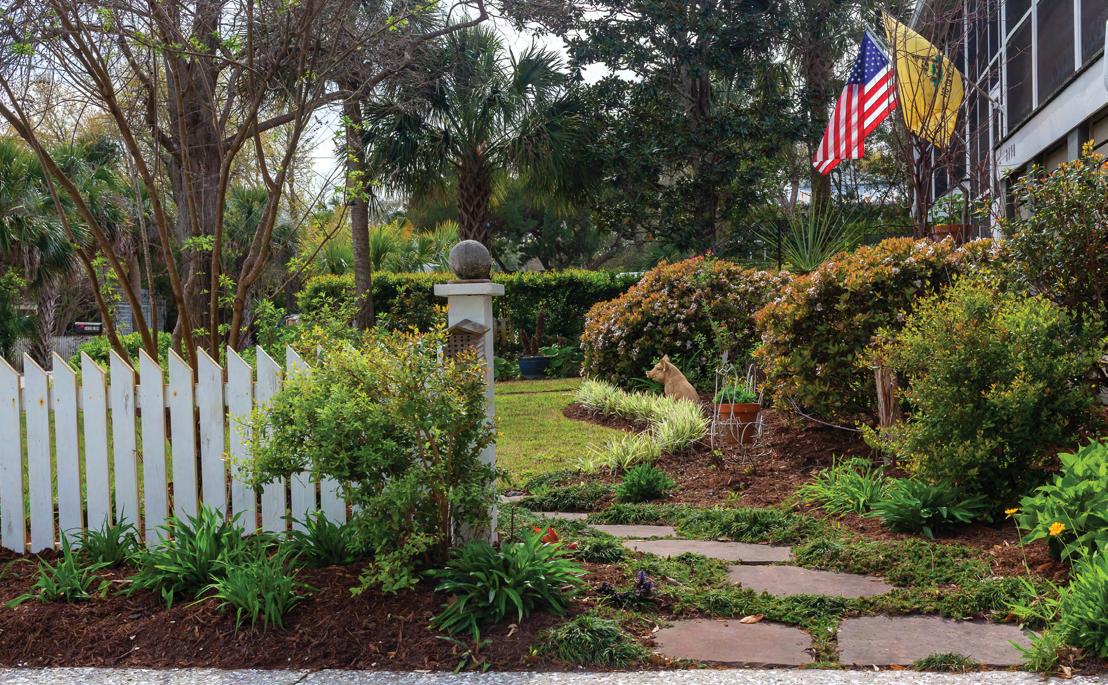
Communities of native plants, selected for the insects they attract, work together by enticing pollinators that are responsible for
Derek Wade’s parents bought his family home on Ion Avenue in 1963 ‘For $8,000, including termites.’The lush entrance to Jubalee today contrasts with how the house looked in the ‘60s (left).
1
Quit spraying herbicides and insecticides.
2
Don’t use synthetic fertilizer; feed the ground, not the plants.
sustaining food crops and flowering plants. Invasive species have no natural predators, so they displace communities of native plants and the animals that depend on them as they destroy habitat. Large swaths of land with diminishing numbers of native plants have created food deserts for birds and insects. Even in Sullivan’s Island’s lush accreted land, invasive species present a problem by threatening to overtake native plants that support wildlife, especially migrating birds.
Today, Jubalee is beautifully renovated: raised a bit, equipped with heat and air conditioning, surrounded by lush gardens, tall trees, and a show-stopping angel’s trumpet tree. Derek calls himself “a budding naturalist,” but he’s really much more than that. As he enjoys his busy retirement tending his yard, designing a few landscape plans, and sharing his passion for regenerative gardening, he’s part of a powerful vision that re-imagines the way we live with nature. It’s a mighty quest that he handles with grace and modesty: “My job is to make the world more beautiful, one garden at a time.”
3

Cover bare dirt with mulch or ground cover.
Get rid of invasive species.
Some of the most threatening invasives in South Carolina include the Bradford pear/callery pear (Pyrus calleryana), tree-of-heaven (ailanthus altissima), Chinese wisteria (wisteria sinensis), privet (ligustrum spp.), kudzu (pueria lobata), Japanese honeysuckle (lonicera japonica) and English ivy (Hedera helix).
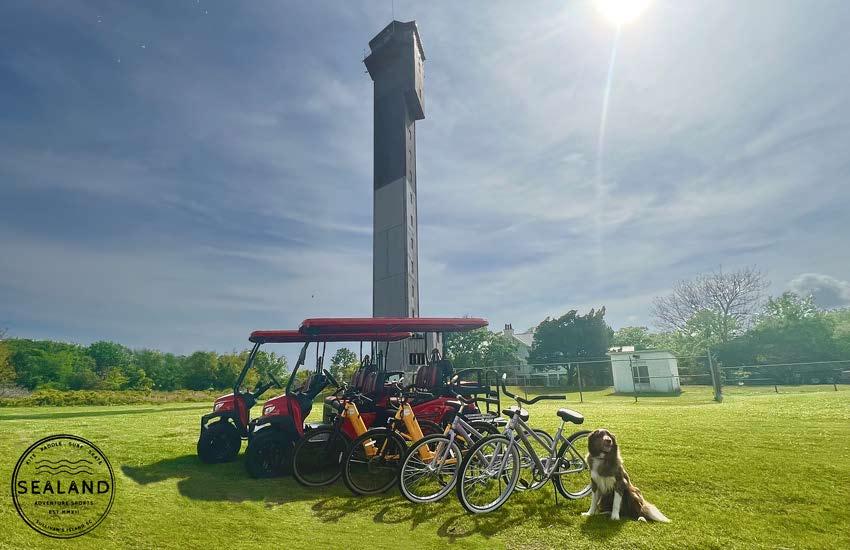
“
Insects and worms are the little things that run the world. We must suppress the wish to squish and stop the rush to crush.
Golfers who regularly traverse the fairways, greens, and sand traps of the two Wild Dunes golf courses have no doubt been well-aware for some time that prostate cancer is one of the most prevalent and most deadly cancers among American men. Some in the tightknit golfing community were dealing with the disease, while others had already fallen victim to its voracious appetite.
It took a request for help to encourage members of the Wild Dunes Men’s Golf Association to become warriors in the battle against an affliction that is expected to directly affect nearly 300,000 men in the United States this year. “We were approached by a women’s group to do a thing for breast cancer,” says Stuart Bascomb, who served as director of the first WDMGA Annual Golf Fundraiser in 2014. “At that point, I had come out of recovery from prostate cancer. More important, Bob Minton, a great guy, was in the throes of what consumed him — prostate cancer. This is our breast cancer, so to speak.”
Minton succumbed to prostate cancer during the fundraiser’s initial year. His son, Jeff, now the director of golf at Wild Dunes Resort, says the first tournament was a one-day event with a small live auction and a speaker from the Medical University of South Carolina.
Members were encouraged to bring a guest, and the day’s activities raised “three or four thousand dollars” for the fight against prostate cancer, says George Roth, who was president of the WDMGA at the time. “We were thinking maybe we should do something like put on a good tournament and make some money,” says Roth. “I threw it to the WDMGA board. They met at Calder’s Pub in Mount Pleasant and Stuart Bascomb wanted to run it. Stuart became the heart and soul of the tournament, and Bob Minton was the face of it.”
Nine years later, the WDMGA’s Annual Charity Fundraiser, originally held in August but now on the calendar in May since 2016,
A close call and a lost father inspire a men’s golf association to raise more than $800,000 over the past decade to fight prostate cancer. And the fight isn’t over yet – not by a long shot.
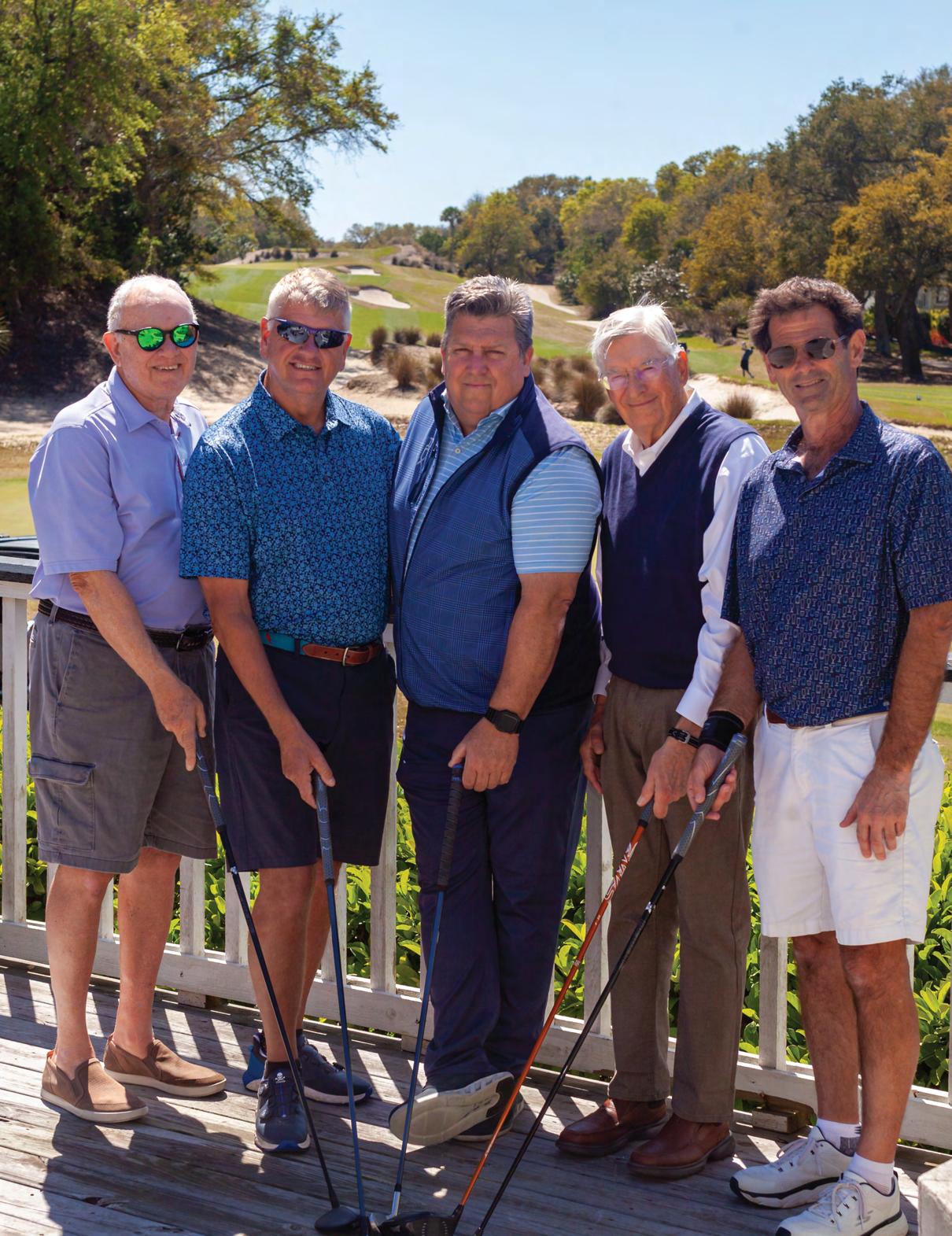
“
It’s so special in terms of fundraising. It’s the most important thing we do.
–Mike Gollobin
has achieved legendary status. “It’s the largest single event in our golf program,” says Chris Conway, who serves as vice president of sports initiatives for the California-based Prostate Cancer Foundation and also makes the trip from the West Coast to the Lowcountry each year to play in the WDMGA tournament. “I would say that if the numbers hit like we expect, the total raised will be in the top five of all our events.”
Conway points out that an estimated 288,300 men will be diagnosed with prostate cancer in the United States in 2023, that it will kill 34,000, and that 1 in 8 men will suffer from the disease during their lifetime. The WDMGA is making a difference in the fight to reduce those numbers. The first nine tournaments raised more than $800,000 for the PCF, including over $300,000 in 2022. As the 2023 event approached, the possibility was on the horizon that the WDMGA could equal or even surpass its nine-year total in a single
The 10th Annual Wild Dunes Charity Golf Fundraiser, benefiting the Prostate Cancer Foundation, is Saturday, May 13, 2023, at the Wild Dunes Links and Harbor courses. Visit wdmga-pcf.org for more details.
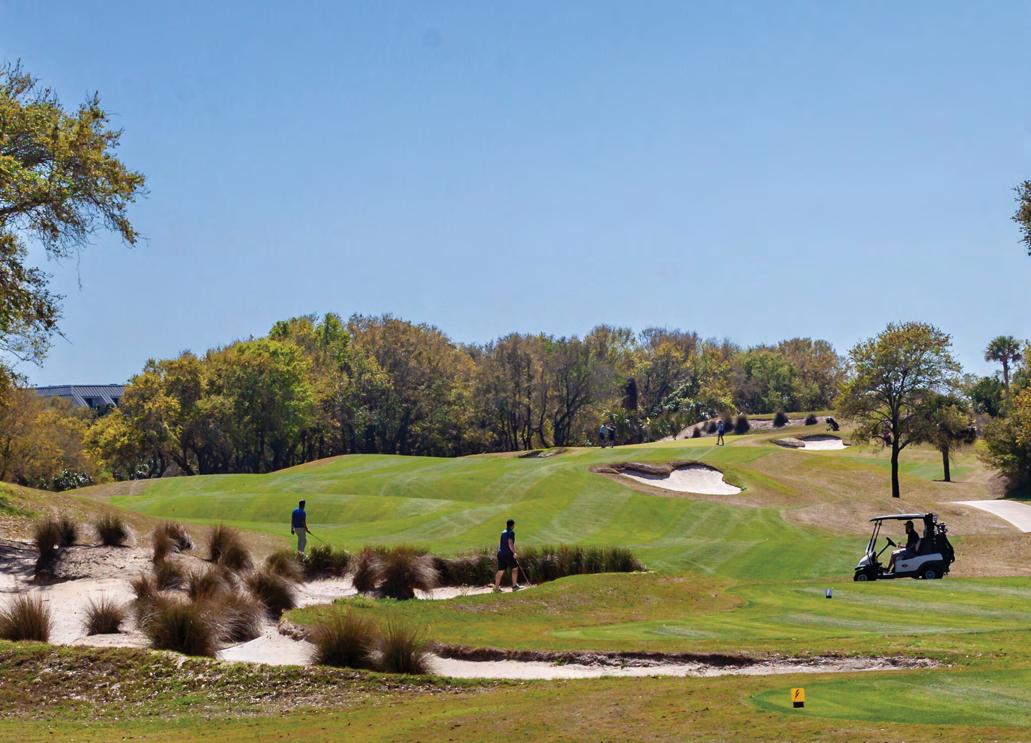
year. Mike Muzzy, chair of the WDMGA’s Prostate Cancer Foundation Committee, was aiming to take in at least $400,000, and a member of the PCF board vowed to match whatever the golf association raises.
The event obviously has come a long way from its humble beginnings. It’s anticipated that the 2023 edition of the tournament, slated for May 13, will draw more than 320 golfers — compared with 217 a year earlier — and will be played on two courses — Links and Harbor — for the first time. The auction is now strictly an online affair, offering hundreds of items, including golf outings and other vacation opportunities in South Carolina and elsewhere. And the chance to play a round of golf with singer/songwriter Darius Rucker or legendary college basketball coach Roy Williams. Another option would be to own a work of art created by local artist Gordon Wheeler, who donates one of his paintings every year.
“Stuart Bascomb became the heart and soul of the tournament, and Bob Minton was the face of it.
–George Roth
Numbers on a scorecard don’t concern anyone associated with the tournament. Muzzy explains that the members of the top four foursomes receive what he calls a champion flag, an honor that also goes to randomly chosen teams, regardless of their score. In addition to their entry fee, golfers contribute to the financial success of the tourney by buying mulligans and hand wedges — do-overs and opportunities to throw a ball onto a green rather than chipping it with what might be a not-so-reliable iron.
The event’s exponential growth is a testament to the dedication and enthusiasm of the WDMGA members who have volunteered their time and talent to ensure the tournament’s success. Bascomb turned the reins over to Gary Lauderdale, who was followed by Murray Small, then John Cipkale, who was the first tournament director to seek participants outside the Wild Dunes gates. Muzzy has been in charge since 2020. Mike Gollobin, president of the WDMGA for the past six years, credits Muzzy for much of the tournament’s recent accomplishments. “It’s fascinating watching him work,” Gollobin said of Muzzy. “He wants to succeed so badly.”
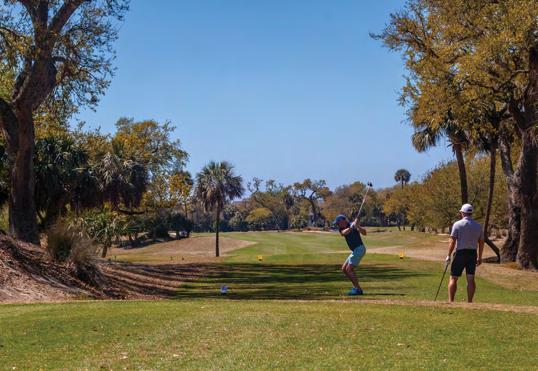
“When I took over, it was just one event on the calendar. I wasn’t into it much,” Gollobin says. “Now, it’s so special in terms of fundraising. It’s the most important thing we do, and I’m excited to be a part of it. Everybody understands what we’re doing. The challenge is how do we keep it going.” Part of “keeping it going” is coming up with new ideas to attract golfers, sponsors and those who shop the ever-growing online auction. Gollobin says he jumped in Williams’ golf cart one day on the Links course to “seal the deal” with the former college basketball coach who currently owns a home in Wild Dunes — and who was an assistant coach at North Carolina when one of the greatest players of all time was a Tarheel. “Maybe in a year or two, he brings in others,” Gollobin muses. “Michael Jordan? Maybe nothing happens, but maybe … .”

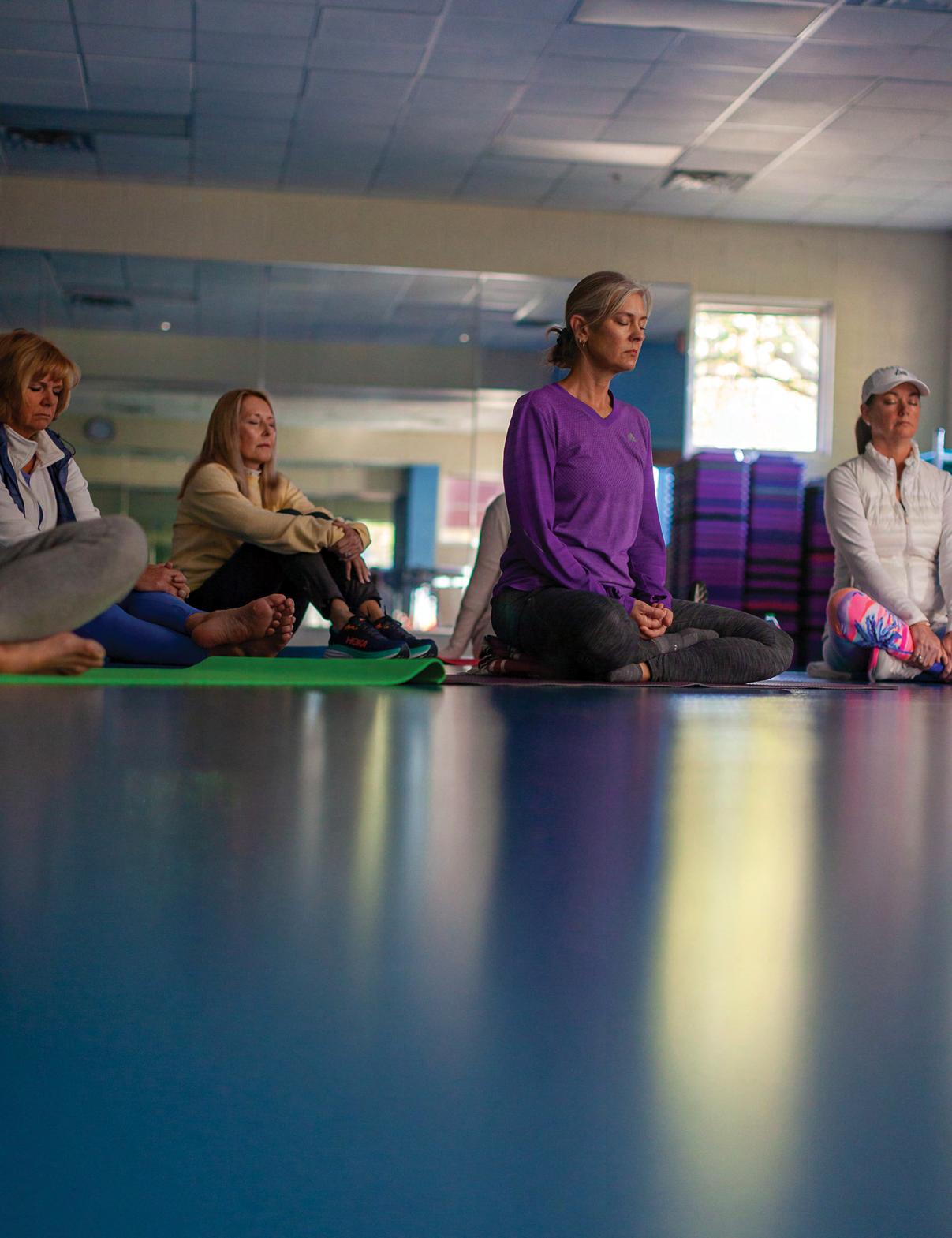
Agoal of meditation is to be still and silent, shut down the mind, and open the heart. It isn’t necessarily easy, says Susan Boruff, who leads a meditation class Wednesdays and Thursdays through the Isle of Palms Recreation Center. It’s especially challenging in today’s “attention economy,” as she describes it.
Boruff has been directing the Isle of Palms classes since last September, but she has been leading classes for the past 25 years, including 15 years of training. “It’s a practice, like playing golf or playing piano,” she says. “You’re not going to be Rory McIlroy right away. It takes work. It isn’t just about sitting there in silence.”
Boruff says people tell her they want to learn more about the art of meditation, but often they don’t follow through. It’s something she now believes she “can’t live without.”
She first discovered the practice of meditation while battling celiac disease, a condition that her doctors were having difficulty treating. Boruff says she came from a very “left-brained” and rational way of thinking, having earned a master’s degree in speech/language pathology from the University of South Carolina. It was life-changing when she started exploring how intentional breathing and setting an intention can change a reality. “What you set the intention for is what you’re going to get out of it,” she says. “It might be you just want to be able to reduce anxiety. For me, it was to be able to find a way to heal from an illness.”
The Isle of Palms Recreation Center meditation classes challenge islanders to calm their minds and open their hearts.The IOP Rec Center now offers weekly meditation classes. Research indicates meditation can lead to an increase in the production of theta and alpha waves, the brain wave frequencies associated with enhanced learning abilities and overall mental well-being.
“The science follows the breath,” explains Boruff. “Across religions, the breath is considered a divine energy — whether they call it chi, prana, or spirit, as I do.” Research indicates that meditation tends to lead to an increase in the production of theta and alpha waves, which are the brain wave frequencies associated with enhanced learning abilities and overall mental well-being. “When we turn off the limbic part of our brain or the ‘fight or flight’ part, we open up the divine energy or the heart. It’s our inner light or true self,” she says.
The Isle of Palms meditation classes are held twice a week, Wednesday mornings at 8 a.m. on the IOP Marina Public Dock and 9 a.m. at the Recreation Center, outside under the big tree. The classes are 30 minutes long.
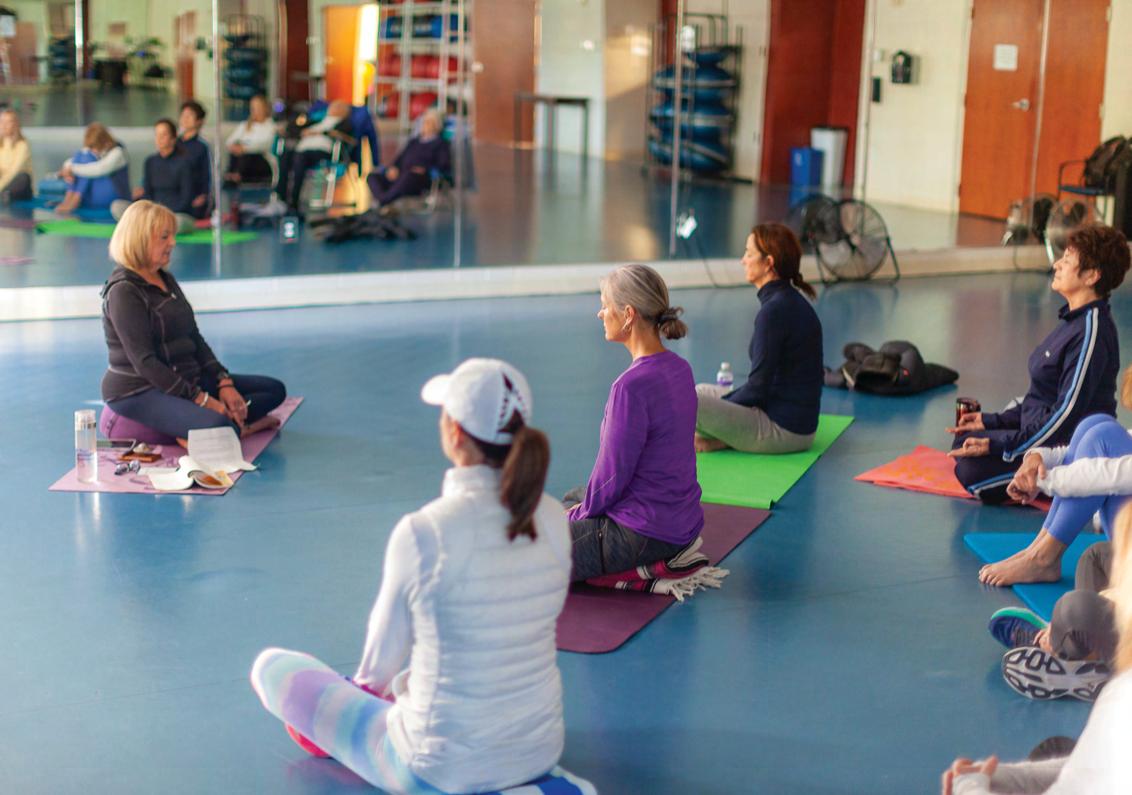
The first 10 minutes is an explanation of why the participants are there, the second 10 minutes is a guided meditation, and the final 10 minutes is usually a silent meditation
practice. Half of the battle is “just showing up” with intent.
Boruff, who has two daughters in their 30s, says she recognizes that many millennialage adults who have grown up in an era where their attention is being pulled from all directions are struggling, and she is beginning to see them show up in her groups.
She sees the practice of meditation as potentially being not just for an individual selfish good but for the collective good. “When we slow down, rewire our minds, and treat each other with compassion and gentleness, it’s not just helping ourselves. When you’re able to shut down your mind and open your heart, you’re able to open other hearts as well. Isn’t that something we could use now?”
““When we slow down, rewire our minds, and treat each other with compassion and gentleness, it’s not just helping ourselves.Susan Boruff leading a meditation class at the IOP Rec Center. SiP
Community Meditation at the IOP Marina Public Dock
Join this community group and work on guiding each other through a meditation experience to relax, breathe, engage the imagination, be silent for a time, and take a break from the busy world around us.
Wednesdays, 8 a.m. Free.
Community Meditation at the IOP Rec Group meditation under the trees.
Wednesdays, 9 a.m. Free.

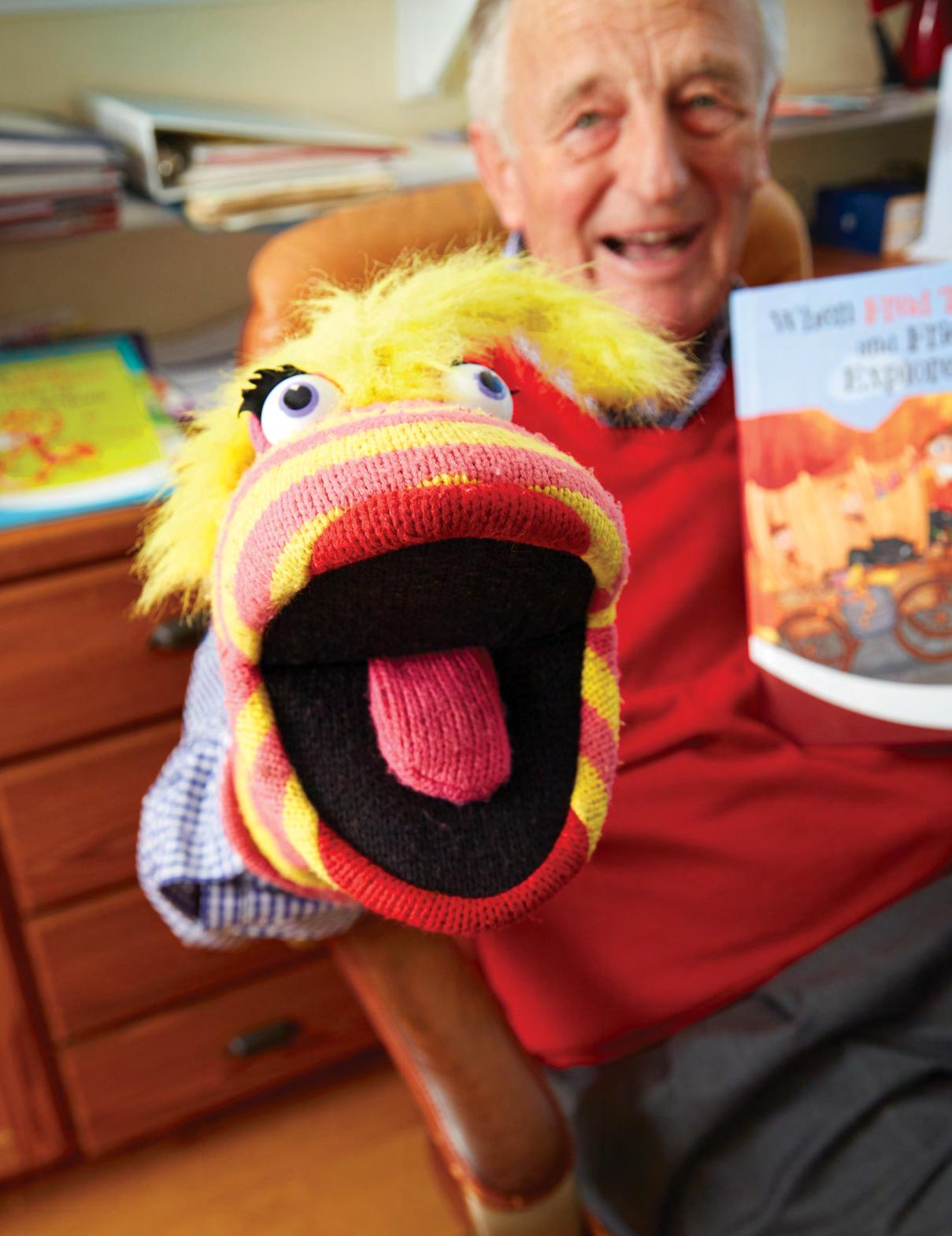
One of Dewees Islands’ longest residents, Peter Cotton has helped shape both the eco-conscious barrier island, modern gastrointestinal medicine, and a reptile with a quirky personality.
 By Jennifer Pattison Tuohy Photos by Caroline Knopf
By Jennifer Pattison Tuohy Photos by Caroline Knopf
When your name is Peter Cotton, becoming a children’s book author seems almost inevitable. So it was for the British-born Peter Cotton, but not before an illustrious career as a medical pioneer. Over his six decades as a gastroenterologist, Peter has traveled the globe, becoming a leading professor in the field of endoscopy procedures, along with a Delta Airlines 3 million miler. He treated kings, princesses, and movie stars and brought one of modern medicine’s most important technologies to the Western world. He’s lived in London, England; Shiraz, Iran; Chapel Hill, North Carolina; Mount Pleasant, South Carolina; and, for the last 22 years, has called Dewees Island home.
But back to that name. He was not named after a rabbit, he says. Peter Cottontail is a wholly American invention. However, in Peter’s native England, The Tales of Beatrix Potter features a bevy of bunnies named Peter Flopsy, Mopsy, Cottontail, and Benjamin (Peter’s middle name). Until he arrived in America, he was unaware of his nomenclature’s even more direct connection to the
Peter’s autobiography, The Tunnel at the End of the Light: My Endoscopic Journey in Six Decades, explores his career in gastrointestinal medicine.

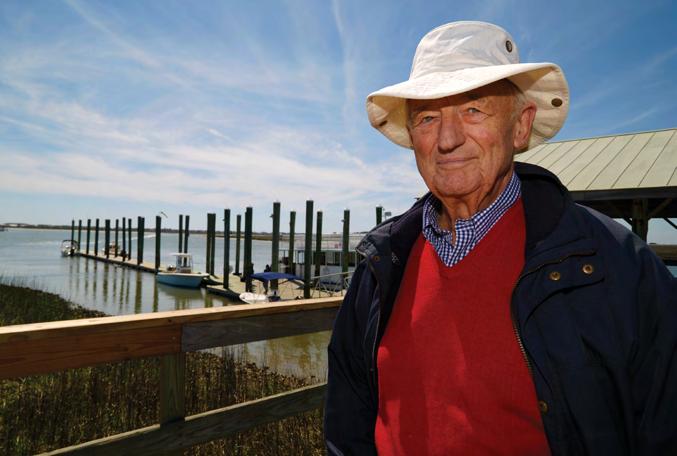
world of literary animals. It has served him well, however, at least regarding gifts. Peter reports he has more than 800 bunny-themed decorations in his possession. And while he doesn’t attribute it directly, the close ties to anthropomorphic animals surely influenced his own literary creation, Fred the Snake.
An orange and yellow snake with luscious eyelashes and lipstick but no defined species, Fred was born as a bedtime story for his two children. “I was trying to teach them about crossing the road,” he tells me as we sit on the sofa in his Dewees Island home, looking out over Lake Timicau and the Atlantic Ocean. “The title was When Fred the Snake Got Squished, and Mended . The story was he didn’t know how to cross the road, so he got run over by an ambulance and had to be sewn back together.”
Peter’s children called his creation FredFred because he was in two pieces for much of the book. Peter didn’t do anything with Fred-Fred until his children were grown with children of their own and asked, “What
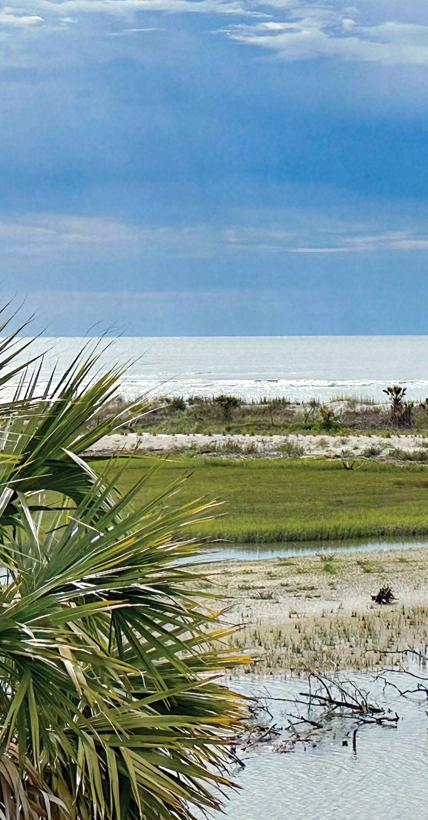
“ We fell in love with Dewees very quickly. It’s still Charleston’s best-kept secret.
— PETER COTTON
happened to Fred-Fred?” “I found the text I had written and eventually found a wonderful illustrator, Bonnie Lemaire, and I published a book,” he says. That was 10 years ago, and he published Fred’s eighth adventure this year. “Fred went to school, Fred went to the beach (on Dewees), explored Charleston, went camping, and recently he’s been visiting the cities and famous sights of the United States with his friends. Currently he’s working his way around the West Coast,” says Peter, in his clipped English accent, which carries hints of his days at Cambridge University.
How does a world-famous, Cambridgeeducated English doctor wind up living on a tiny barrier island off the coast of Charleston, South Carolina? A lengthy, fascinating story, ultimately, it all came down to diapers. “It was 1998; we had been living in Mount Pleasant for about four years when a colleague at MUSC invited us out to dinner on the island,” recalls Peter. However, the weather took a turn, and,
as the only way to get to Dewees was by boat, he and his wife, Marion, called to politely cancel. “But he absolutely insisted, said we’ve prepared this wonderful meal, you simply must come. So, I said, ‘Oh, OK, if it’s that important.’
There was a pause, and he said, ‘Well, if you’re coming, please bring diapers.’”
It was the first time Peter had heard of Dewees, a private, eco-conscious community on a barrier island just north of Isle of Palms.
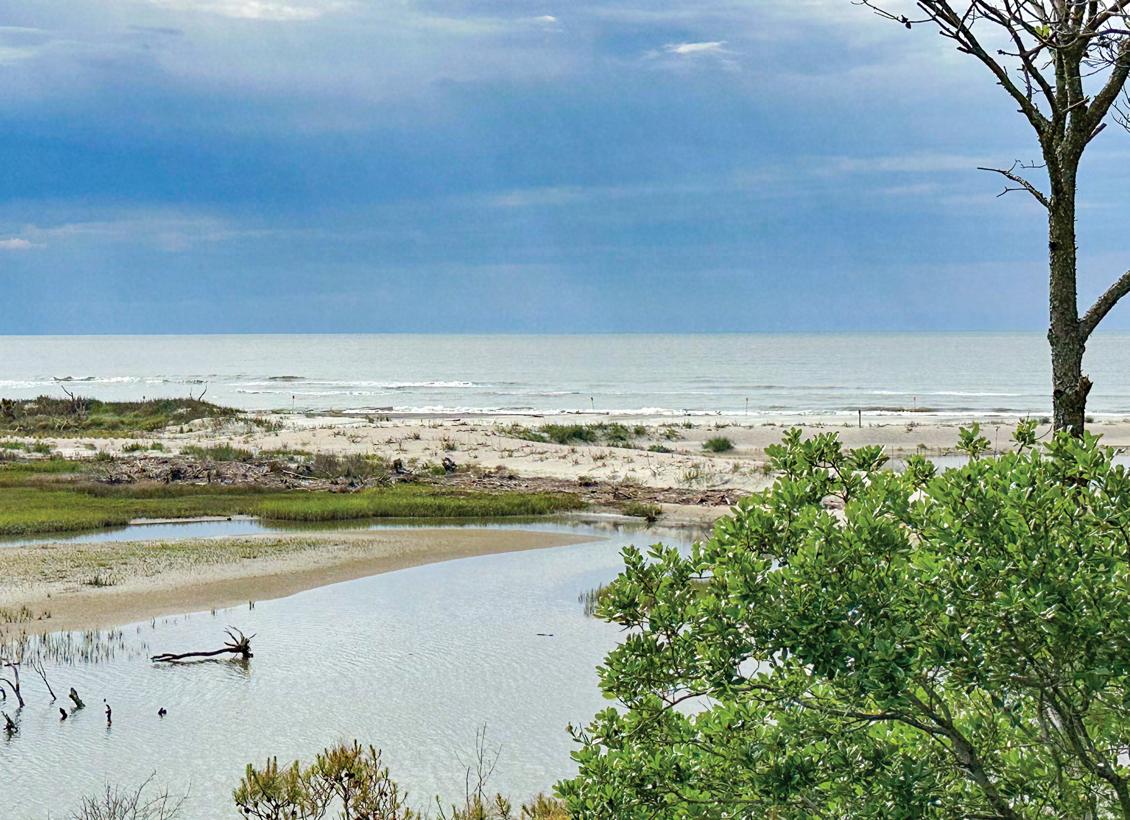
Developed in the early 1990s, after Hurricane Hugo had largely decimated what had been there, Dewees hosts just 150 residential lots on its 1.9 square miles. Today, 70 homes have been built; Peter and Marion were among the early settlers — building in 2000. “We fell in love with it very quickly,” says Cotton. “It’s still Charleston’s best-kept secret.”
Right on the northern tip of the island, at the end of Pelican Flight Drive, the Cottons’ house was built by Tom Sanders and Chip Narramore (who still builds on the island as Narramore Construction) and, at the time, had 360-degree views. “We could see the sunrise
Peter reports he has somewhere over 800 bunny-themed decorations in his possession.Photo by Judy Drew Fairchild.
and the sunset, although not at the same time,” Peter recalls. In the ensuing 23 years, the trees Hugo swept away have regrown, and the island more closely resembles the maritime forest it once was. It provides valuable habitat for a delightful variety of wildlife. On our short golf cart ride from the ferry dock to the house (no motor vehicles are allowed on the island), we saw roseate spoonbills, a great blue heron, and an enormous alligator sunning itself next to a wellplaced sign warning of active alliga tors in the area.
As an elder statesman of the island, Peter has assumed many duties, from serving on the POA board for many years and as its president to assisting Marion in running the island’s social events. Happy hour every Friday night at the Huyler House (the island’s com munity center), open mic night, neigh bor soirees, Sunday morning boccie, and pickleball tournaments, and revolving dinner parties are just some of the social gatherings they’ve orchestrated. More deer than people may live on Dewees, but that doesn’t mean it’s dull.
“We are so fortunate to be part of this remarkable supportive community,” he says, recognizing it as “living in harmony with nature.” Another great example of community spirit is the Memory Garden, designed and built by residents.
Peter and Marion are among only 20 or so full-time residents on the island, having relocated permanently from Mount Pleasant in
The Fred the Snake series features eight books, with number nine, where Fred and friends explore the Western United States, coming soon. Order them at Amazon or get signed copies at www.drpetercotton.com/shop




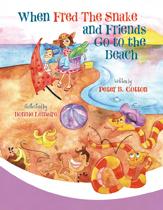



May 2011 when Peter “retired” from his full-time role as director of the Digestive Disease Center at MUSC, a program he founded.
While the diaper story is undeniably fun, it does gloss over how Peter came here from another tiny island across the sea — England. That story involves another island (Japan) and how a Herefordshire-born lad helped bring endoscopic retrograde cholangiopancreatography to the Western medical world. Known as ERCP — because other than Peter, who named it, no one can pronounce it — Peter brought this gastroenterology endoscopic procedure to Britain’s National Health Service after learning about it in 1971 from Dr. Kazuei Ogoshi in Japan. “I invented some endoscopic procedures,” he says with a modesty characteristic of his native country. “ERCP is a procedure that involves investigating and treating the bile duct, gallbladder, and pancreas.”
Working for The Middlesex Hospital in London at the time, Peter’s skill with this new form of diagnostic medicine that could also treat conditions without the complications and pains of surgery gained him an impressive reputation. This led to invitations to lecture all over the world, and, in 1986, following a brief stint at a hospital in Iran, Peter was offered a position at Duke University Medical Center
in Durham, North Carolina. Eight years later, he was invited to start at a new department at the Medical University of South Carolina in Charleston. By this point, Peter was divorced and had married a Southern belle from Georgia, whom he had met at the Masters Tournament in Augusta. Between them, Peter and Marion have four children, and today Dewees Island is a natural draw for their large family, which includes eight grandchildren and two great-grandchildren.
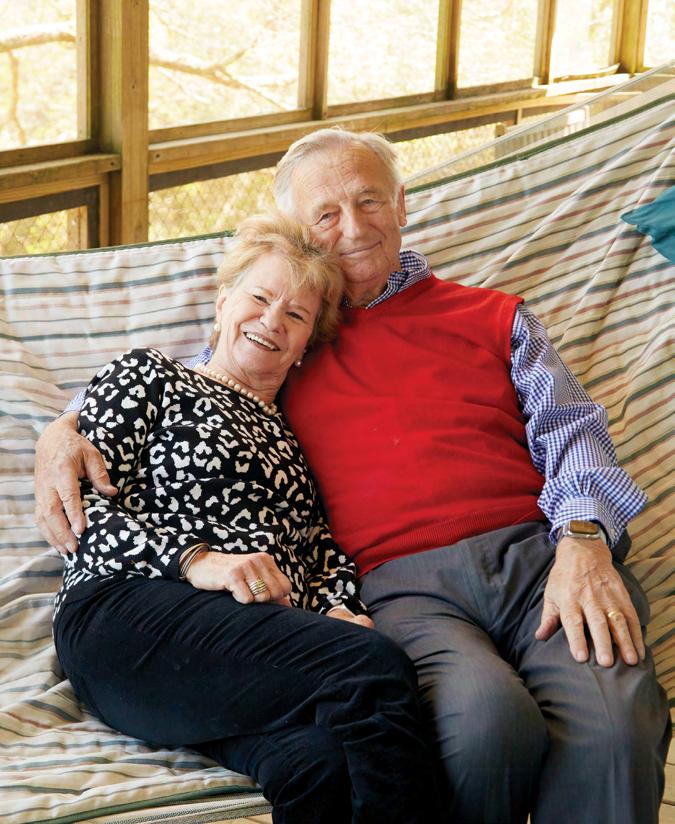
Family photos of the clan enjoying summers on Dewees over the years fill many walls, bookshelves, and basically every available flat surface in the couple’s home. It’s abundantly clear that while Peter has traveled to every corner of the globe, met movie stars and royalty, and pioneered groundbreaking medical procedures, there is no place like home. And home is Dewees Island. SiP
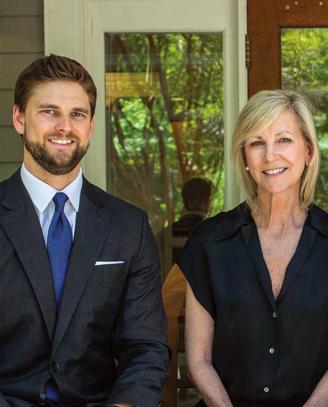
SiP SiP
“
could see the sunrise and the sunset, although not at the same time.
— PETER COTTON





Julie Mathias reflects on her two-decade career instilling a love for music in the island’s children.
By Laura Anderson Photos by Rob BykoWhen words fail, music speaks These inspiring words greet students as they enter Julie Mathias’ music classroom at Sullivan’s Island Elementary School. Eleven affirmative phrases accompany the messgage on the door: You are special. You are creators. You are respected. You are important.
Inside, the classroom is decorated with colorful instruments, including ukuleles, drums, and more affirmations. In her two-decade-plus career at SIES, Julie has curated a whimsical, welcoming space. She hopes her students feel accepted and supported for exactly who they are. This positive attitude is why the students and faculty at the school are reluctant to say goodbye to Julie this June when she retires.
Julie is leaving SIES in part to help her father, Jamie Hyman, who is battling a terminal illness.
“The staff was surprised, and some of the kids are worried that things will change,” Julie says, noting that this is an extremely bittersweet transition for her. “This classroom is my second home. I will miss the kids, the parents, and the teachers.”
Julie Mathias has dedicated her career to teaching children the joy of music.
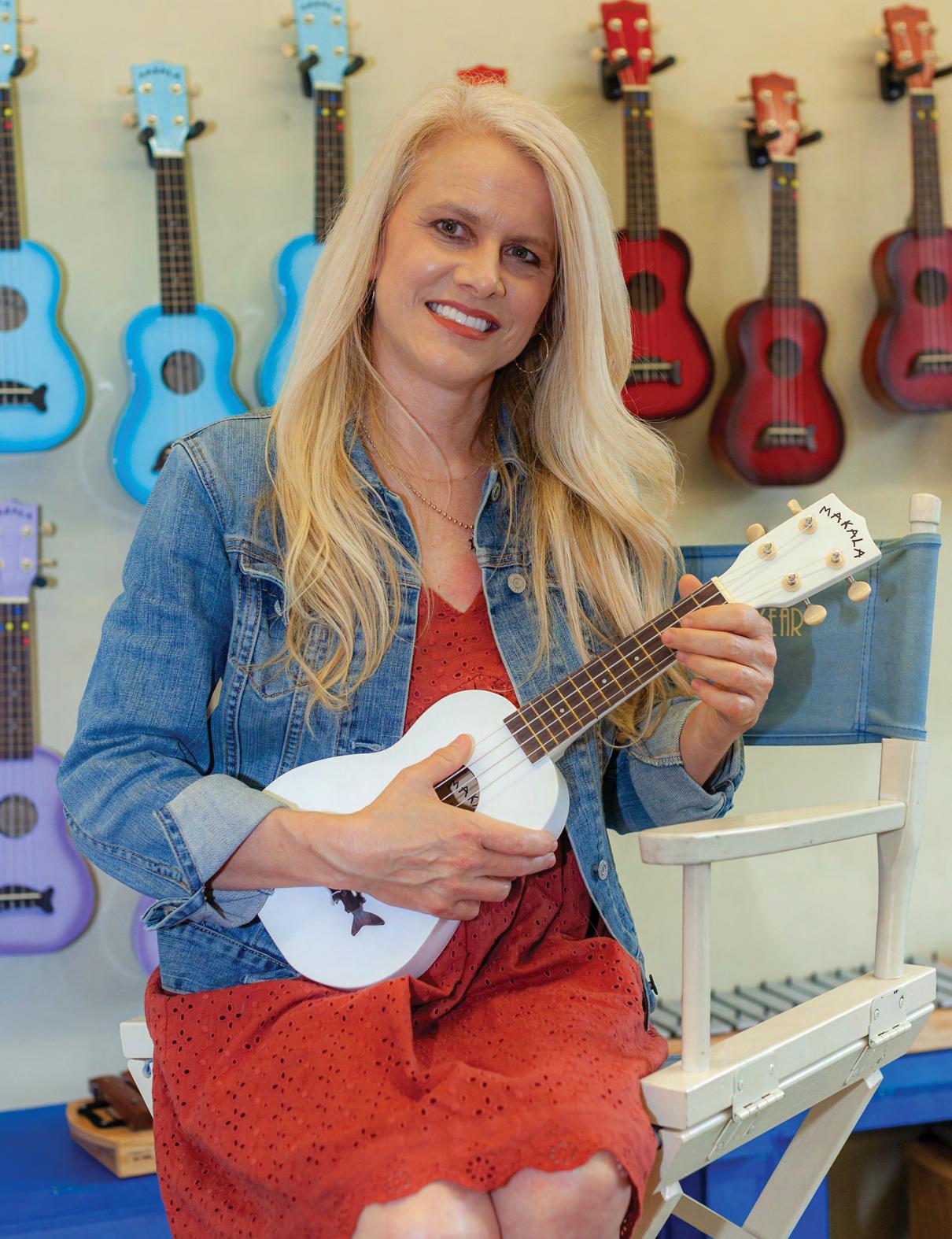
With over 32 years of teaching under her belt, Julie has had the pleasure of connecting with and teaching so many young minds. She recalls vivid memories teaching two students in particular in her Sullivan’s classroom: her daughters. When Julie first began her career at SIES, Callie and Anna were in first and third grade. “It’s crazy to think I was teaching them when they were 6 and 8 years old,” she says. Today, Callie is 27, and Anna is 29 and both are married. Julie hoped to instill in her daughters all those years ago what she continues to instill to this day – inspiring kids to feel successful and included. Having the opportunity to connect with children at such an impressionable age has allowed Julie to focus on “social and emotional music.” “I can reach children at the very depths of their inner being, and I find it so rewarding,” she says.
At one point or another, students and faculty passing by Julie’s classroom have probably heard the familiar melody of “Unique,” the song she sings at the beginning of every class. The lyrics are: “I’m brave, I’m strong, I’m
loved, I’m smart, I’m unique.” “My hope is that they will take the words from songs that they have learned here, and, when they are having a difficult time, they will be able to reach back to them,” Julie says.
The teacher has made a resounding impact on her students that carries far beyond her classroom walls. Over the years, past students have shared their accomplishments. One has become an internationally known harpist, and many others have performed in high school
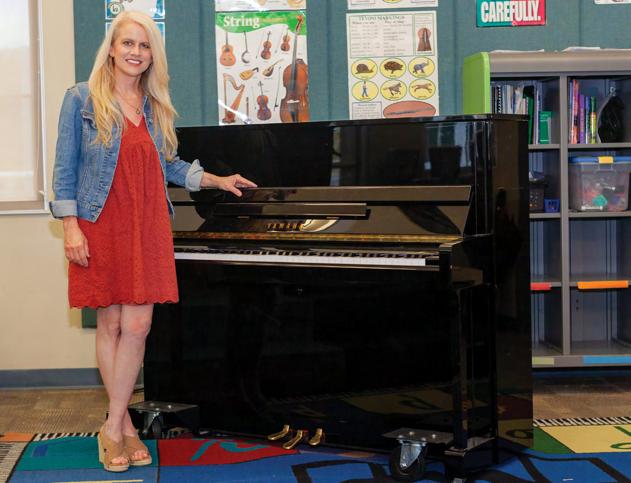
and college musicals. “They find me on Facebook and tell me how meaningful it was to be in the productions I put on here at Sullivan’s.”
Under Julie’s stewardship, the music program at Sullivan’s Island Elementary has flourished. She has staged 20 musicals during her career; her favorites are Aladdin and The Lion King. She loves the songs and storylines in both. But her signature showpiece is the May Day Festival. At the end of each school year, students put on this showcase, a school-wide performance where each grade level performs songs, and the graduating fifth graders close the show with a rap. It’s a tradition that students have looked forward to since before Julie began her career at SIES but an event that her passion for the arts certainly has enhanced. “It is so rewarding. The parents love it, and the kids are very proud of themselves,” Julie points out.
Julie says working with each grade level over the decades has been a gift and notes that there are so many ways to reach children through music. Different avenues speak to children individually. Whether it’s singing, playing drums, or performing in musicals or
 Above, SIES Singers perform a holiday concert in December 2022. Left, Julie at the piano in her classroom.
Above, SIES Singers perform a holiday concert in December 2022. Left, Julie at the piano in her classroom.
“ I can reach children at the very depths of their inner being, and I find it so rewarding.
— JULIE MATHIAS
choir, there’s something for everyone at SIES. “The facilities are amazing,” Julie says, alluding to more than just the school’s possibilities in the music room. “We have a wet lab here that allows students to get up-close and personal with the wildlife and oceans. It’s very conducive to being a coastal environment school.” She recalls taking her students out into the forest behind the school, just feet from the ocean, where they played in a drum circle and truly immersed themselves in the surrounding nature. “There’s no other school like it,” she says.

In addition to teaching, Julie sings and plays the piano, the clarinet and other woodwinds, and steel drums. She has a dual degree in clarinet performance and music education, but her love for music came much earlier in life. Her mother, Susie Hyman, was a music teacher for 30 years, most recently at Rollings Middle School of the Arts in Dorchester County. “I’ve always been around some sort of music creation,” says Julie. Her father, Jamie, an educator as well, is a former superintendent of the Berkeley County School District.
Julie’s husband, Tim, also is a musician. A percussionist, he works for a music company and has a steel drum band called The Island Trio, which often performs at Wild Dunes Resort. Fellow music aficionados liken their tunes to Calypso and Jimmy Buffet. Tim is excited about Julie’s next chapter and all that
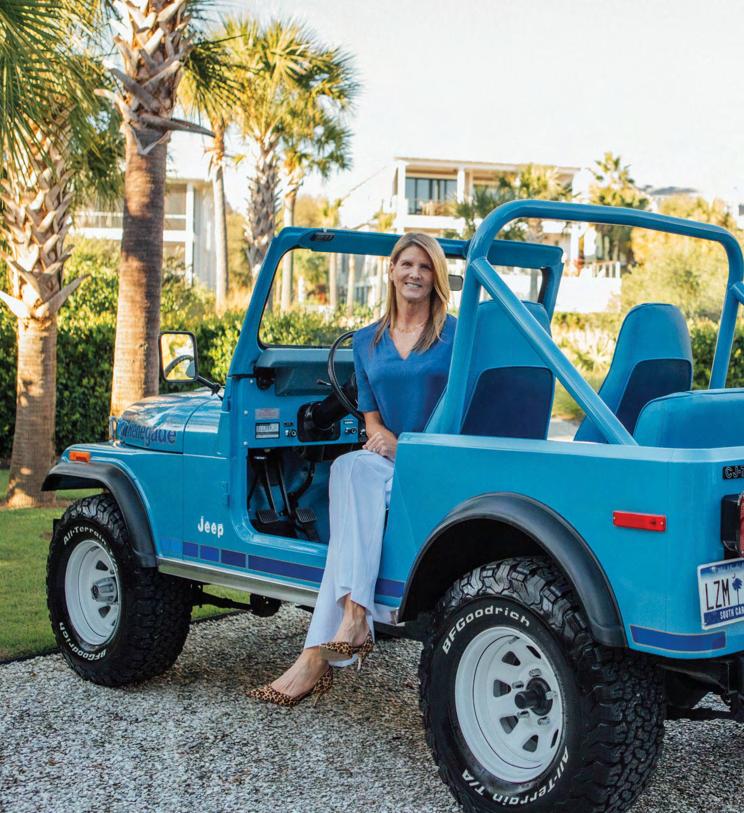
awaits on the horizon, yet the pair appreciates all she’s leaving behind.
Julie will miss the sense of pride the students have when they learn something new or when they devote countless hours in rehearsals to put on a program. “I’ll especially miss when I can just tell a performance or lesson has made a really big difference for them. It’s the light in their eyes and that special spark,” she says, pausing. “Yeah, I’ll really miss that.”
“My goal as a teacher is to make every child feel like they belong and to help them take the love of music with them wherever they might go for a lifetime,” she says. And wherever Julie may go, she will undoubtedly do the same. Post-teaching, she says that music will still be a very active part of her life. She plans to continue to play the clarinet with North Charleston POPS!, as well as teach clarinet lessons and play steel drums in her husband’s band. Most of all, Julie is looking forward to spending time with her family, comforting her dad, and welcoming her first grandchild.
As she looks back on her extensive career and around the walls of her music room, Julie is flush with gratitude. “Thank you to the parents, my colleagues, and my principal, Susan King, for being such a big supporter of the arts. I have always felt so supported here, and you don’t get that everywhere. ... But it’s been amazing here. Parents have always been willing to help. The kids have always been willing to perform. It’s been a fabulous place to work. I’m very, very fortunate, and I will miss it dearly.”

“
I’ll miss when I can just tell a performance or lesson has made a really big difference for them. It’s the light in their eyes and that special spark.
— JULIE MATHIAS SiP
Anne Bivens reflects on growing up at “Bamma’s Beach,” a fisherman’s cottage on Sullivan’s Island. Today, the accomplished silversmith maintains her connection to her childhood by showcasing her stunning jewelry at Sandpiper Gallery.
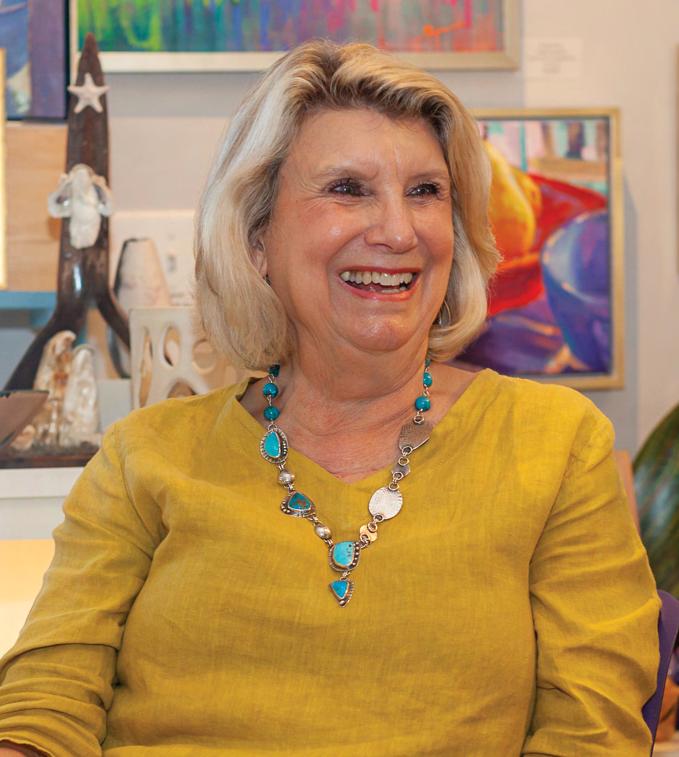 By Colin McCandless. Photos by Rob Byko.
By Colin McCandless. Photos by Rob Byko.
Some of silversmith Anne Bivens’ fondest memories as a child were formed on Sullivan’s Island. The artist and educator, who was raised in Sumter, spent her summers on the island, staying with her grandparents, Essie and Ferd Gregorie, in their vacation home at Station 28-and-a-half. The former fisherman’s cottage, situated on the front row of Sullivan’s Island before accretion set it further back, was over 100 years old by the time it was torn down.
Bivens still has a painting of the home rendered by her Aunt Gabbie Gregorie, a cherished keepsake and family heirloom evocative of a place that holds special significance for Bivens, whose artwork has been represented at Sullivan’s Island’s Sandpiper Gallery for 20 years.
As a child, Bivens knew the house as “Bamma’s beach” — the nickname for her grandmother — an enchanting place where she and her sister, Becky, and brother, Wilson, who are all within 4 years of age, would collect shells from the shore. “We’d go barefoot all the way down to the beach,” she reminisces. “We’d have to hop, it was so hot.” Her grandma would teach them the names of different shells, and afterward they would make creatures or pictures out of them using the pipe cleaners, glue, and paper that Bamma had on hand. Bamma would play games with them on the porch, including one imaginary game she called “William the Trumpeter.”
“She’d play it the whole afternoon with us. All of the grandchildren. She was a wonderful grandmother,” says Bivens.
She recalls how in those days, the home had a wraparound “sleeping porch” — and no air conditioning — and they would sleep on
the side porch and watch the beam rotating from the Sullivan’s Island Lighthouse, performing its sentinel duties. Bivens recalls one occasion when a possum clambered up onto the porch, clinging to the screen and hissing at them. “It scared us to death,” she says with a laugh.
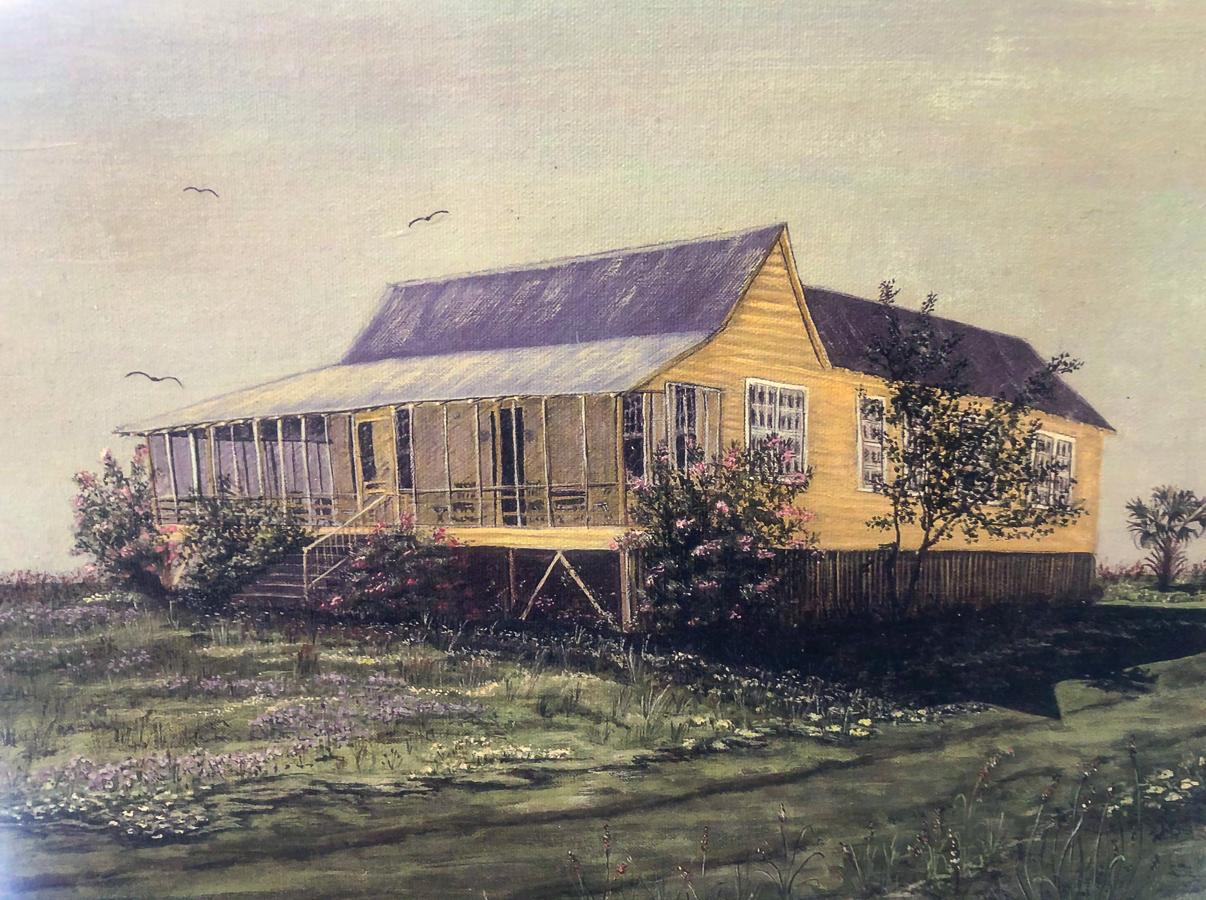
Going crabbing was another common pastime while spending time at Bamma’s. Bivens remembers toting in a bucket of crabs and accidentally dumping them all over the kitchen floor, scattering crustaceans everywhere. “We were horrified as children,” says Bivens. “I don’t think we ever found them all.”
As a staple at Sandpiper Gallery on Middle Street, Bivens has maintained a connection to Sullivan’s Island, although she didn’t become an established jewelry artist until later in life. She began her career as an educator, earning a master’s degree in adult reading, and has taught about every age from 3 to adult. She worked for 16 years in Heathwood Hall’s
“ They would sleep on the side porch and watch the beam rotating from the Sullivan’s Island Lighthouse.A painting depicting Bivens’ grandparent’s home at Station 28-and-half rendered by her aunt, Gabbie Gregorie. The home was torn down in 2021 following Gregorie’s death. Anne Bivens is a jewelry artist who spent her childhood summers on Sullivan’s Island.
Academic Achievement Center in Columbia, South Carolina, helping teach students with learning disabilities in reading and writing. She still tutors high school students in humanities and writing.
When she was a child, her parents would send her to camp in the North Carolina mountains every year, where she took crafts classes such as copper enameling and underwater basket weaving. “I always loved working with my hands,” she says. Even when she was teaching, Bivens crafted jewelry on the side. “I’ve always been fascinated by jewelry,” she notes. “Not that I wanted to possess it all. I just appreciate the beauty of it.”
She recalls a pivotal moment in her evolution as an artist. While walking down Main Street with her husband Alton and browsing in a jewelry store in Highlands, North Carolina, Bivens glimpsed a bracelet crafted from handmade glass beads. “It was so beautiful.” Alton
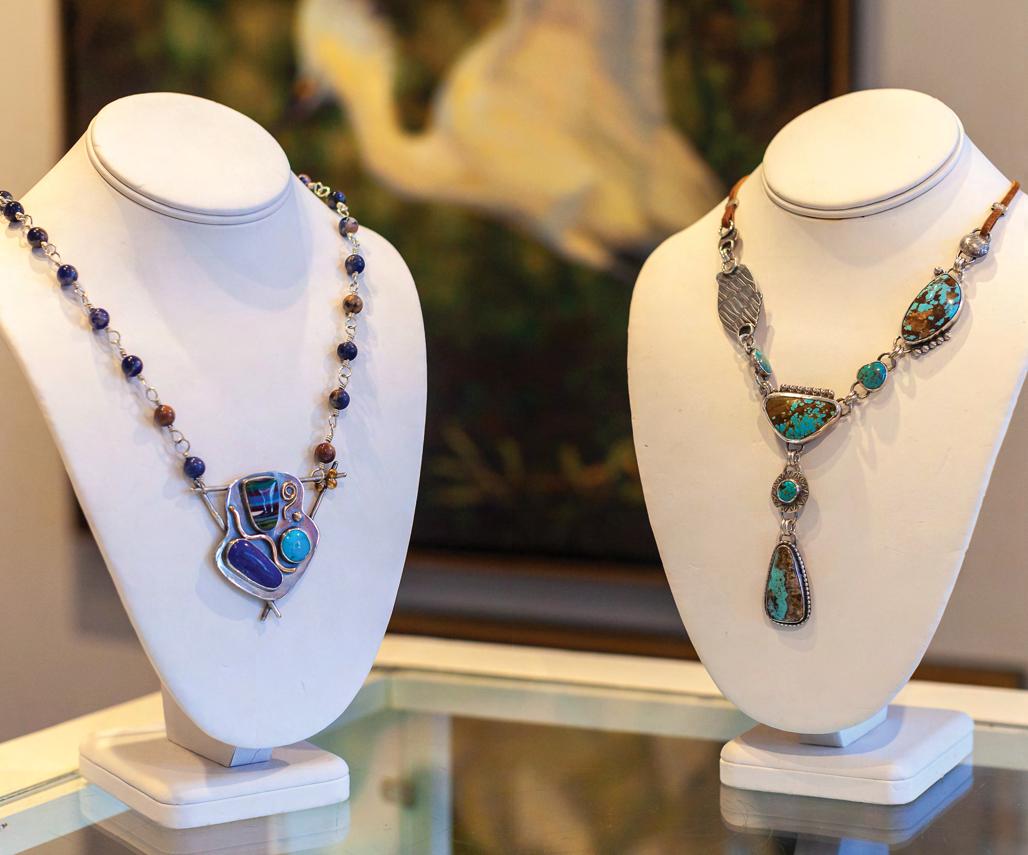
bought it for her, “and I deconstructed it,” she said. “That was when I first got started with jewelry making. I just started observing how things were put together.”
She began attending gem and mineral shows, buying items, and assembling them. Before long, she showed Sandpiper Gallery owner and director Julie Cooke some of her work. “I was really surprised — she wanted to start taking them. I was so flattered,” says Bivens. After several years, she decided she also wanted to make the components she used to put the jewelry together.
She discovered metal clay, a Japanesederived medium consisting of microscopic grains of silver extracted from old X-rays. “You can mold it, you can cut it, you can shape it, and then you fire it — at 1,600 degrees,” she says. “It shrinks a little bit, but then it keeps its shape.” Bivens found someone in Micaville, North Carolina, who was a certified master in
“
“We’d go barefoot all the way down to the beach. We’d have to hop, it was so hot.
— ANNE BIVENSExamples of Anne Bivens’ jewelry collection displayed at the Sandpiper Gallery. Bivens is particularly fond of using turquoise in her pieces.
metal clay, took the classes, learned the art, and became certified herself.

She plied the trade for a few years before transitioning into silversmithing. For nearly 18 years, she took every silversmithing class she could find, scrutinizing all aspects of the craft. Besides Sandpiper, her work is featured at Charleston’s Dare Gallery and the Rutledge Street Gallery in Camden, South Carolina. “Her attention to the minute details of cutting stones and hand-working the sheets of silver, copper, and gold into unique pieces of jewelry is evident in every ring, earring, bracelet, and pendant that she creates,” says Cooke, who also owns Dare Gallery. “The simple beauty of the natural gemstones that Anne combines with the sophistication of her one-of-a-kind designs brings collectors back time after time.”
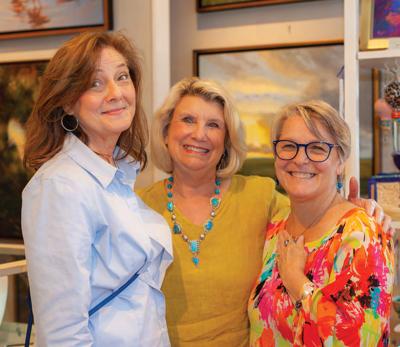
Bivens makes pieces both for men and women, fashioning creations using sterling silver or mixed metal jewelry. Every one of her projects starts with a flat sterling silver sheet and wire, and, from there, she cuts, textures, patinas, polishes and sets stones. She prefers natural stones — turquoise is a particular favorite. “It just speaks to my soul. I love turquoise,” says Bivens. She has now learned to cut her own stones using equipment such as a trim saw and a cab genie for making cabochons — gemstones that have been cut and polished.
Bivens now teaches silversmithing classes at her artist’s studio in Columbia, where she welcomes any prospective students looking to learn the craft. “I like to help people create their own jewelry,” she said. As for the family house at Station 28-and-a-half, it was razed, and the property was sold when her Aunt Gabbie, the last family member to reside in the home, died. But Bivens has kept her aunt’s painting as a memento. Meanwhile, her own work as a jewelry artist continues to evolve. “I can’t imagine not doing this,” said Bivens. “I’m sorry that it took me so long. I wish I’d been doing this forever.”
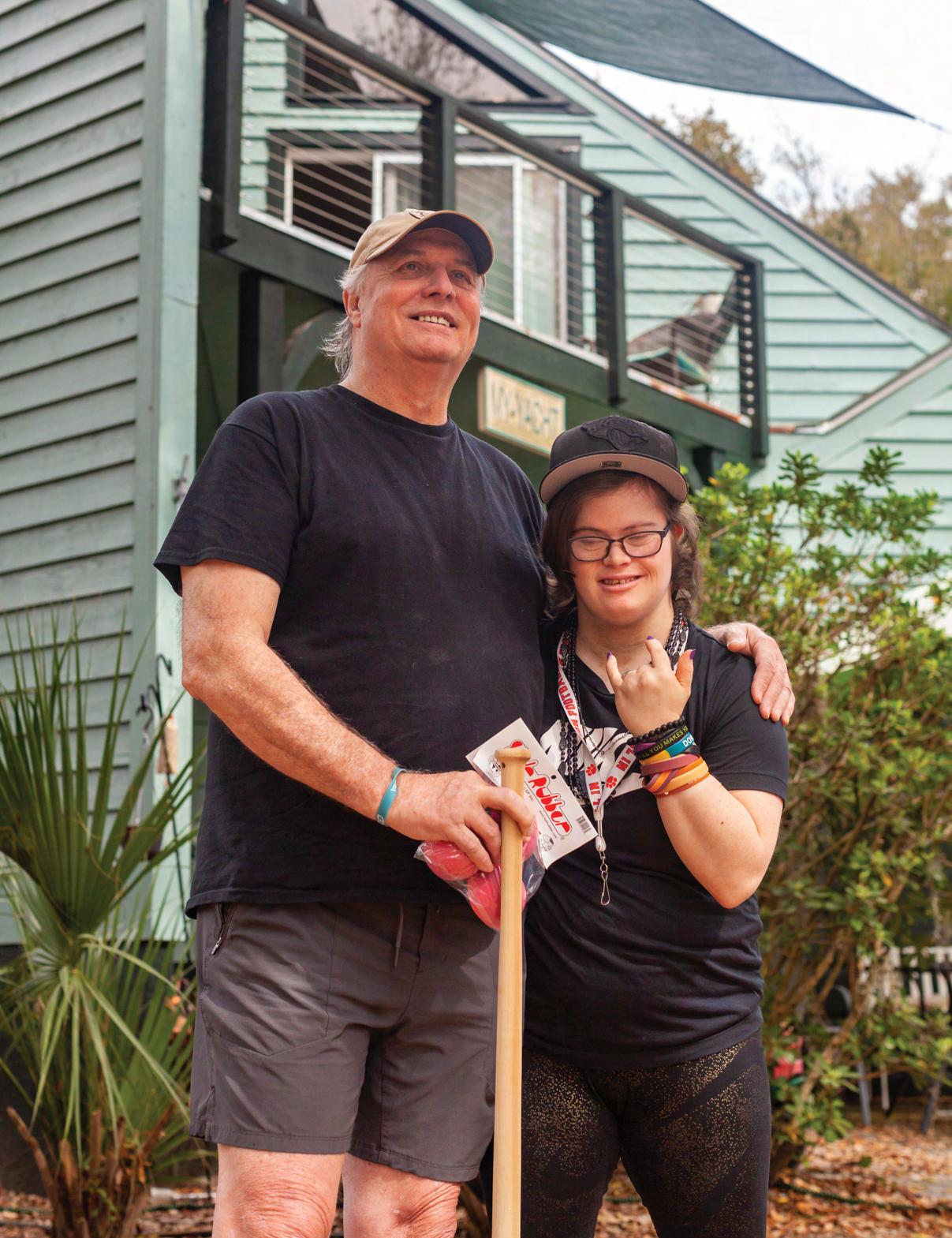
oFormer IOP mailman and Malibu East owner Ricky Myatt’s greatest blessing is his daughter, Grace.
By Brian Sherman.Photos by Rob Byko
Ricky Myatt was delivering mail on the Isle of Palms long before the beach was lined with luxury mansions. He owned a bar on the island then, too. It was known far and wide for its turbulent Super Bowl parties, beach volleyball, innovative marketing plans, and not-so-successful attempts to draw customers to what he pridefully described as “a dive.”
Years after Hurricane Hugo banished that bar, Malibu East, to the long-forgotten annals of island history, Myatt and his business partner, Paul Schwartz, launched a company that produces everything anyone would need to participate in a game called Half Rubber. With a nostalgic resemblance to stickball, it uses a “half-ball” made of sponge rubber and a 1.5-inch diameter chunk of poplar that looks a lot like a broomstick – which is what kids have used to play the game in the densely populated cities of the North for a century or more.
Still an IOP resident and beyond his 70th birthday, Myatt’s most important job is to be a dad, though the lines that separate father from best friend and roommate are sometimes blurred. His bestie is Grace, his 25-year-old daughter who has Down syndrome, a steady job, an infectious attitude, and an affinity for Clemson football. They have always taken
Ricky Myatt, right, and his business partner, Paul Schwartz, launched a company that produces everything anyone would need to participate in a game called Half Rubber.
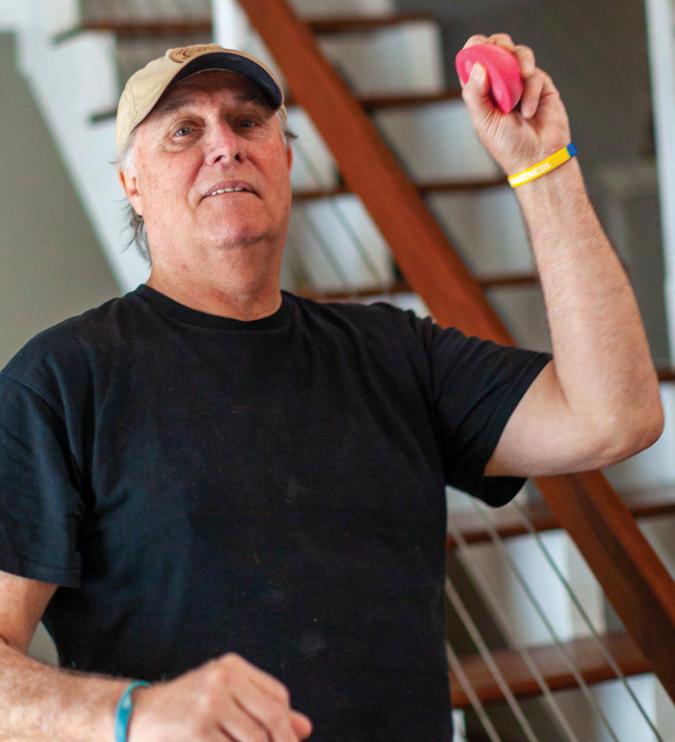
care of each other, but their relationship has grown stronger since Maggie, Ricky’s wife and Grace’s mom, passed away in October 2019.
Coincidentally, the Myatts received good news and bad news on the same day. Shortly before their 27th wedding anniversary, with Ricky and Maggie planning a trip to Costa Rica, they were informed that Maggie had stage 4 lung cancer and that her days were numbered. When the stunned couple pulled into their driveway, they found a letter in the mailbox: Grace had been accepted into ClemsonLIFE, a prestigious program that prepares young men and women with intellectual disabilities to hold down a job and live independently.
Maggie’s doctors knew something was wrong long before Grace drew her first breath. Ricky tried to be strong, but he admits that he cried like a baby. Nevertheless, the Myatts never considered the alternatives. “The doctors wanted us to abort, but we wouldn’t do it,” Ricky says. “They told us her brain was full of fluid. They didn’t think she had a brain. But without her, I wouldn’t be here. She is the greatest blessing I’ve ever been given.”
Ricky enjoys bragging about his daughter’s
athletic prowess. Despite the challenges that have been thrown her way, she excels at soccer and basketball. When she was younger, Grace and her dad would play football on the beach. She could fire spirals either right-handed or left-handed. “One day, a man who was watching us came over to me and said, ‘Your son can throw so well,’” Ricky remembers. “I told him I don’t have a son. I have a daughter.”
At Bishop England High School, Grace served as the manager for the girls’ varsity soccer team. Her relationship with the team didn’t end when they graduated, however. One night Ricky heard music coming from Grace’s room and found her dancing on a Zoom call with the team. “They would call Grace for their regular Thursday night danceoff,” Ricky says. “They were making a difference in her life. It’s one of the coolest things I ever heard.”
Ricky likes to relate a story he heard from one of the independent living assistants in the ClemsonLIFE program. She told Ricky a group of students and supervisors took a trip to Lake Keowee. While they were out hiking, they heard motorcycles approaching and spotted a gang of tough-looking guys with long hair and tattoos. “We had visions of being
One day, a man came over to me and said, ‘Your son can throw so well.’ I told him I don’t have a son. I have a daughter.
— RICKY MYATT
raped and murdered,” the ILA told Ricky. Instead, one of them said: “Hey Grace. How ya doin’?” It turned out, sometime earlier, Grace had walked past a biker bar in Clemson wearing what the bikers thought was the coolest jacket they had ever seen.
Grace — who bags groceries at the Harris Teeter store on Isle of Palms — knows how to take care of herself and doesn’t like to be treated like something is wrong with her. One day when she and Ricky were eating at Five Guys burger bar, and a man came over and started talking to her as if she were a 2-year-old. When he left, she looked at her dad and said: “I think there’s something wrong with him.”
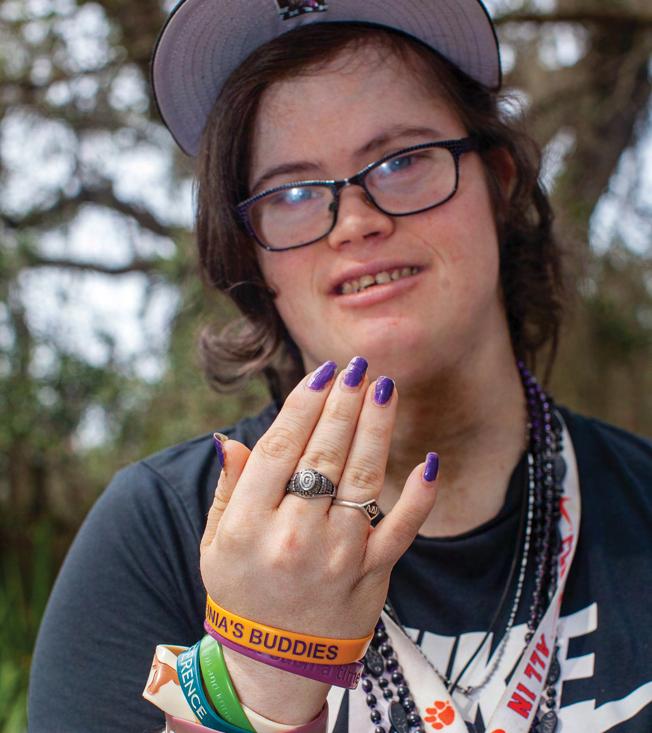
She takes care of herself and, at times, also takes care of Ricky. One night her dad came home after consuming a half dozen or so beers, and, though the house was a mess, decided to go right to bed. When he woke up the next morning — or maybe afternoon — the dishes were done, and the clothes were washed. “Grace. You are the best woman I have ever met,” Ricky told her, and she responded by warning him that “Mom can hear you.”
Ricky, of course, does his share of taking care of his best friend. He even paints her nails purple, her favorite color. And Grace, who makes a habit of staying up late,
sometimes has to tell Ricky when it’s time for him to go to bed. In their give-andtake relationship, she has gone so far as to giving him a nickname — “Teri Yacky” — “because you talk so much.”
The good-natured ribbing between father and daughter continues. They have their differences on occasion, but nothing that will ever affect their rock-solid relationship. “We have our fights once in a blue moon, but she’s a good one. We were best friends from the beginning. It drove Maggie crazy,” Ricky concludes. SiP SiP
VEHICLES WITH LARGE SEATING CAPACITY STREET LEGAL FOR DAY OR NIGHT

APPROVED FOR RENTAL WITHIN WILD DUNES, KIAWAH & SEABROOK 25MPH/SEATBELTS PROVIDED
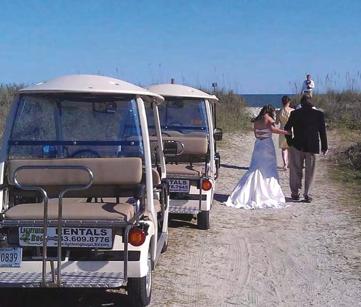
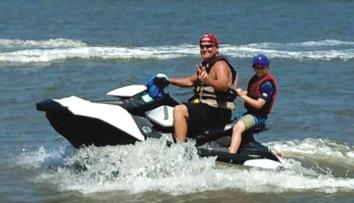


For availability, rates, location information and reservations visit RentCarts.com | JetSkiSC.com

“
Without her, I wouldn’t be here. She is the greatest blessing I’ve ever been given.
— RICKY MYATTGrace Myatt shows off her Clemson ring. She’s a proud graduate of the school’s ClemsonLIFE program.
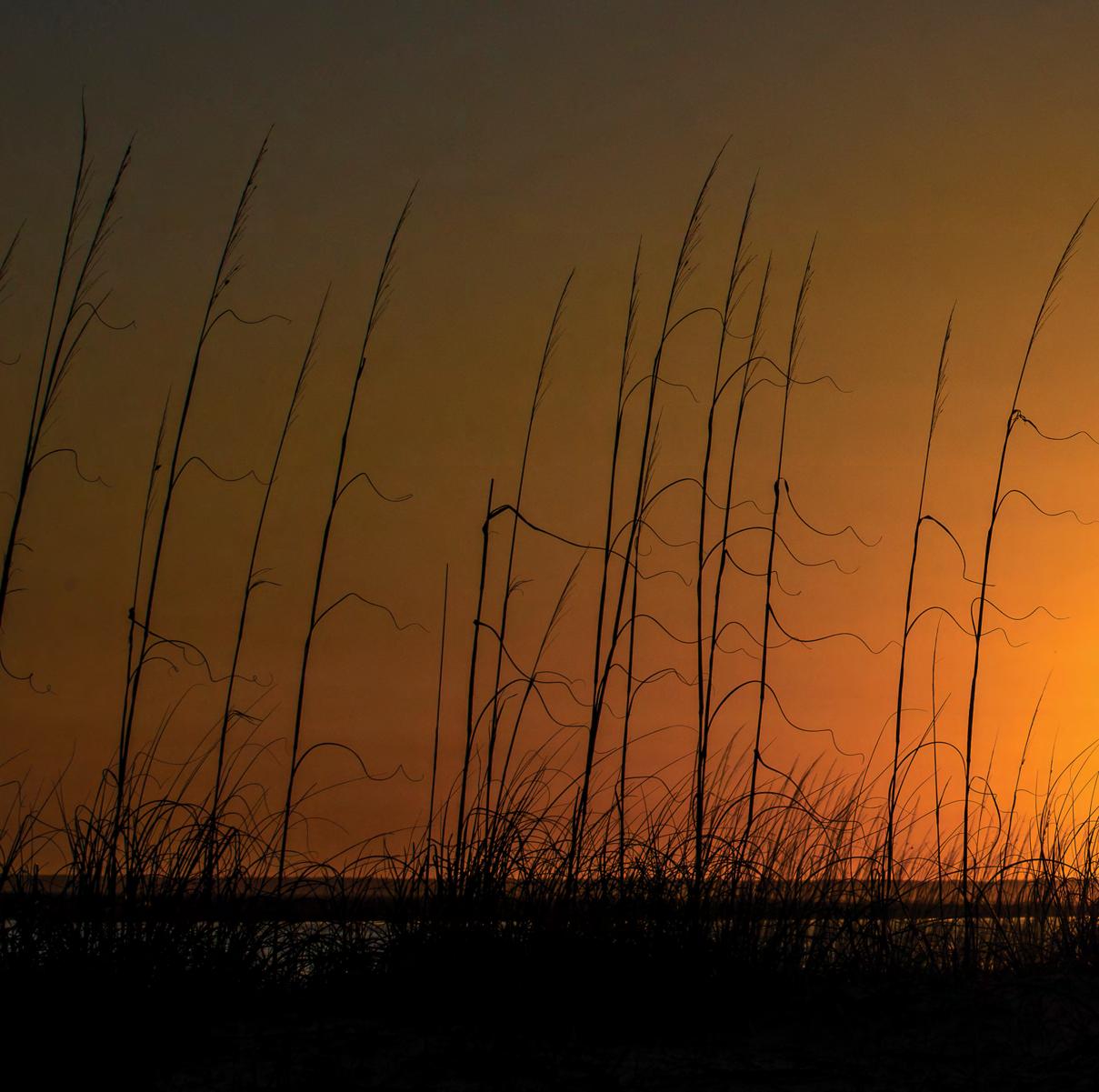
The unspoiled barrier island just north of Dewees Island offers some of the best coastal camping on the Eastern seaboard. Hastings Hensel explores Capers’ best feature: Solitude.
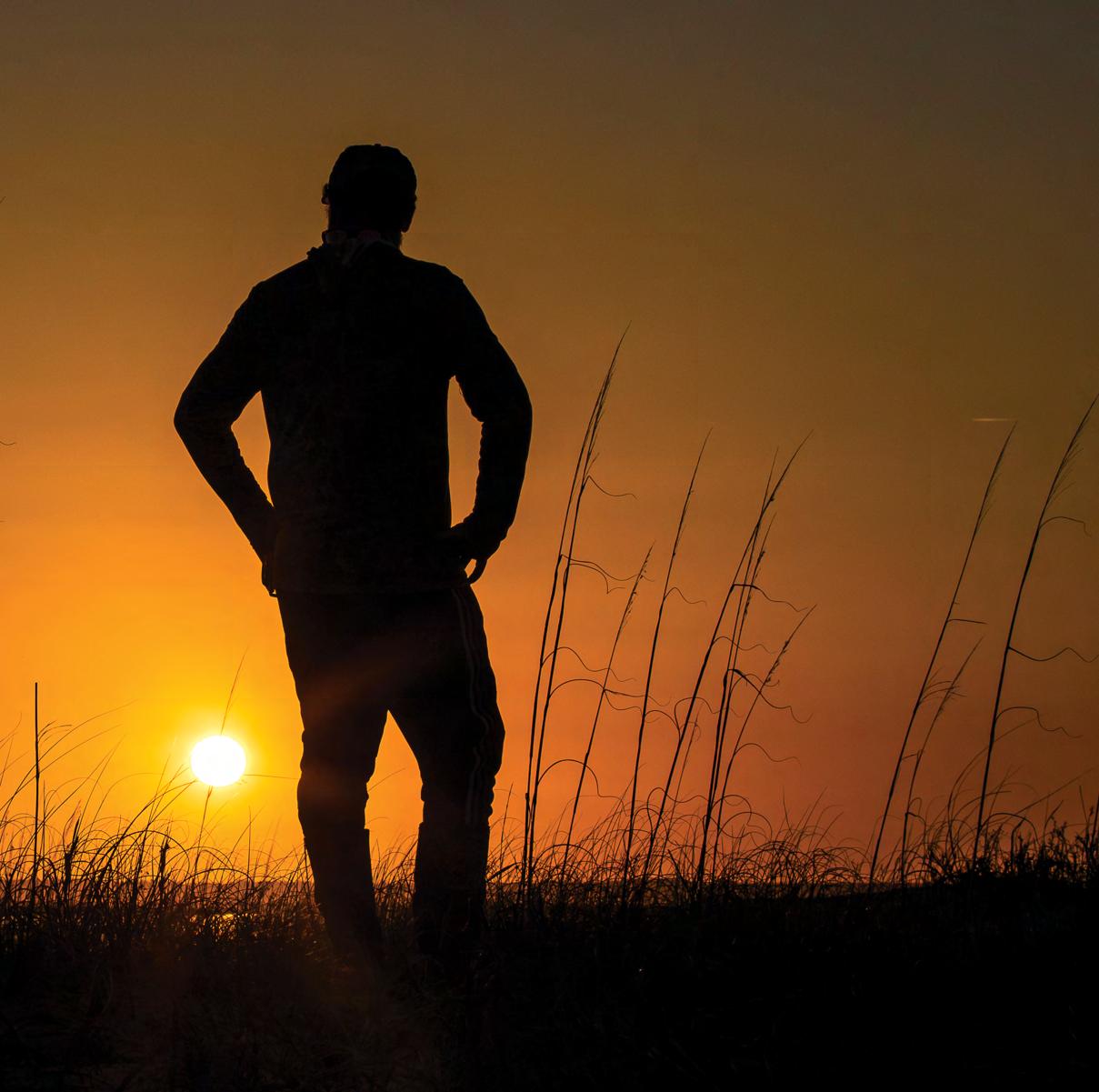 Photos By Mic sMith
Photos By Mic sMith
Once upon a time, for millenniums upon millennia, as the glaciers melted and the sea levels rose and fell; as the granite rocks of the Appalachian Mountains eroded and tumbled; as sand coursed its way through the ancient river system and accumulated atop the dead spartina grass in the marshy mouths and deltas; as the first seeds of salt-tolerant plants like yaupon holly and live oaks took root in the wrack — this island had no name.
The first humans to set foot on it, the indigenous Sewee tribe, surely called it something, but that name is lost in our recorded histories as if blown or washed away. At the dawn of European colonization, it was known as Sessions Island, and then Capore Island, and now Capers Island — a collection of names that have shape-shifted, it might be said, like the island itself.
“In the late 1600s, William Capiers and his two brothers got a king’s grant to farm Capers Island,” explains Shane Ziegler, who since 1997 has been taking people to the island with his company, Barrier Island Ecotours. “Some of the crops were asparagus, celery, and peas — and they also had livestock. After the Civil War, apparently, the island was pretty much abandoned by the Capers family, but the slaves or servants remained out there.”
Ziegler says that a hurricane in the late 1800s made the island uninhabitable, and the Capers slaves and their descendants left for nearby Gadsdenville. After that, the island had a handful of owners until the state purchased the land in 1975.
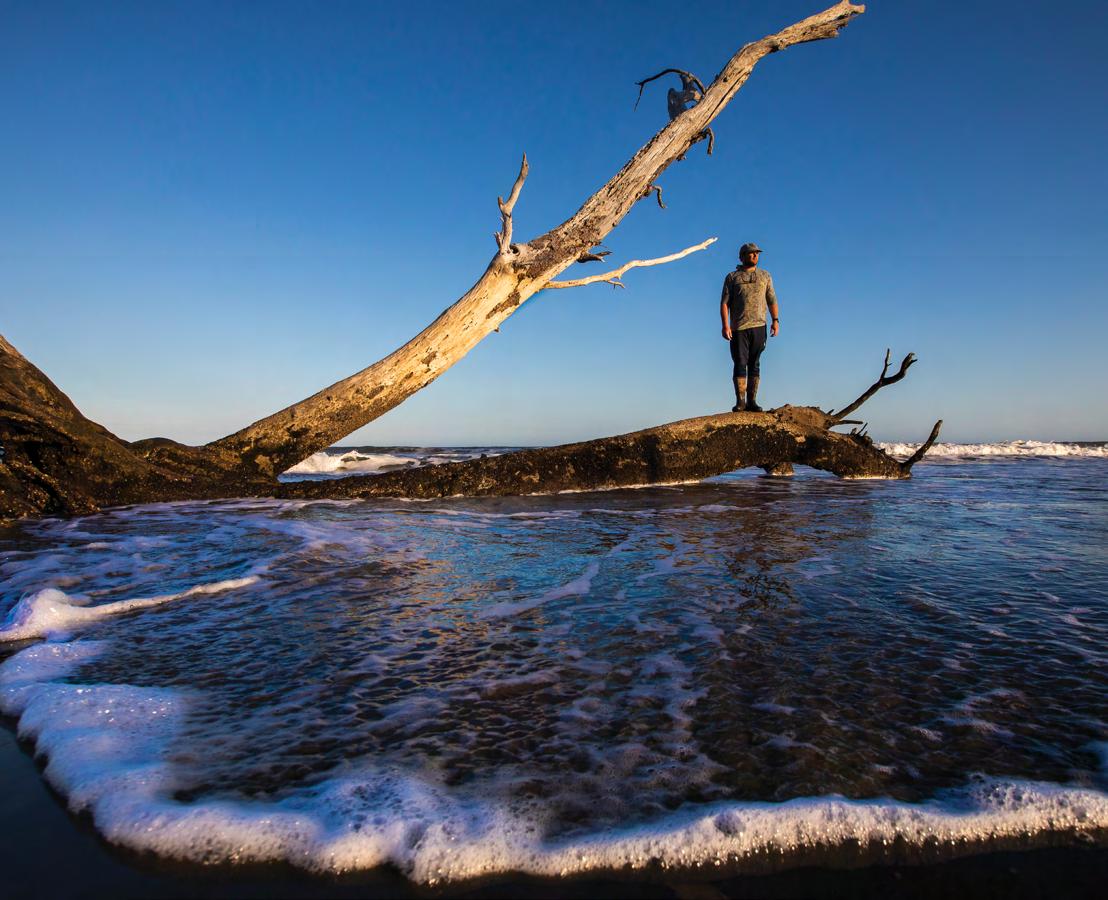
Once upon another time, not even a millisecond in deep time, on a March afternoon of this year, I set foot on the island for the first time. After hearing that Capers camping is some of the best in the state, if not the entire East Coast, I decided I wanted to camp alone out there, like a bona fide castaway. I called the South Carolina Department of Natural Resources and obtained my permit with relative ease. SCDNR manages the land, and, although you can visit the island from sunup to sundown, you can only camp there with a permit. They took down my information, then emailed me a map and the permit — a phone call of 10 minutes, tops.
My best-laid plan had been to kayak out from the Gadsdenville landing in Awendaw on the outgoing tide — about an hour’s paddle in decent conditions — then return the next day on the incoming tide. But when my old kayak cracked and sprang a leak at the put-in, I was forced to hitch a boat ride with a friend. “Just a three-hour tour,” my friend joked on the way out there as we wound our way through the Intracoastal Waterway and landed on the beach at the island’s south end.
Like its sister, Dewees, just across an inlet to the south, Capers is a barrier island three miles from shore, but, unlike Dewees, no one lives there. “It’s one of the few remaining undeveloped barrier islands,” Ziegler says. “It’s the beginning of a 60-mile undeveloped stretch on the East Coast of the United States, starting with Capers. It’s just special to visit a barrier island not full of houses and people and to see what it’s like in its natural state.”
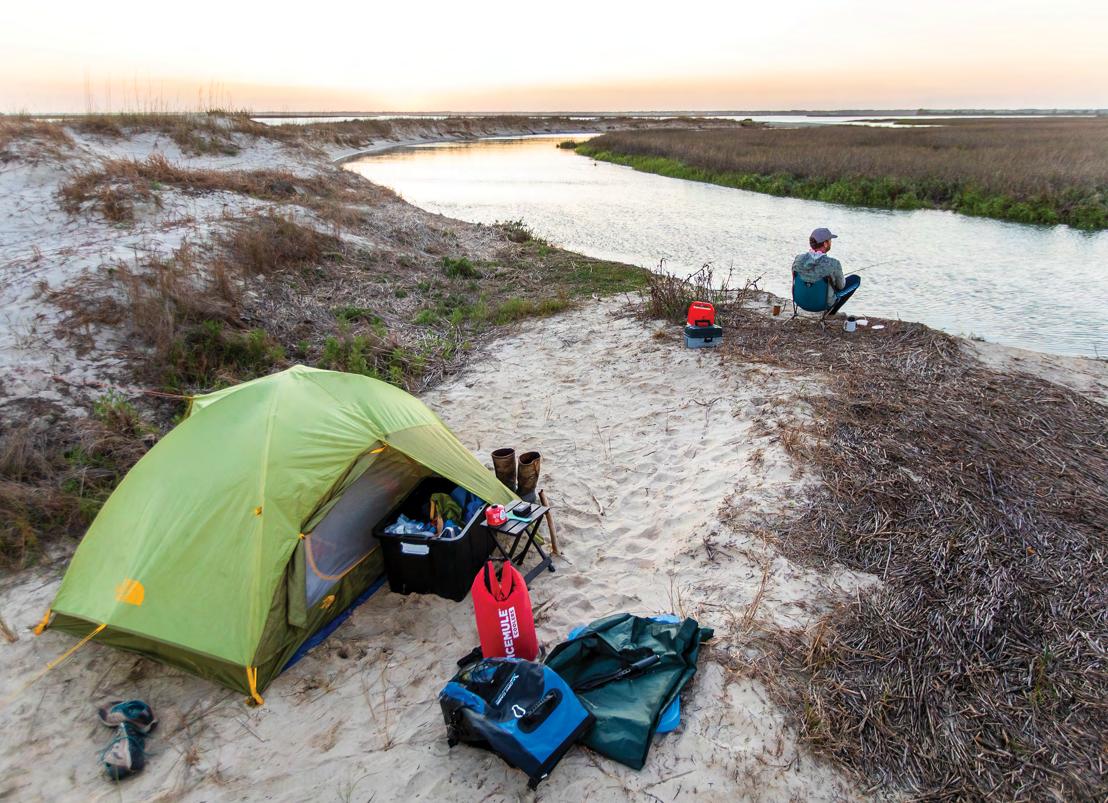
We anchored down — a bow anchor on the beach, a stern anchor in the inlet — and I unloaded my gearbox. I said goodbye to my friend — who would return in the morning — then a quick hello to a school group fieldtripping with Barrier Island Ecotours. I found a campsite to pitch my tent behind a sand dune, at a bend in the back creek, out of the wind, which — I must admit — was howling out of the west. But I did not curse it. No bad weather, the old camping adage goes, only bad gear. Or, the more Zen approach: No bad weather, only bad attitudes. I battened my fly tarp, let the wind do its thing, and remained thankful it drove the bugs away.
After the Ecotour group disembarked,
“The Reynolds family, of Reynolds aluminum wrap, owned it from the ’50s until the early ’70s, before the state bought it.”
shane Ziegler
In the maritime forest, the writer considers climbing a live oak for a castaway’s lookout (above), but then settles into a more relaxing evening of saltwater fishing.
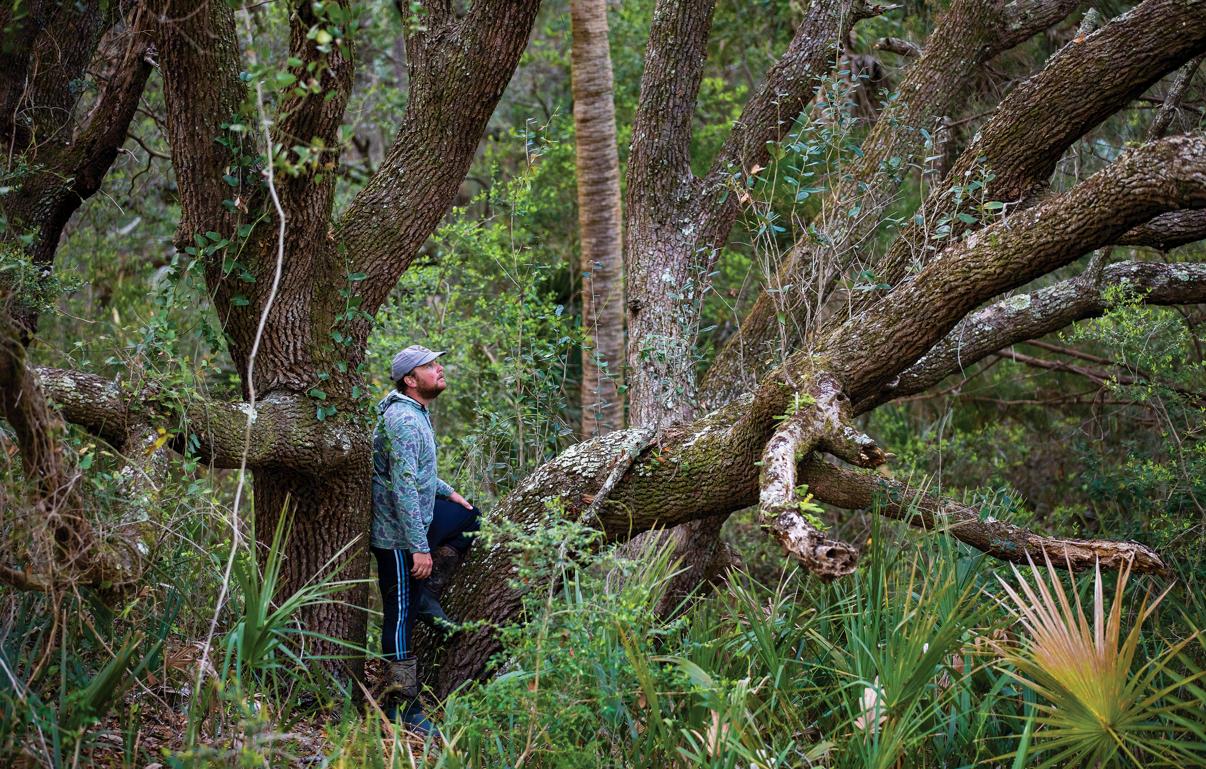
there remained a few sea-shellers who’d anchored their boats for an afternoon of beachcombing, but they soon left, and I found myself as I had hoped — truly marooned. As the tide drew down, the sand spits rose up like skeptical thoughts: Why do this? Why, that is, camp alone? I’d be lying if I said such questions don’t float through my mind whenever I solo camp.
I suppose I could fall back on the old Romantic notions of nature being good for the soul or even cite the scientific research that confirms outdoor activity is the best thing for well-being. Sure. Or I could say that, yes, I like self-sufficiency. Or I could confess that I could find no one to come along.
All true enough, but it dawned on me that I need the rituals of camping and that going through these rituals gives me a contemplative purpose. The selection of the site. The pitching of the tent. The unfurling of the sleeping pad and sleeping bag. The setting up of the camp kitchen. The rigging of fishing tackle. The fetching and filtering of water. The building of the fire. The stringing of the clothesline. The hanging of the lantern.
With camp staged the way I like it — after a constant, Tetris-like arranging and rearranging of gear — it was time to explore.
I walked up the shoreline and arrived at the famously photogenic “boneyard beach,” where the upturned roots of fallen trees looked like giant spiderwebs. Here the trunks of palmetto trees stood rigid, with their fronds tickled by the wind. The surf breathed. Whitecaps winkled the ocean. Above me, in a sky streaked with contrail clouds, a buzzard circled in tipsy flight as if buzzed.
Were it not for the wind, I might have walked the whole 3-mile shoreline and back all the way to the north end, where I’d heard the shelling was better. After all, I had the time, and what else was there to do? But I decided, instead, to venture into the thick green wall of jungle vegetation, the maritime forest, or what I referred to jokingly as “The Heart of Darkness.” I followed a trail through cabbage palmetto and live oaks until I found the brackish impoundment.
Ziegler had told me about this place: “The Reynolds family, of Reynolds aluminum wrap, owned it from the ’50s until the early ’70s before the state bought it. It was their own private hunting grounds, and they had the impoundment made in 1961.” They flooded it
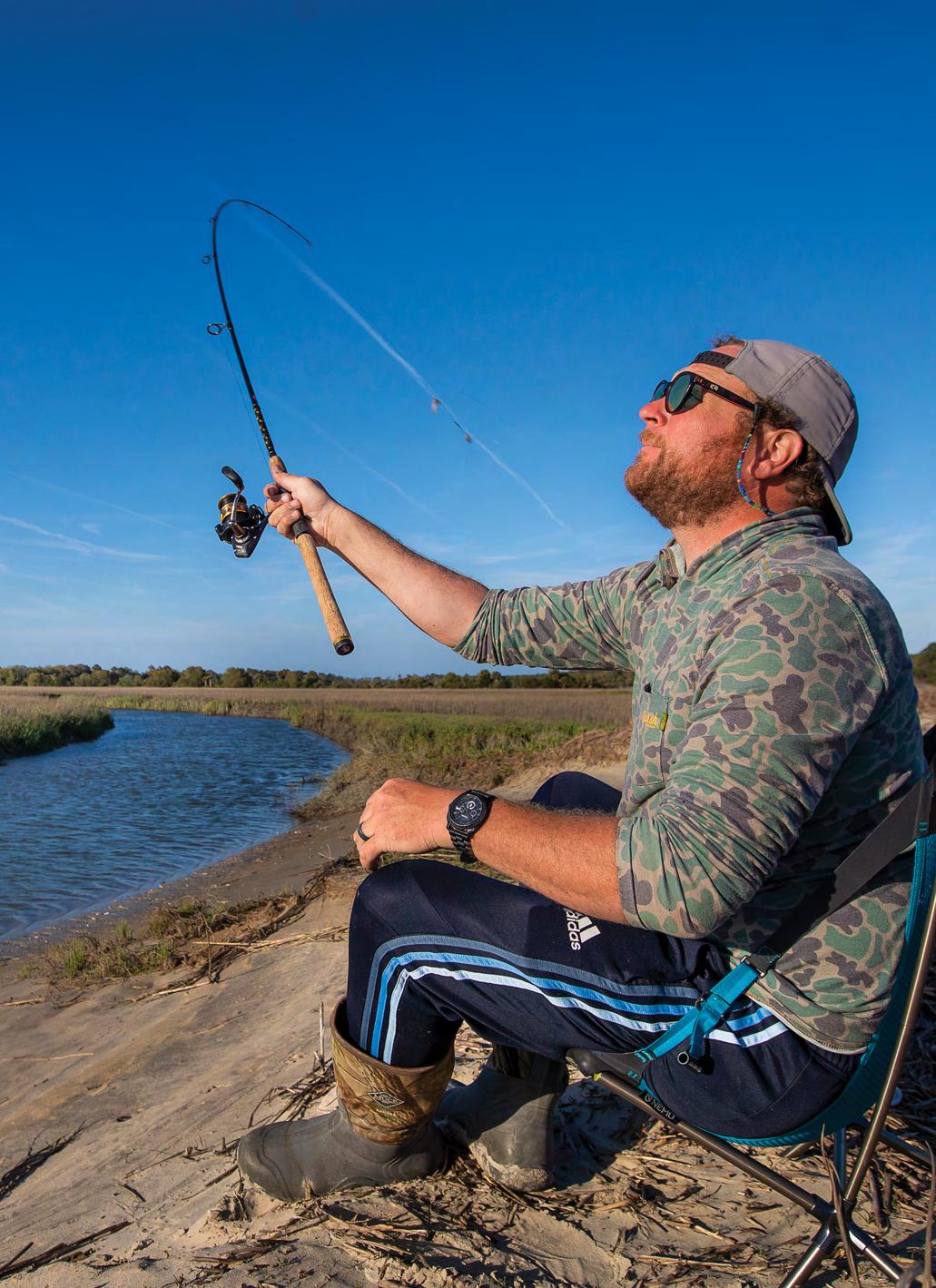
I found myself as I had hoped — truly marooned. Above me, in a sky streaked with contrail clouds, a buzzard circled in tipsy flight — as if buzzed.
for duck hunting, he said, and when the state bought it, DNR managed it with a trunk and gate system — as you see in old rice fields — for migratory waterfowl and other wildlife. But when the recent storm surge broke through the dike, the state decided not to fix it because the next storm would, inevitably, do the same thing.
The impoundment has since leveled off, and I was hoping to get a look at the legendary 16-foot alligator I’d heard mention of in an online forum — or a bobcat, a coyote, or even a raccoon or a rabbit — but I had no such luck. I was happy enough to see a great egret stalking the mud flats, which were punctuated with deer tracks and alive with fiddler crabs, and then doubly happy to find that someone had erected an ID plaque for the Darlington oak, a species I did not know and would have missed on my own.
And then triply happy when I returned to camp and found my tent had not blown away. The tide was coming back in, and it was time to cast out a line, cook dinner — grilled steak on Reynolds aluminum wrap, of course — and settle into my camp chair for the star show.
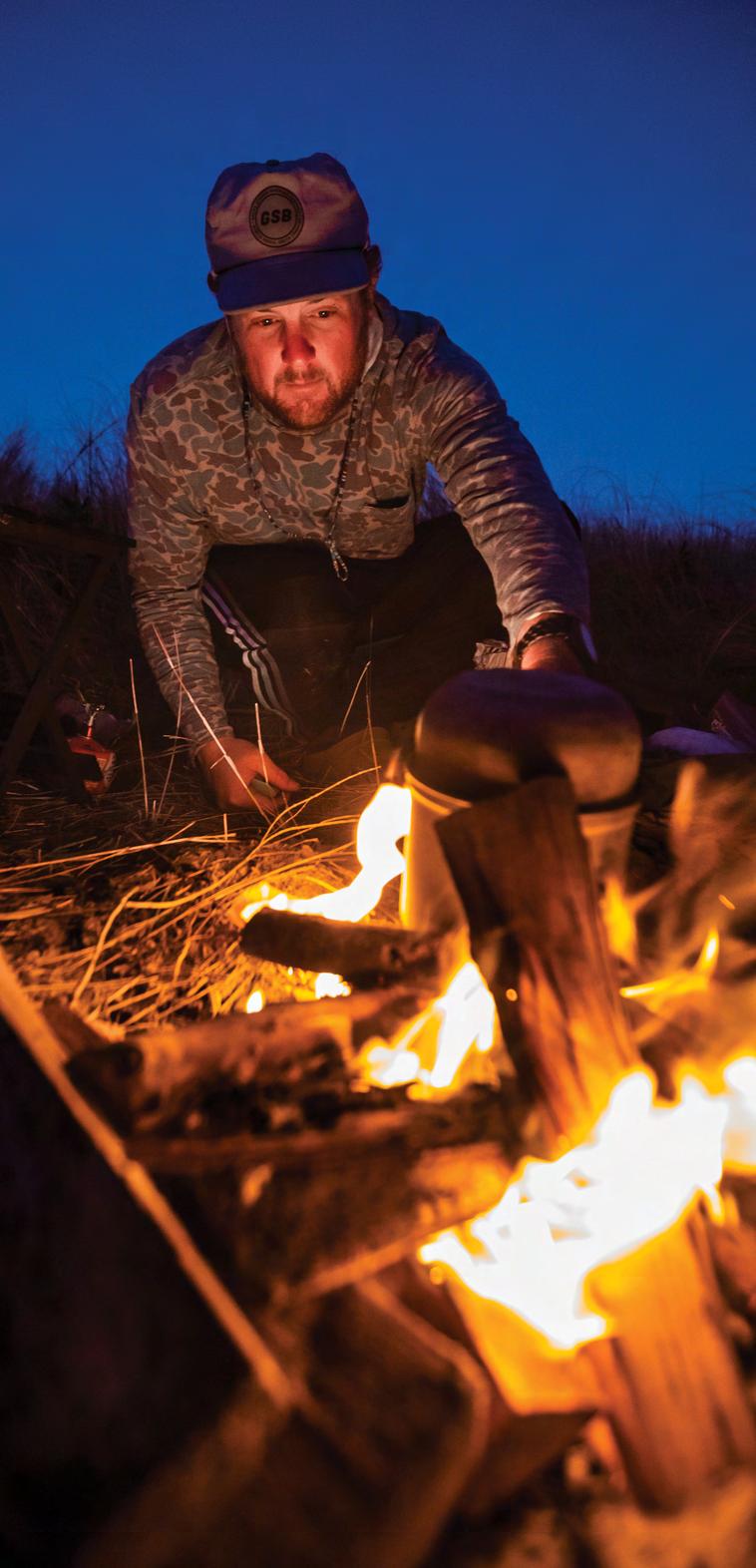
I thought about how Ziegler had told me the island was changing and, at some point in the future, could be no more. “A lot of people think the erosion on Capers is a new event,” he says, “but it’s been naturally eroding about 15 feet a year since 1875. Just the way the hurricane changed the inlet on the north end in the 1800s and changed the direction of the sand flow. Every time a wave breaks now, it’s picking up sand and carrying it away. And there’s not the sand in the longshore current that should be getting to Capers. It’s getting pushed up and around to the next barrier island.”
But, for now, the stars were shining intensely beside a bright crescent moon hanging in the sky, and the view was as it might have been a million years ago. SiP SiP
Dinner over an open fire is all that remains to do before the night’s star show.




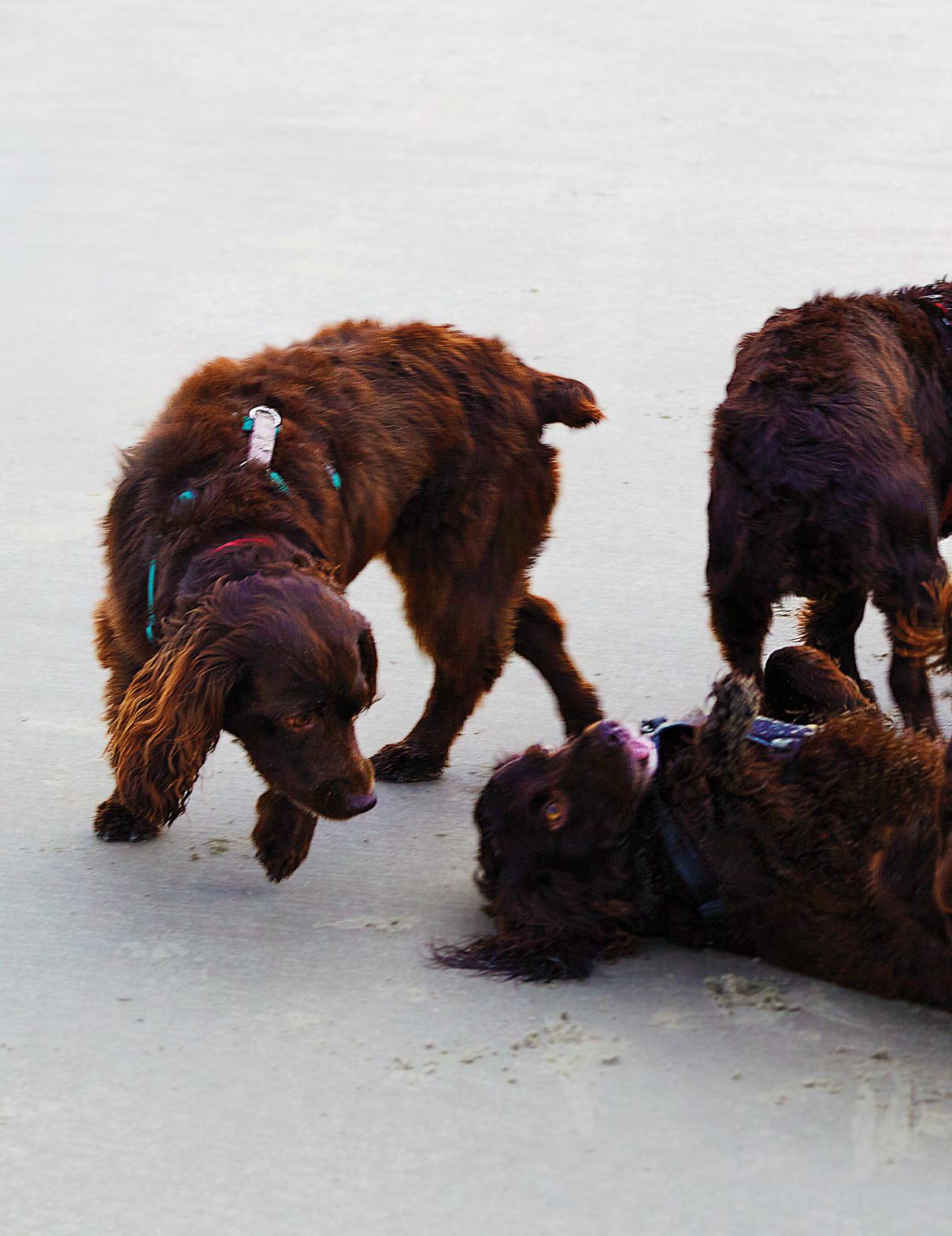 Millie plays with her offspring on Sullivan's Island.
Millie plays with her offspring on Sullivan's Island.
Madeleine McGee, Bunky
Wichmann and their family raised a bevy of Boykin spaniels at their Sullivan’s Island home during the height of the pandemic. Today, the beautiful brown pups spread joy across the country and beyond.
 By Jennifer Pattison Tuohy.
By Jennifer Pattison Tuohy.
Madeleine McGee’s love affair with the Boykin spaniel began while she was hiking in Peru. “Everyone told me that going to Machu Picchu changes you, helps you find your way,” she says. “My ‘aha!’ idea from the trip was, I’m going to get a dog.” Once back home on the beach on Sullivan's Island, she told her father, Peter McGee, about her plan. He asked, “What kind of dog?” She replied, “Well, I hadn’t gotten that far.” As luck would have it, someone walked along with a Boykin, and the rest, as they say, is history.
Born and raised in downtown Charleston, Madeleine grew up moving to Sullivan’s for the summers from age 8. After attending Ashley Hall with her sister, Evie, she went to college in Virginia. “I didn't go to USC or Clemson, so, in some ways, the Boykin was my South Carolina connection,” she muses, sitting on the front porch of her family home on I’on Avenue, looking toward the ocean, her two Boykin spaniels curled up on the sofa with her.
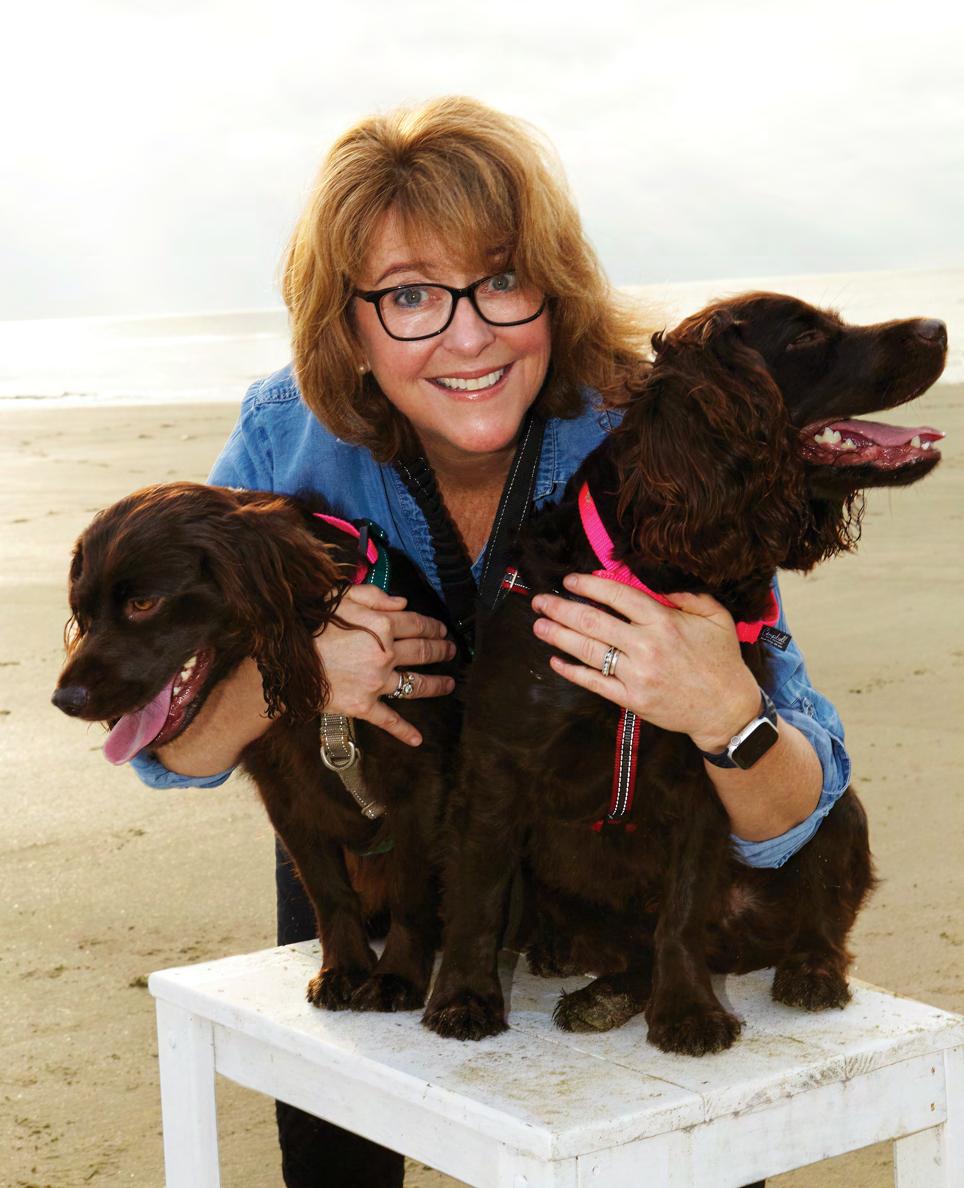
Only 13 states have official state dogs, from Alaska’s malamute to Massachusetts’ Boston terrier and Maryland’s Chesapeake Bay retriever. Boykin spaniels joined the party in 1984 when Gov. Richard W. Riley declared them the official state dog of South Carolina.
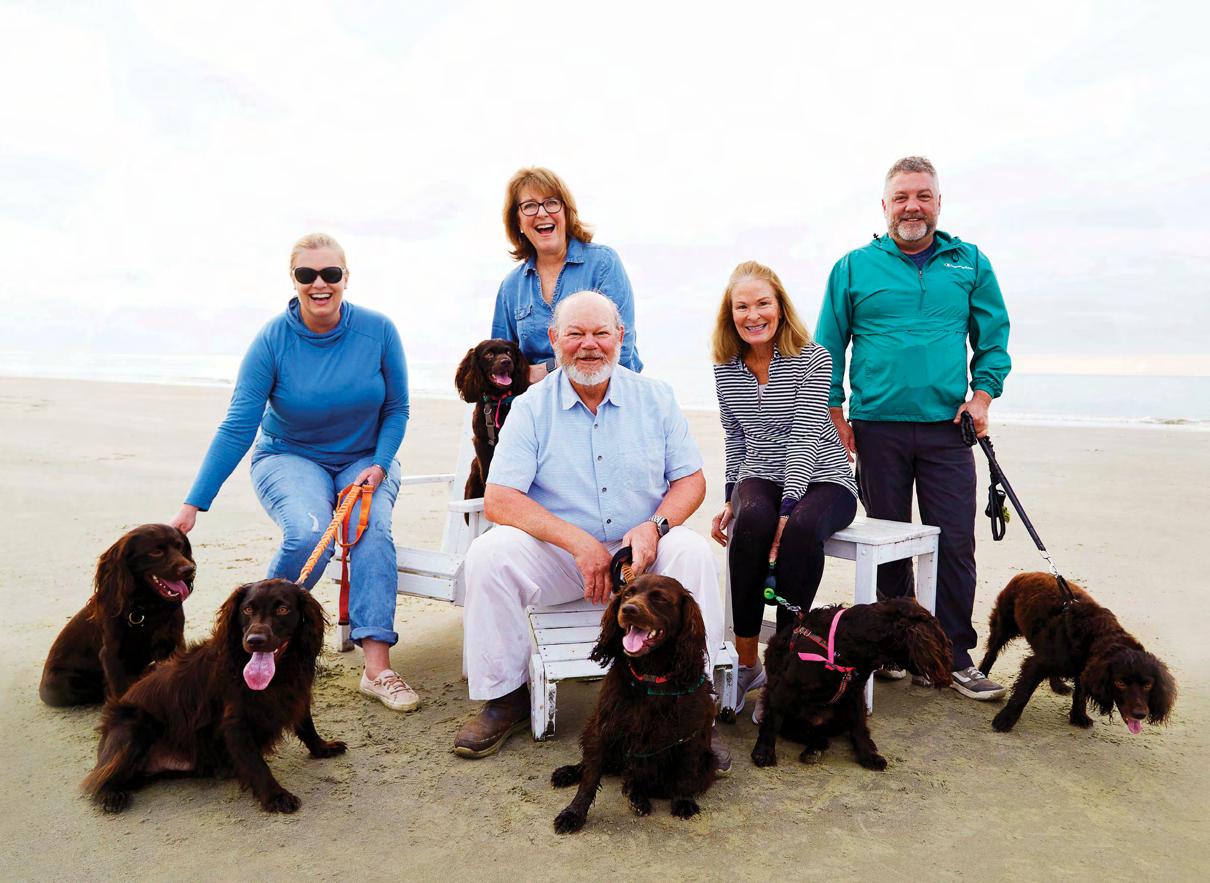
The breed was developed in the state in the early 1900s, when Alex White, president of the local bank in Spartanburg, came across a small brown dog on his way to church one Sunday morning. He adopted the pup, whom he named Dumpy, and was so impressed with his intelligence that he sent the dog to a trainer — Lemuel Whitaker “Whit” Boykin, a sportsman from the Boykin community near Camden, South Carolina.
Boykin took the little brown dog and started the Boykin spaniel breed, developing it to be an ideal dog for hunting ducks and wild turkeys in the nearby Wateree River Swamp.
“The premise was a small dog that didn't rock the boat,” says Madeleine. At around 30 to 40 pounds, the Boykin is light enough for retrieving ducks and launching into the water from small hunting boats.
Madeleine did not need a hunting dog. And, because responsible dog breeders don’t place hunting dog puppies with non-hunting families, she might have been out of luck. But a connection to a breeder found her adopting a former breeding dog long past her pupproducing days. “I had Mouse for a year before she died from cancer,” says Madeleine. The breeder offered her a gun-shy 1-year-old male pup. Beau became her constant companion for the next 15 years.
Beau also gave his mom a helping hand in the romance department. “Bunky’s kids wanted him to marry me because they wanted a dog,” she says with a hearty laugh. Madeleine and Bunky Wichmann were married
"The dogs may not know they are related, but they sure do recognize each other on the beach.”
Bunky Wichmann
The pups wound up both close to home and far and wide.
Praline lives just three bocks away from mom with Roy and Kelsy Willey and their three children.
Sully (for Sullivan’s) lives with Mary and Rich Landers in Philadelphia most of the year but vacations on Sullivan’s Island, right next door to mom Millie, the rest of the time.
Rusty lives across town with Laura Beck and her two boys and has mastered surfing the waves of Folly, where Thomas teaches surfing with Sol Surfers Surf Camp.
Moose belongs to Elaine Eustis, who went to Ashley Hall with the McGee sisters.
Copper lives in Mount Pleasant with Amy and Brian Collins and is the hunter of the clan.
Hazel , another of the small female pups, resides in Columbia with Kevin Smith, artist and creative partner at Riggs Partners, where Hazel is a regular.
Callie runs in the mountains of Caesar’s Head with Barney and Linda Hawkins, and their daughter.
Poe (named for Edgar Allan Poe or Sullivan’s world-famous restaurant, your pick) is down in Houston, Texas, with Marshall and Emily Woodward. He was an early wedding present from Madeleine and Bunky to these family friends.
Spero (the Latin word from SC’s state motto, Dum Spiro Spero — While I Breath I Hope) was sent to Switzerland with friends Andrea Schenk and John Zinsser.
in 2013, and Beau and Madeleine got a whole new family with the arrival of Bunky's three children — Joe, Lucy, and Theo. As Beau approached his golden years, Madeleine knew the family had so much love for him that they never wanted to be without a Boykin. So, another addition to the family came along in 2017, a puppy named Millie. This one Beau was less impressed with.
They decided to breed Millie shortly after Madeleine’s sister’s dog, Cookie, passed. They gave the only male in the small litter to Evie and her husband, Stephen Colbert. That pup, Benny, is now arguably the most famous Boykin in the world. He regularly appears on CBS's nighttime talk show, The Late Show with Stephen Colbert, hosted by Stephen, who also grew up in Charleston.
Another pup from that first litter, a sassy little female named Sadie, also lives on the Island full-time with her proud owner, Bob Sullivan. “The dogs may not know they are related, but they sure do recognize each other when we run into Bob and Sadie on the beach,” says Bunky.
When the global COVID pandemic forced the three Wichmann children back home, the time was right to breed Millie again. With lots of helping hands and plenty of at-home time, it was the perfect opportunity.
Millie’s second and last litter included 12 puppies, with one stillborn. “They just kept coming!” says Bunky. The vet had said maybe nine, but three more followed. With uncanny timing, the puppies arrived on Election Day 2020. “It was still in the middle of the pandemic, so we didn’t need the dining room for a big Christmas dinner that year anyway,” says Madeleine. In reality, the pups took over the whole house and occupied the family fully for almost two months.
“Sullivan’s is just such a great place to raise puppies,” says Madeleine. “We let them run through the dunes to help strengthen their leg muscles and hips, and they had their first swim in the ocean right here.”
Preparing them for their forever homes was probably the hardest part. But Madeleine approached it with all the professional acumen and deep-seated empathy she has brought to her long career in the nonprofit world. Balancing competing personalities while
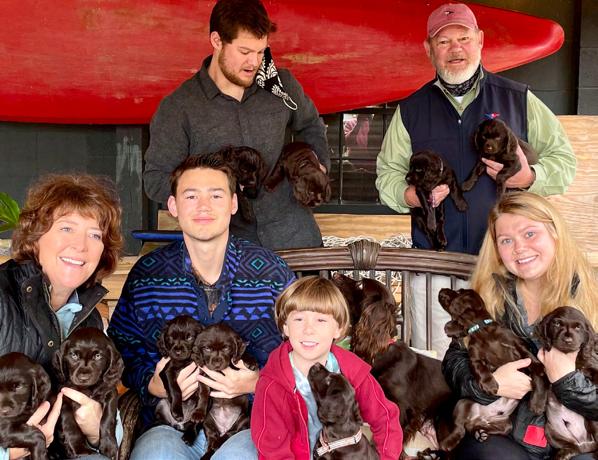
“My father would say ‘get your summer feet on.’”
Madeleine McGee
serving on the Sullivan’s Island Town Council probably helped as well. “She processed it in her brain and her heart,” says Bunky. “Choosing exactly which dog would work best with which owner.”
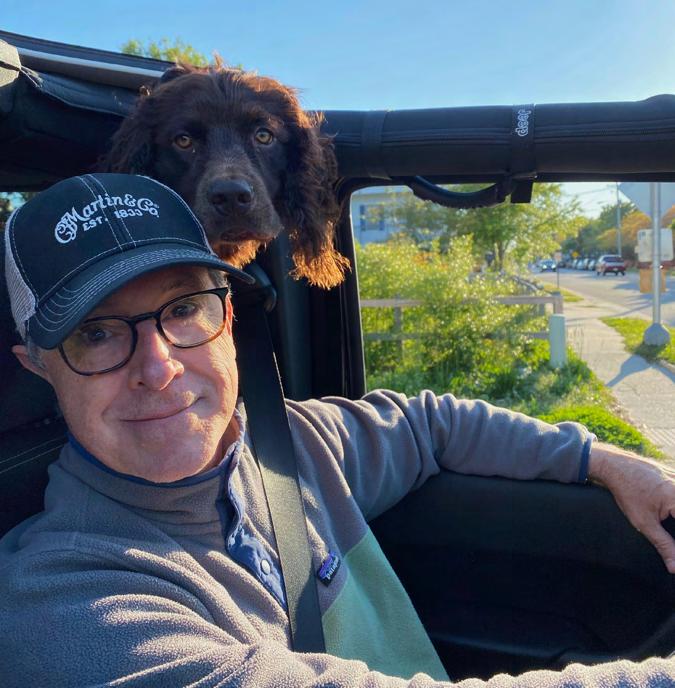
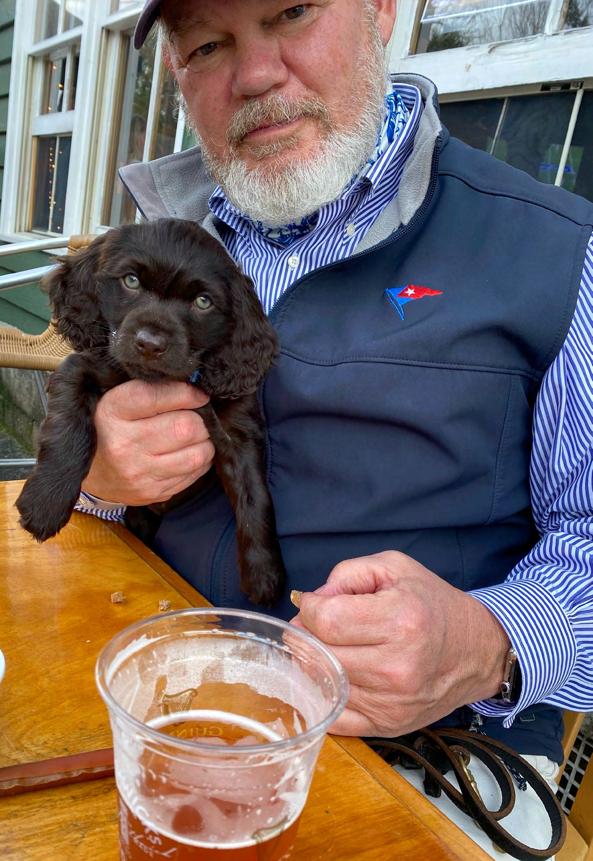
Sadly, Beau passed away shortly after the puppies arrived, and with such a large litter, there was no excuse not to have one for themselves. Stoney, now 2-and-a-half, lives happily with her mom, Millie. Stoney is named after Madeleine’s family. The McGee's ties to Charleston extend back to Captain Jack Stoney, who landed in Beaufort during the War of Independence in the late 1700s.
The family home on Sullivan’s only came into the picture in Madeleine’s lifetime, but it is now forever a part of the Boykin story. The house is called Summer Feet, after her father’s oft-repeated phrase to get his children ready for an ocean swim each evening after work.
“My father would say, ‘Get your summer feet on.’ We would walk barefoot on the hot asphalt of the island’s streets and the even hotter sand of the beach dunes to go for our near-daily swim in the ocean with him.” They didn't complain and their bare soles toughened up for the summer ahead.
Today, a story that started in the mountains of Peru begins again on the beaches of Sullivan's. Forty-four summer feet now happily bound all around South Carolina, to Georgia and Texas, and across the sea to Switzerland. All of them carrying with them tails of Sullivan’s Island. SiP
Benny with Evie's husband, Stephen Colbert, driving around the island. Below, Bunky takes Stoney for her first beer at Dunleavey's Irish Pub. Photos courtesy Madeleine McGee.
Lowcountry Paddlers offers the chance to join a community of kayakers. Hastings Hensel discovers the joy of club paddling — communal eco-fitness good for all ages.
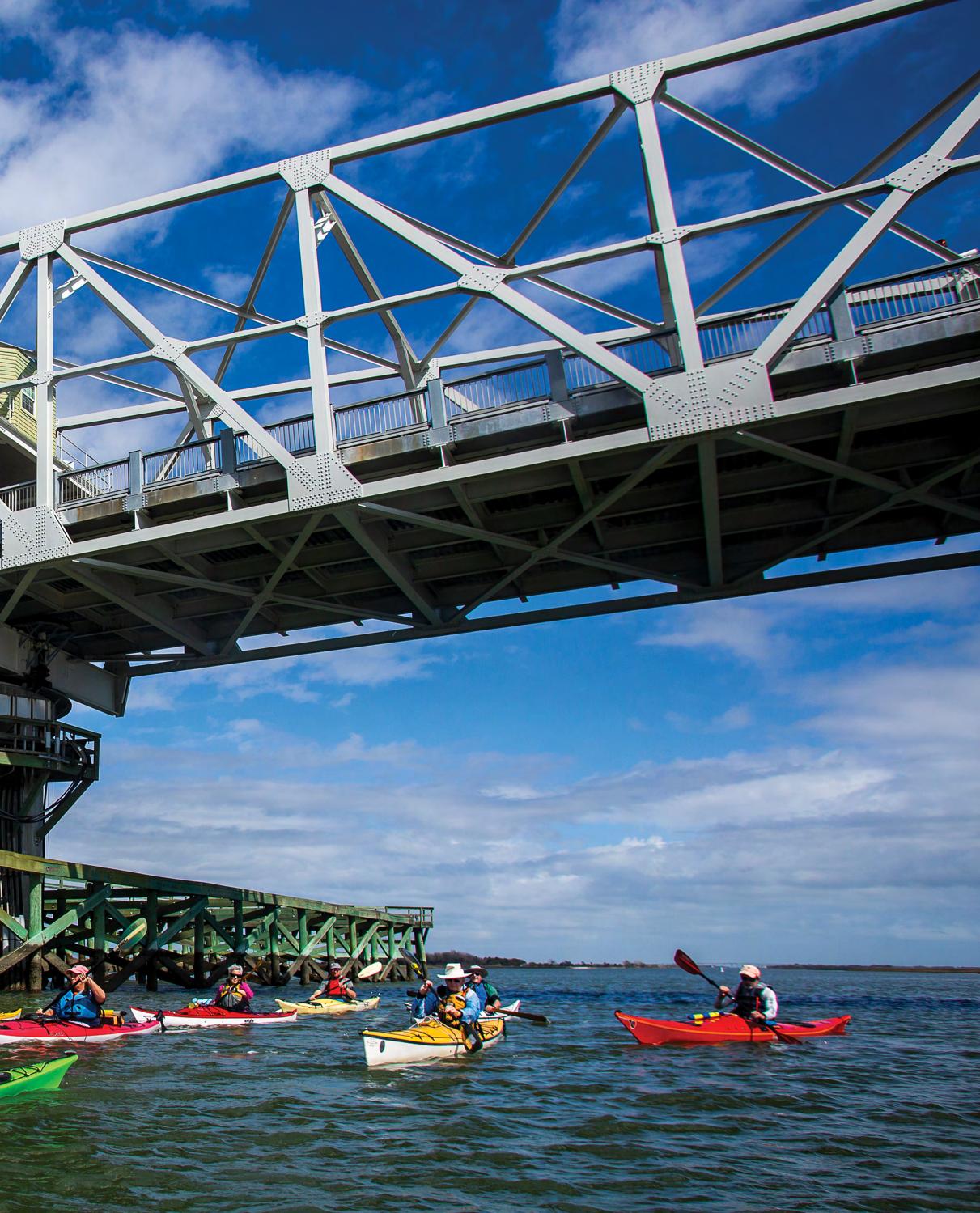
on a sunny Thursday afternoon, we gather at Station 26 — the Sullivan’s Island boat ramp for nonmotorized watercraft — and help each other unload our kayaks from atop our cars. We carry the boats down to the water’s edge, then slip into water shoes and stuff our dry bags with the day’s necessities: water bottles, sunscreen, rain jackets, sponges, snacks. We pull personal floatation devices over our heads and cinch them snug. And before we steady each other’s boats to slide into our cockpits, grip our paddles, and push off from shore, we listen to Lowcountry Paddlers President Dan Hoke explain the day’s route.
We’ll be paddling out through these back creeks, he says, then entering the main channel of the Intracoastal Waterway and, if the wind is right, we’ll enter the Charleston Harbor past the Pitt Street Bridge, and circle around Fort Moultrie. The main thing is to stay together. To veer off into a side creek out here, after all, is to enter a marshy maze.
Today it’s around a dozen members of the Lowcountry Paddlers who have signed up for this “Show N’ Go” paddling excursion – an unofficial club event sometimes referred to as “The Pod Squad.” The group also has 40 or so official, prescheduled paddles a year — but this is an informal, once-a-week, two-hour kayak trip in which you bring your own boat and paddle as a group. “We’re here as a group,” Hoke says, explaining the concept of club
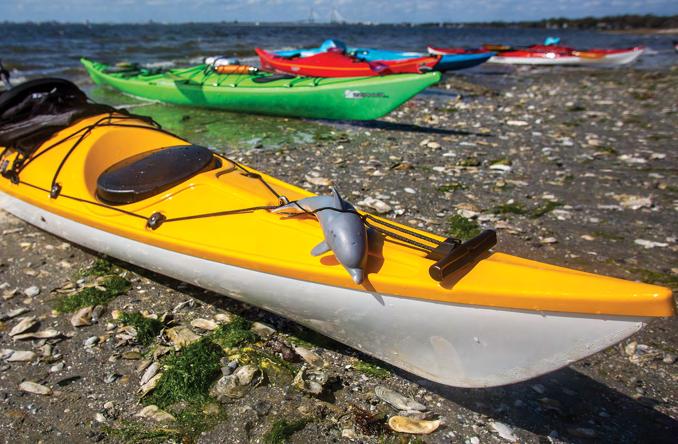
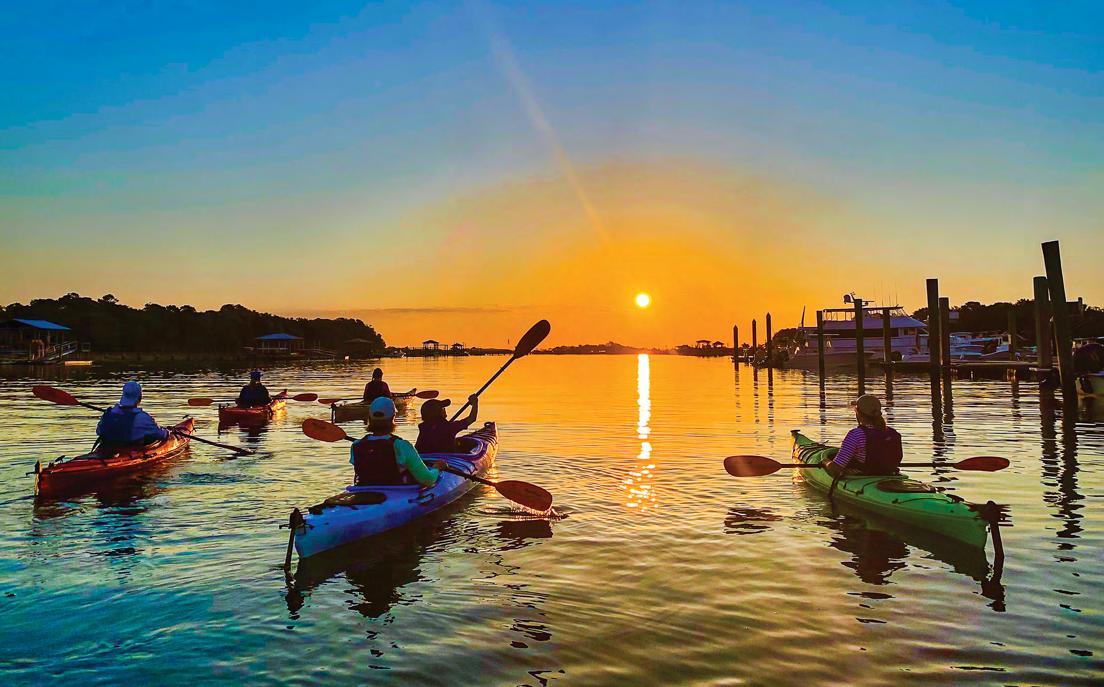
paddling. “We’re here to take care of each other. No rush; no race. We just stay together.”
Paddling is all about balance, and perhaps the best thing about club paddling is that you can balance the best of two worlds. In a few strokes, you can paddle just off to the side in safe solitude. In a few more, you can paddle alongside fellow club members, drifting in and out of conversation as free-flowing as the creek water itself. On the water, you get to know people, who all have their individual reasons for joining but whose explanations ring out in chorus: club paddling is communal eco-fitness good for all ages. “This is my therapy. It’s free, it’s fun, and you meet great people,” says Susan Batla, the day’s trip leader. “We come for the
nature and exercise, and then we all go out for lunch and have a beer or two because you’re just starved.”
Chuck Elliott says, “My wife and I retired here three years ago. We just knew we wanted to kayak, so we took some lessons out at the park. We joined these guys and really enjoyed it. This is something we can do together.”
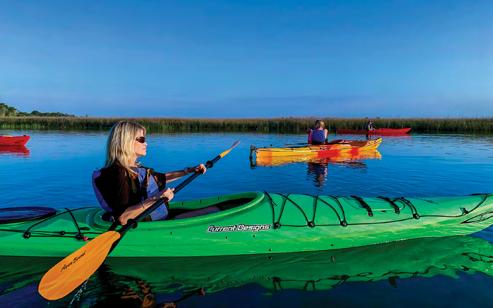
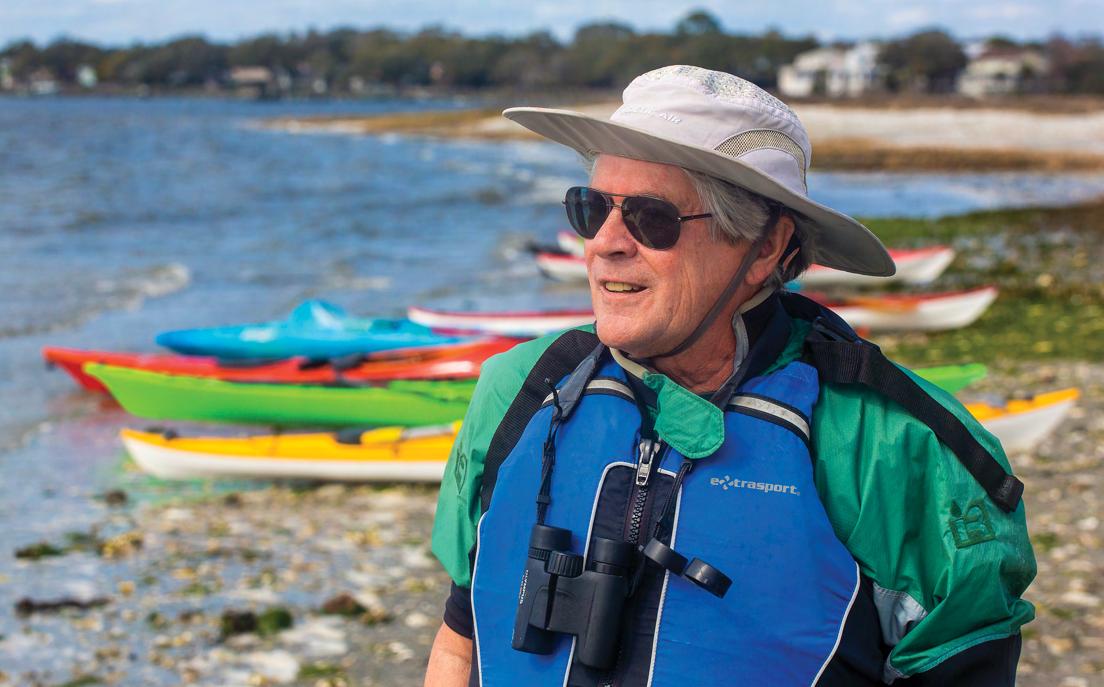
There’s Michael Condon, one of the fastest paddlers in the group, in his 80s, who talks about his old family beach house on Sullivan’s Island and how he got into paddling because his wife is an artist, and they wanted a way to better sneak up on wildlife so she could paint. And Sandy Henbest, who says, “I’m 77 years old. You gotta do it while you can.”
For his part, Hoke moved to Charleston from Virginia largely because of Lowcountry
“This is my therapy. It’s free, it’s fun, and you meet great people.”
~SUSAN BALTA
Paddlers, which began in the 1980s to help supply Charleston County Parks and Recreation with guides for its outdoor program. “I had already been paddling down here,” says Hoke, who started kayaking in college nearly 50 years ago. “I knew the club was here, and I knew we had good paddling. So my first official trip to visit with the club was to do a day paddle and their oyster roast. It’s just sweet. These are the first people I knew when I first got here.”
He’s about to say more when he notices how the group has started to make their windpushed way down the center of the Intracoastal, and he calls out, “Stay up against the shore if you can!” Although Hoke is not the official trip leader today — a role he defines as “ultimately feeling confident that you can get a group out on the water to where you’re going and back safely and to not lose anybody” — he’s performed the duties so often that today he helps Batla ensure the safe passage of everyone in the group.
You don’t have to be certified by the American
Canoe Association to lead a group trip, but Lowcountry Paddlers is a “Paddle America Club” and part of the American Canoe Association, which means they have group insurance. However, with some surplus money in this year’s budget – what’s left over after three good parties (oyster roast, Christmas party, summer picnic) and the invitations of guest lecturers (authors, naturalists, paddlers) the club is sponsoring a handful of members to earn ACA certification.
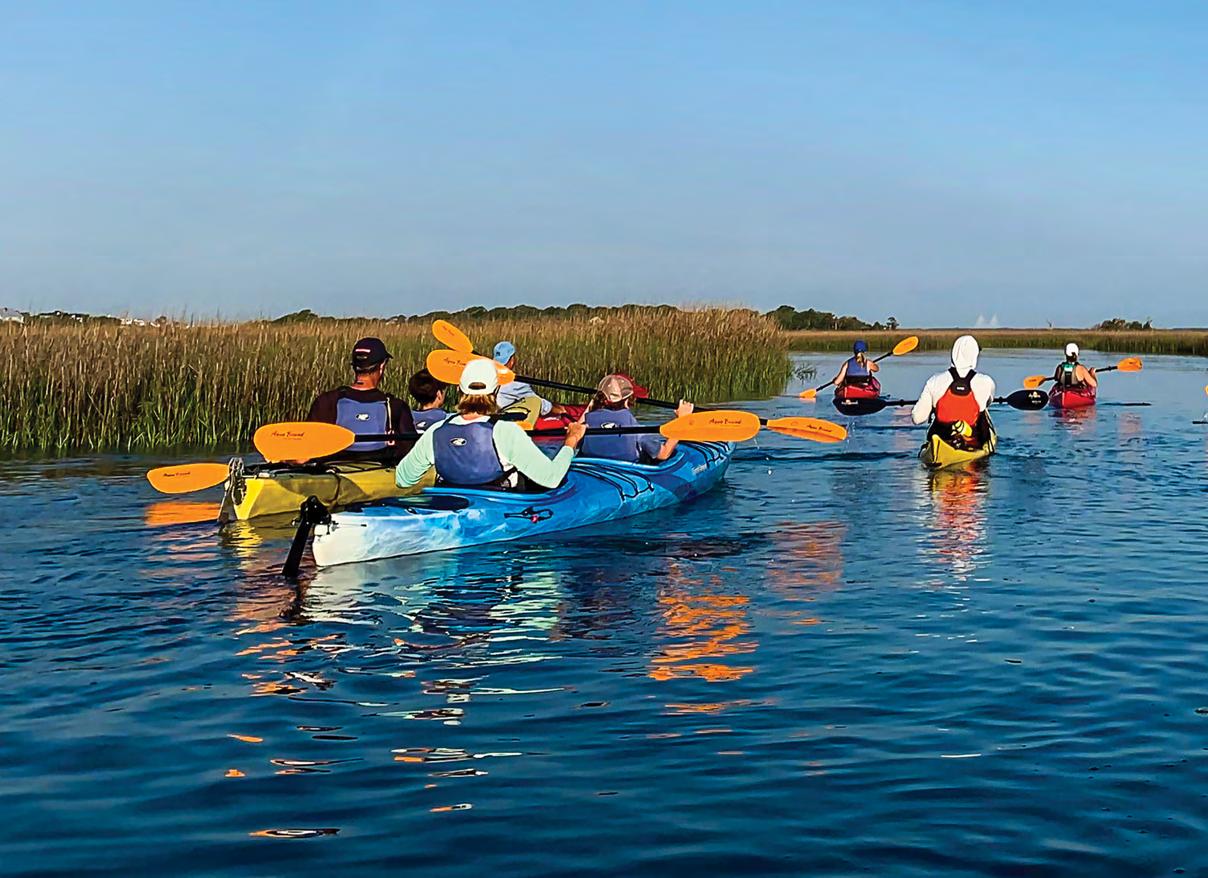
We make our way under the Ben Sawyer Bridge, passing Tolers Cove, and head east northeast toward the Pitt Street Bridge, ornamented with pelicans and cormorants. Someone notices an American flag flapping hard on the opposite point, so we infer the wind is too strong today to paddle out into the harbor. We beach instead on a sandbar just beyond the bridge, eat our snacks, hang out, and hunt for shark’s teeth.
“I just love being close to the water and experiencing everything: the gators, the birds, the fish jumping. I feel like I’m a part of that.”
~BETH HEYWOOD
On the paddle back to the landing, with the tide coming in and the wind at our backs, I decide to break from the standards of journalistic objectivity and become a club member. I realize that clubs are the best sources of collective paddling wisdom — the best tips on gear and technique, the best recommendations for local spots and travel trips — all for only $20 a year, or less than the two-hot dog lunch I eat on my way home.
A few weeks later, on my second trip and my first official one as a club member, we meet at Bulow Landing in Ravenel. Today’s trip leader is none other than Ralph Earhart, a 23-year Lowcountry Paddlers member and author of the guidebook Paddling Charleston. Earhart, who used to be a motor-boater, explains his entrance into the sport thus: “My mechanic was at my house one day and said, ‘We need to do this and this and this.’ I said, ‘I’ll tell you what. I’m going to sign the boat and trailer over to you right now. I never want to see them again or you again.’ So I borrowed
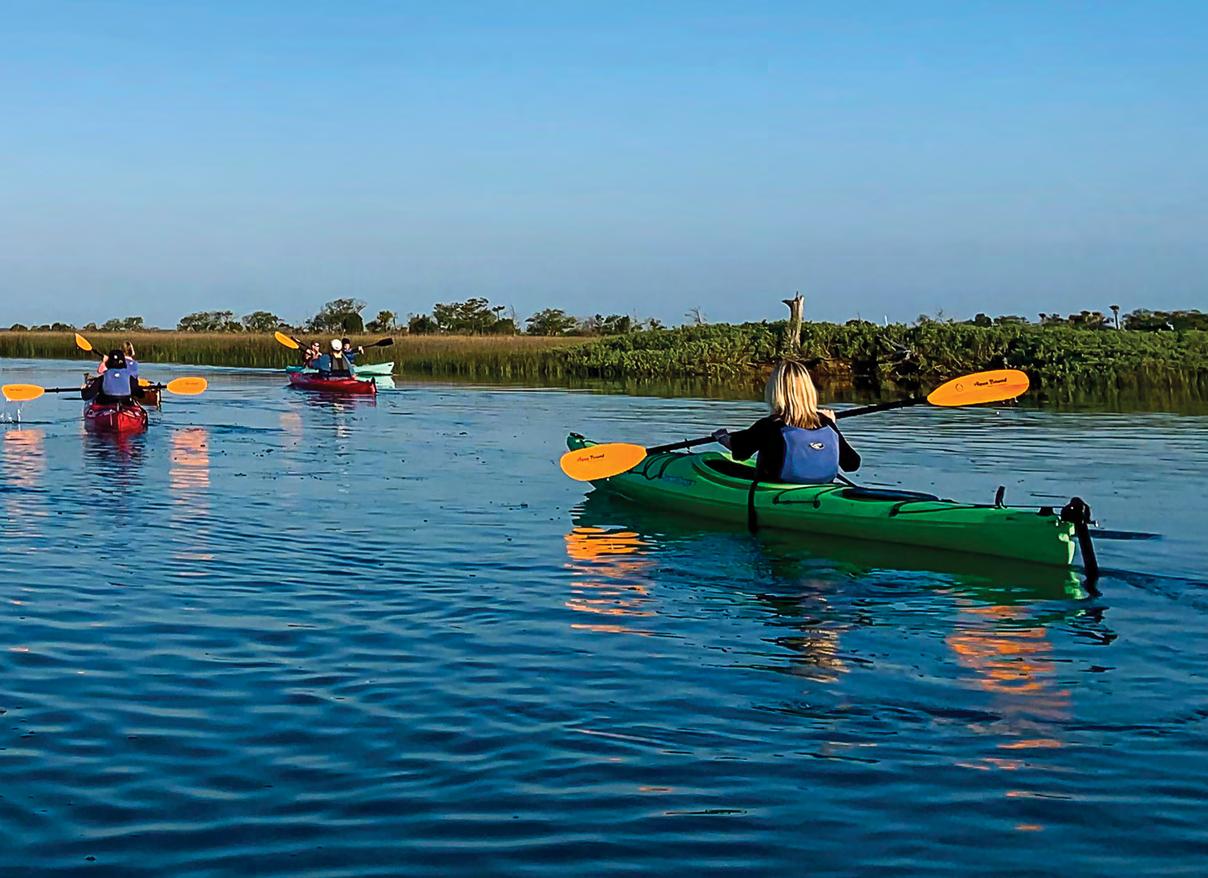
someone’s kayak and started kayaking. Once I started kayaking, I realized there was no good guide to paddle, so I spent about three years writing down lots of stuff. That’s when I wrote my book.”
Per standard trip leader practice, Earhart narrates the route before we disembark. Today we will paddle upstream, under the bridge, along old rice canals looping back to where we started. Roughly two hours and roughly five miles. His vision proves prophetic. We have a simple, beautiful paddle that is beautifully summed up by club member Beth Heywood: “I just love being close to the water and experiencing everything: the gators, the birds, the fish jumping. I feel like I’m a part of that.”
Afterward, we help each other load our kayaks back atop our cars, and we change into dry clothes before Hoke gives a report on future routes. Tonight is the annual oyster roast, he reminds us, and, after that, there will be many great paddling trips in the months ahead.
“We’re here to take care of each other. No rush; no race. We just stay together.”
~DAN HOKE
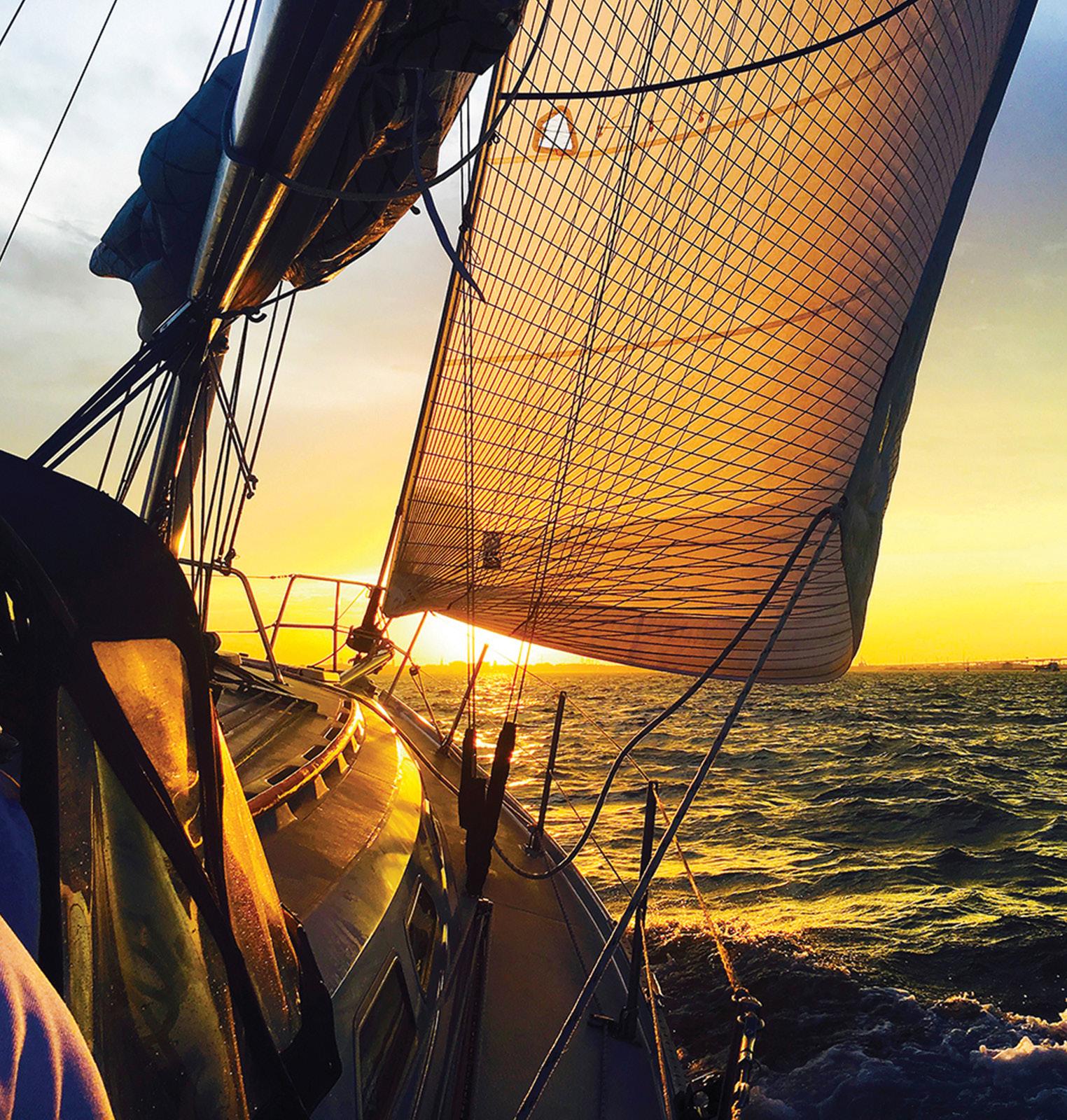
t’s another magnificent day in the Lowcountry. The late afternoon temperature in Mount Pleasant, South Carolina, is approaching the 80-degree mark and the bright sun makes it seem even warmer. While the wind is slightly stronger than the six passengers aboard the sailboat Alliance might have hoped for, it’s an awesome time to be on the water.
Even better, it’s early March, and daylight saving time and the ritual changing of the clocks is still a week away. Forty minutes or so before the nautical tour of Charleston Harbor comes to an end, the sun will begin its descent into the western horizon. This spectacular sight is a precursor of what is to come: the opportunity to marvel at the bewitching beauty of the harbor once darkness falls.
The adventure begins as sailboat captain Mark Stetler cranks up the engine and deftly guides Alliance out of the Charleston Harbor Marina and into the harbor, where wind power takes over. His crew, wife Caroline Knopf, darts nimbly from one side of the boat to the other, adjusting the sails. Most of the
 Photos by Caroline Knof and Mark Stetler
Alliance is a 1988 Ericson 380, “a classic cruiser,” according to Mark Stetler.
Photos by Caroline Knof and Mark Stetler
Alliance is a 1988 Ericson 380, “a classic cruiser,” according to Mark Stetler.
Brian Sherman
Mark Stetler and Caroline Knopf on their sailboat Alliance to explore the beauty of Charleston Harbor.
six passengers choose to enjoy the weather on the hull, while one or two remain in the cockpit with the captain, listening intently to his vivid descriptions of Charleston’s waterfront landmarks and stories of his life as a sailor.
Every now and then, Mark leaves the helm to climb up on the hull and relate interesting information about a specific Holy City landmark to his passengers. For instance, he points out that a Charleston hotel played a key role in World War II and maybe in the history of U.S. presidential politics. As the story goes, Navy Lt. John F. Kennedy and a Swedish socialite named Inge might have been carrying on a tryst at the Sumter House. Someone let his father, Joseph P. Kennedy, a powerful politician and businessman, know that the future president was having an affair with a German spy who was a personal friend of Adolph Hitler. That allegedly was the reason Kennedy was re-assigned to the South Pacific, where he polished his reputation and became a war hero by saving his crew members after his PT boat was sunk by a Japanese destroyer. “None of that would have happened if not for Charleston,” Mark tells his captivated passengers.
A Sullivan’s Islander and native of Ohio, Mark Stetler joined the Navy after graduating from high school “to get out of Cleveland and because I had no money to go to college.” The Navy sent him to Charleston aboard the USS Sellers, where he met a College of Charleston student who needed a ride to Florida for spring break. She said four of her friends had a house in Pensacola, but it turned out to be Stetler and six girls in a tiny hotel room for a week.
That experience didn’t keep him from marrying Caroline, and when Mark said goodbye to the Navy, the two of them left Charleston so he could study photography at the Art Institute of Atlanta. Their next stop was New York, where they both prospered as fashion photographers, traveling all over the country and throughout the world.
During their time in the Empire State, Mark discovered two more avocations that would change his life. He started jumping out of airplanes (skydiving more than 1,500 times) and he found an affinity for sailing. He purchased Alliance, an American-built 1988
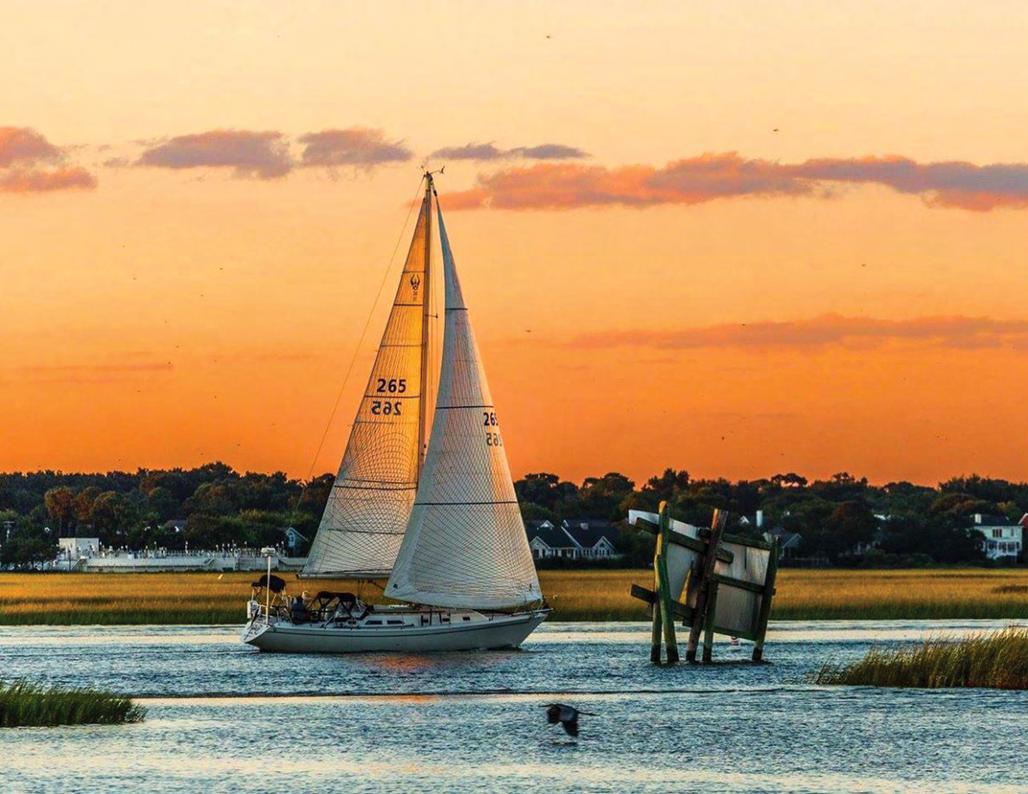
“Give a sailor 40 knots of wind, and he’ll be miserable. Give him 0 knots, and he’ll suicidal.”be
Mark StetlerDuring his time in New York, Mark Stetler discovered two avocations that would change his life: skydiving and sailing.
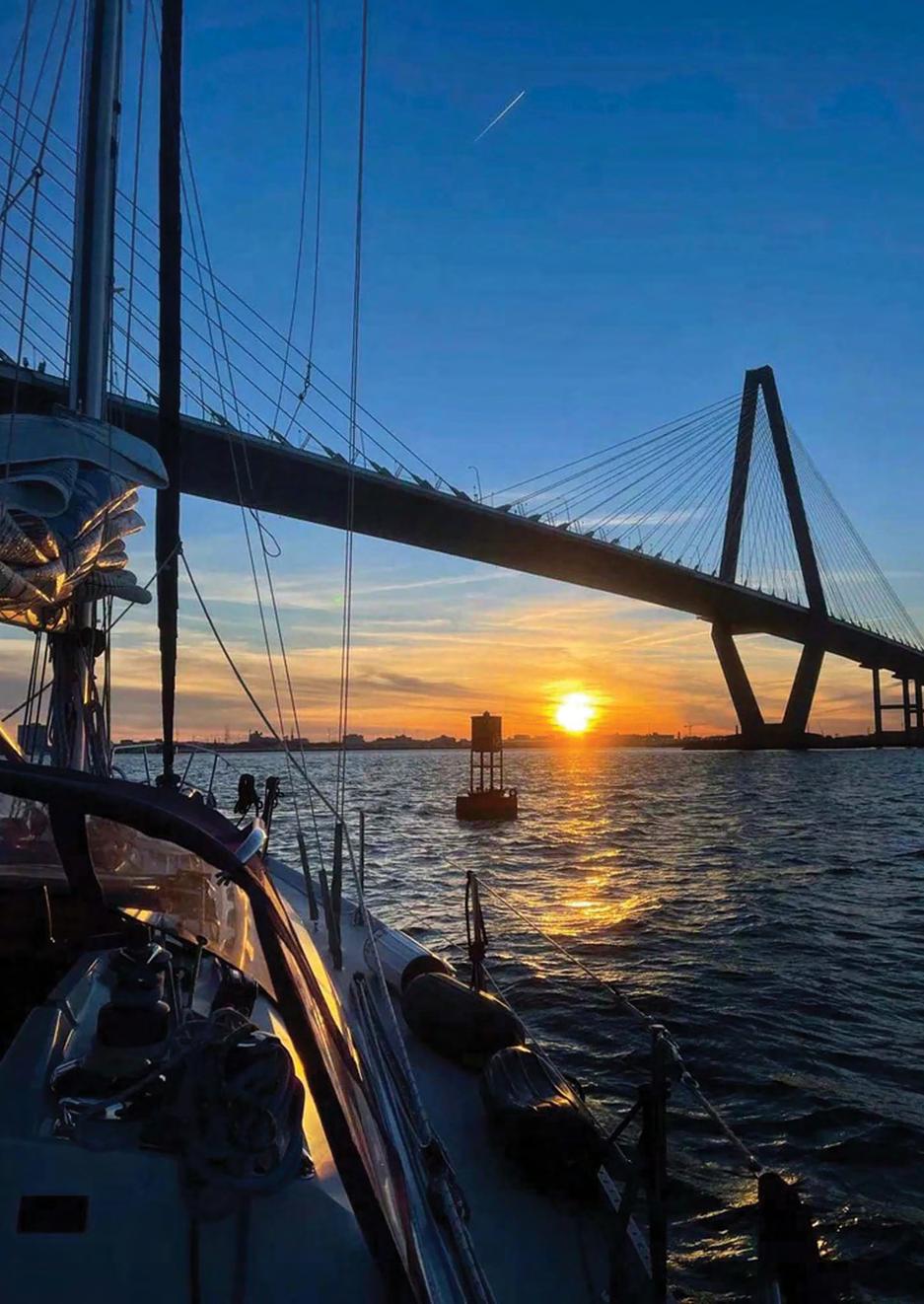
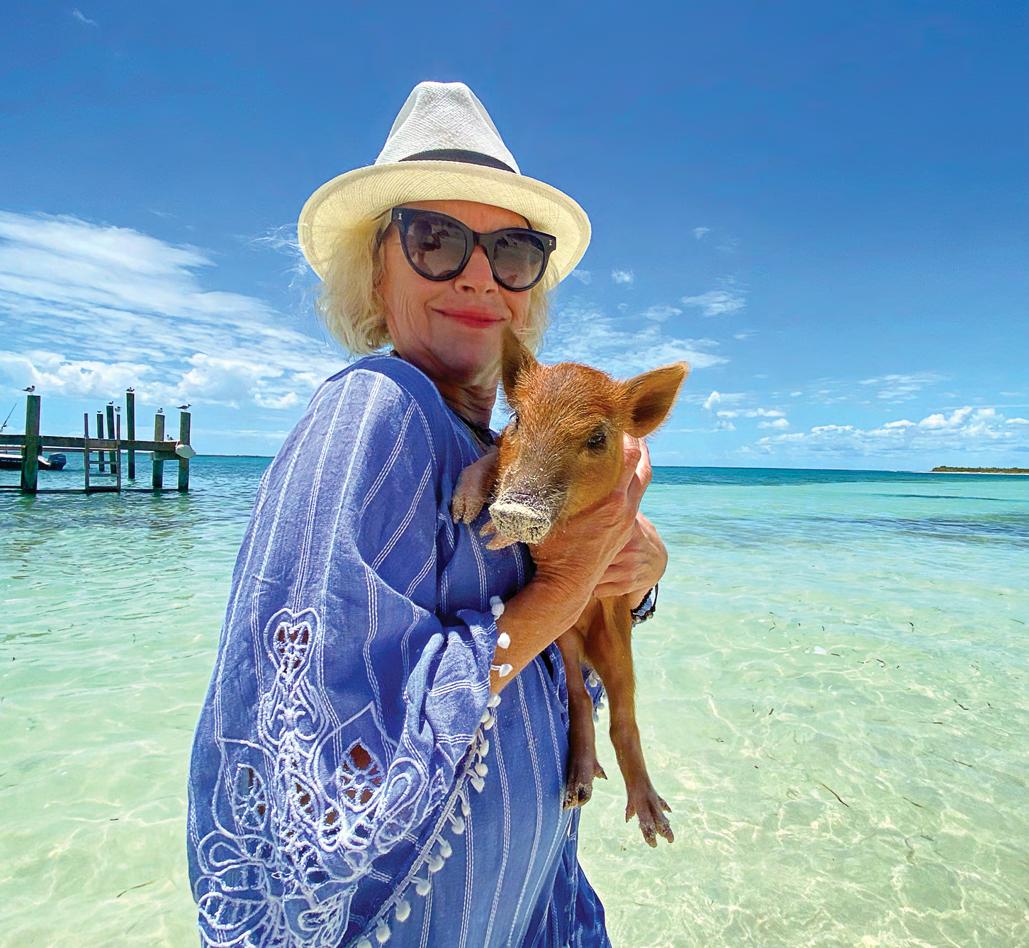
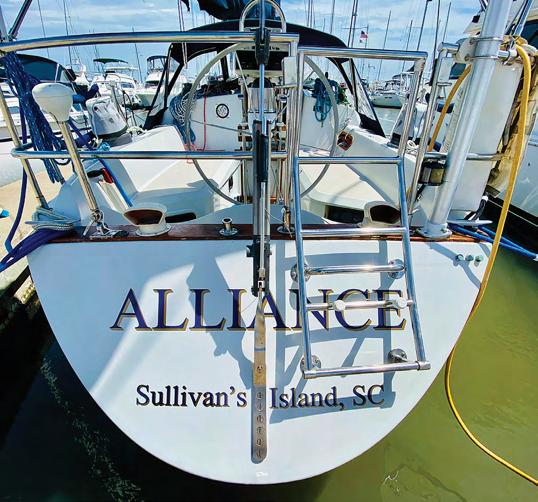
“Stick your finger in the water and lick it. If it is salty, theresharks.”are
Mark Stetler
Ericson 380 that Mark calls “a classic cruiser,” in 2012. After he and Caroline decided to relocate to their current home on Sullivan’s Island, he sailed the boat – on his own – down the East Coast to the Lowcountry. Along the way, he had to hunker down for five days in Bellhaven, North Carolina, to avoid the wrath of Hurricane Sandy.
to mess with bigger boats,” he comments. And there also are times that you don’t want to mess with the wind. Mark points out that their scheduled cruise two days ago had to be canceled due to heavy winds. “Give a sailor 40 knots of wind, and he’ll be miserable. Give him 0 knots and he’ll be suicidal,” he says, pointing out that 20 knots would be uncomfortable and 25 “is about the limit.” Today, he says, the wind is blowing at around 15 knots, roughly equivalent to 17.3 miles per hour.
One of Mark’s six passengers asks if there are sharks nearby, and the captain responds: “Stick your finger in the water and lick it. If it is salty, there are sharks.” We don’t see any maneaters, but we do spot a few dolphins hanging out near a party boat. Mark maneuvers Alliance a little closer, and Caroline takes a look to make sure the partyers aren’t feeding them, which is both illegal and possibly harmful to the aquatic mammals. Satisfied that all is well, Mark continues the three-hour harbor excursion, deftly avoiding a cruise ship leaving the port of Charleston. “You definitely don’t want SiP
Eventually, the sun disappears and the temperature drops, but we’ve seen Charleston Harbor and many of its landmarks from the water, including the USS Yorktown, the South Carolina Aquarium, Fort Sumter, and the Ravenel Bridge. And we’ve had a brief but revealing glimpse into what makes Mark Stetler — Navy veteran, photographer, skydiver, and now sailor — tick. “The idea that you can sail around the world on wind power is incredible,” he says. “I love the intricacy of sailing and the skills involved, as well as the beauty of a monohull and the lines of the sails. Sailing is an art.”
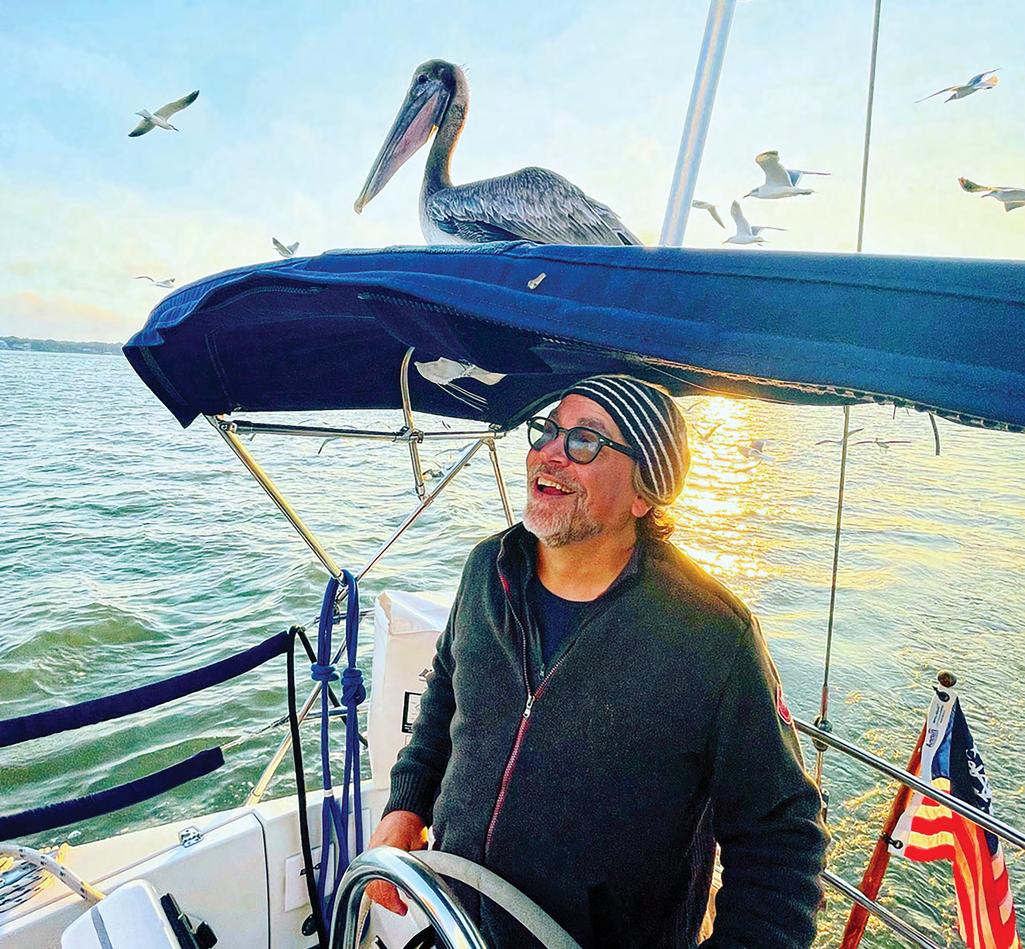
To book a tour, head to alliancesailingcharter.wordpress.com
 Former CIA agent and Isle of Palms resident Brittany Butler tells Laura Anderson how a Southern belle from Georgia found herself in the war zones of Afghanistan and Iraq.
Photos by C aroline KnoPf
Former CIA agent and Isle of Palms resident Brittany Butler tells Laura Anderson how a Southern belle from Georgia found herself in the war zones of Afghanistan and Iraq.
Photos by C aroline KnoPf
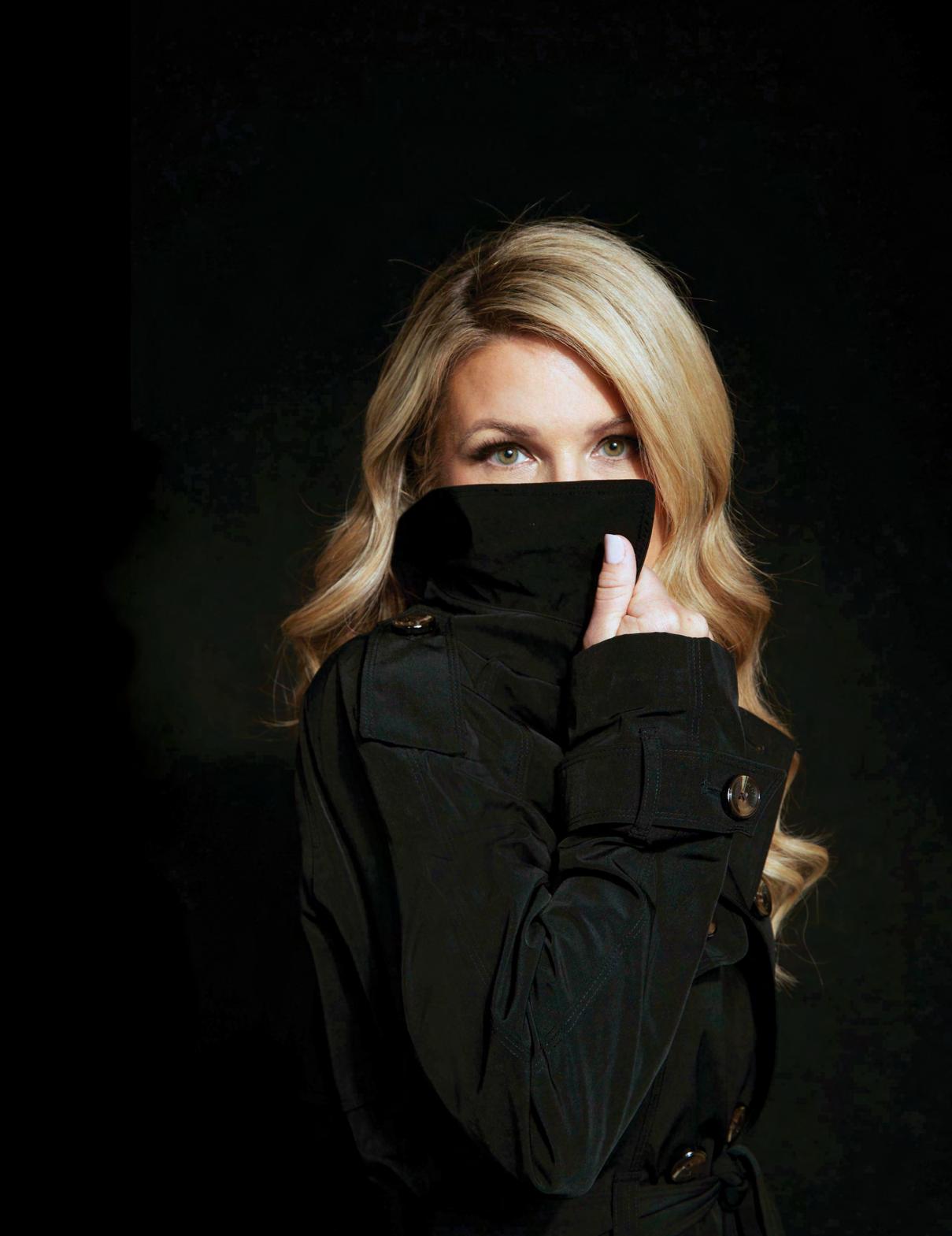
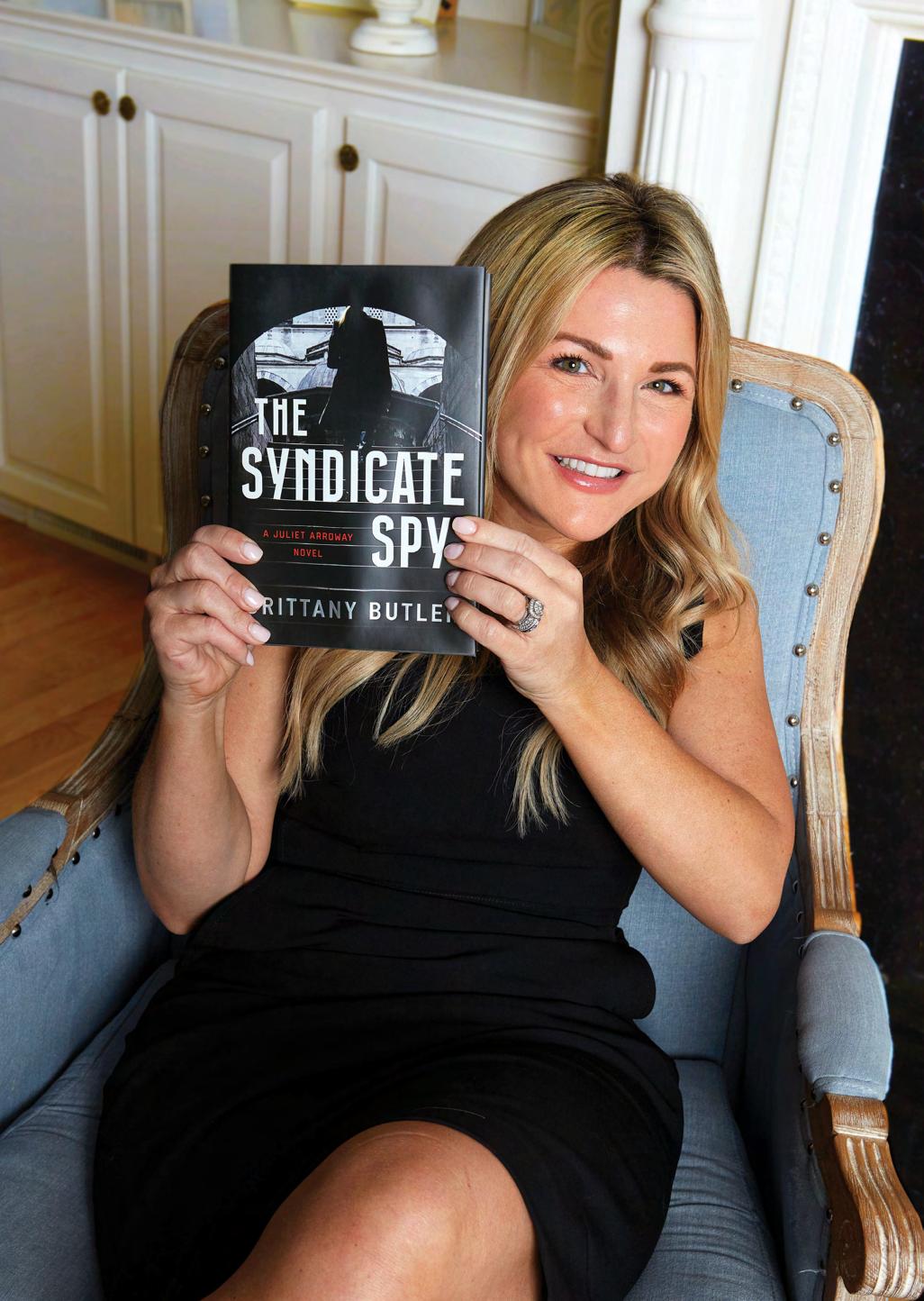
n a cloudless, unseasonably warm morning in February, Brittany Butler, former CIA spy and newly published author of The Syndicate Spy, welcomes me into her Isle of Palms home. The house is richly accented with flowers, plants, and coastal decor. It’s as lively and cheerful as the blonde-haired, green-eyed girl greeting me in the doorway.
Brittany is not what many might expect when they think “CIA agent.” Female spies are something we see in movies but don’t hear much of in real life. So I was interested to find out if Brittany’s real-life experience was anything like those painted in Hollywood movies.
We pass through her living room and out onto a wooden deck that overlooks a serene pond. An impressive labyrinth of greenery surrounds us as plants and oak trees hug the house. In this picturesque setting, Brittany’s green paisley dress puddles around her tiny frame, and she takes a deep breath before answering the question, “So who exactly is Brittany Butler?”
A Georgia native, Brittany grew up in the South with her parents, younger sister, Bridget, and younger brother, Joe. Her roots stretched farther South when she moved to Tallahassee in 2001 to attend Florida State University. There she studied international affairs with an emphasis on French and Middle Eastern studies. “I was always fascinated by the Arab world, the Muslim religion in particular,” Brittany says. “I wanted to learn and understand more about their world because it was so different from how I grew up.”
While in college, Brittany accepted an
internship with the U.S. State Department at the American Embassy in Paris. “I had an unbelievable experience because I was able to work in the passport office where we were America’s first line of defense to ensure terrorists were not permitted into the country. Part of my role was conducting research on people applying for visas and passports to get into the United States,” she says.
It was her knowledge of Arabic naming conventions that helped her succeed. She understood kunyas, a respectful title or name given to an Arab mother or father after
With international experience and impressive foreign language knowledge, Brittany’s arsenal of skills proved attractive to the CIA. She had her initial phone interview with the agency, followed by her first in-person meeting: “He walked in and began speaking to me in French about the Gaza Strip and the Arab-Israeli conflict,” she recalls. “Initially, I was recruited to be a CIA case officer, charged with spotting, assessing, and handling the CIA’s assets that spy on terrorist organizations and foreign governments.”
All the while, she was still a senior in college, regularly attending classes and enjoying her involvement in her sorority, Kappa Alpha Theta. “When I got further along in the recruitment process, I started completing my psychological evaluations, polygraph tests, and medical testing,” she says. At the same time, the CIA was interviewing her sorority sisters, closest friends, and family as part of the agency’s extensive background investigation.
one of their children. Brittany’s experience at the U.S. Embassy provided her with an opportunity to serve her country in an even more important role. “A foreign service officer working at the embassy encouraged me to apply to the CIA,” she says. It had never occurred to the now 39-year-old mother of three, but it intrigued her enough to apply that same evening. Brittany shrugs and says, “I sort of figured – what do I have to lose?”
Brittany passed the test and, following graduation in 2005, found herself in Washington, D.C. She was interested in operational work but quickly realized that the appropriate role for her at the CIA would be as a targeting officer. “I wanted a family and to eventually meet someone and fall in love,” she says. “I was a good ol’ Southern girl. I wanted babies!” She became a targeting officer, supporting CIA stations abroad by identifying a source with access to information they needed to accomplish their foreign intelligence or counter-terrorism objectives.
In her new role, Brittany flew to the Middle East frequently, often to help case
THE FARM: Camp Peary is known as “The Farm,” a training facility run by the Central Intelligence Agency for the purpose of training the CIA’s clandestine officers, as well as officers of other organizations specializing in clandestine activities, such as the Defense Intelligence Agency.
“I was always fascinated by the Arab world, the Muslim religion in particular.”
B rittany B utler
officers better understand the source’s access to terrorist organizations and motivations for working with the United States. Her next task involved operationalizing that information. “I did a lot of targeting in the war zones in Afghanistan, Pakistan, and Iraq. That often meant that I was sending out operational leads to our special forces’ counterparts or to our drone programs to act on high-value targets like al-Qaeda and ISIS,” Brittany says. She whips out and inspects a gold coin the size of a quarter. It has a blood-red “X” over Osama bin Laden’s headshot with words that read: “For God and Country Geronimo,” and the date of his death below, “1 May 2011.” “All CIA officers who were in the CIA Counterterrorism Center’s Pakistan-Afghanistan division during the Osama bin Laden raid received this coin to commemorate his death,” she says.
There have been plenty of moments throughout her career where her life was in danger. On one Middle East deployment, she participated in a “high-threat meeting” with a terrorist. This meant the team didn’t know with certainty whether the terrorist they were meeting would enter the room with a bomb strapped to his chest. “I was scared,” she says. “I helped to identify him as a potential CIA source and understood his access and the motivation for the meeting, and we worked with a foreign liaison to pat him down prior,
The risks involved with her job have always hung over her, but one specific incident really shook her. “I realized I could die doing this,” she recalls. The Camp Chapman attack in Afghanistan in 2009 was the most lethal suicide bombing in CIA history. Seven American CIA officers were killed; Brittany knew two of them personally. “I knew the work I was doing was dangerous, and I knew what I was doing was extremely sensitive, but I sort of became desensitized to the danger,” she says. “But when that happened, it really shook me.”
The realization grew stronger for Brittany after giving birth to her first child in 2011. “I knew that I wanted to raise my babies; I didn’t want anyone else to raise them,” she says. Her head hangs slightly as she recalls Jennifer Lynne Matthews, the chief of base, who died at Camp Chapman. “She had three children. She died, and her kids were quite young, and I couldn’t help but put myself in her shoes.”
She left the CIA three years later following the birth of her second son.
Less than 18% of the CIA is female. Brittany attributes this to the many women
who leave to prioritize their families. “Working counterterrorism operations is a very high-intensity and demanding job. The days are grueling, and you get burnt out. It doesn’t lend to a good work-life balance,” she says. “There aren’t as many women as possible in leadership roles because they leave early on to have children.”
Brittany met her husband, Matt, a lobbyist, while working at the CIA Headquarters in Langley, Virginia. The pair got engaged in 2009 and married in January 2010. “Matt’s from Charleston and grew up in The Old Village, right down the street from the Pitt Street Pharmacy.” The couple lived and worked in Washington, D.C., for 15 years before deciding to relocate to Charleston. The move was an easy decision for the family. Escaping the hustle and bustle of a big city was important, but they were excited to be near the ocean and Matt’s family. “Every time I’d visit Charleston, I just felt like my heart rate slowed down. I felt at peace,” Brittany says, smiling up at the sunshine peeking through the branches of the oak tree above us.
In 2020, Brittany and Matt welcomed their third son. Today, an accomplished mother of three boys, every time she and Matt enjoy a date night on the Isle of Palms Front Beach, she knows they made the right move. “We love sitting at the bar at Coda del Pesce and eating the amazing pasta or drinking margaritas at Papi’s,” Brittany says. The relaxed summer pace that island life naturally adopts has left
KUNYA: In the Arabic culture, a kunya is expressed using abū (father) or umm (mother) in a genitive construction. For example: “father of” or “mother of” as an honorific in place of or alongside given names.

“I realized I could die doing this.”
B rittany B utlerAll officers in the CIA Counterterrorism Center’s Pakistan Afghanistan division during the Osama bin Laden raid in 2011 received this coin to commemorate his death.
her family enjoying every second on Isle of Palms. “We love living on the Isle of Palms because it’s so tranquil and safe. Our kids can ride their bikes without me worrying,” Brittany says.
The shift from the fast-paced, adrenalinepumping atmosphere wasn’t all easy. For a while, Brittany struggled to figure out who she wanted to be after her life as a spy, but volunteering helped craft her new identity. “It’s the work I am able to do from a distance,” she says. She witnessed so many injustices against Arab women while she worked in the Middle East, and she wanted to help. Fundraising for Women for Afghan Women in D.C. and helping Afghan refugees in the United States through Lutheran Services in America was satisfying. But she was still thirsty for greater intellectual stimulation. “I studied for such a long time and learned about so many unique ways of life. … I needed a way to apply that in some way,” she says. Writing became that outlet.

She reaches for a copy of The Syndicate Spy, published this March. A work of fiction, it combines fascinating facts with heart-stopping fiction, telling the story, as only Brittany can, of how female intelligence officers use their intellect and skills to see beyond religious and cultural barriers and work to bring peace to a war-torn region.
Brittany, a true Southern belle with long, tousled, blonde locks and a captivating smile, says her enemies often downplayed her intellect and skill due to her appearance.
She used this to her advantage. “The enemy wouldn’t really see me coming. They’d just think, ‘Oh, a pretty blonde; she probably doesn’t know anything,’ when in reality, I knew a lot,” she says.
The Syndicate Spy draws from her experiences operating in a foreign environment where women are not treated as equals. The heroine, Juliet, experiences much of what Brittany encountered firsthand. “I wrote about the fear I felt entering these places that were very different from where I was from. I didn’t understand their culture, I didn’t look like them, and I think the reader will get a real sense of what that’s like,” she says. “Not to mention an insider view of what it’s like to be in the CIA.”
Brittany always knew she’d write this story, and she views it as a way to advocate for the rights of women in the Middle East: “Once you read my book, you will understand what I mean.”
The Syndicate Spy published by Greenleaf Book Group is available now at Barnes & Noble and Amazon.com.
THE AFGHAN EXODUS: The term for the mass exodus of Afghans – already tens of thousands, with hundreds of thousands more desperate to leave – and marks the protest of a nation against an ideology that refuses to recognize human rights.
THE SYNDICATE SPY 2: Brittany’s second book will focus on what it would look like for a woman to be in power in the Middle East and the challenges she would face.
“We love sitting at the bar at Coda Del Pesce and eating the amazing pasta or drinking margaritas at Papi’s.”
B rittany B utlerBrittany Butler at Baghdad International Airport in 2008, holding an M4 rifle. Her work here supported counterterrorism operations.
Catch a glimpse of locals following their dreams and passions into the stratosphere.
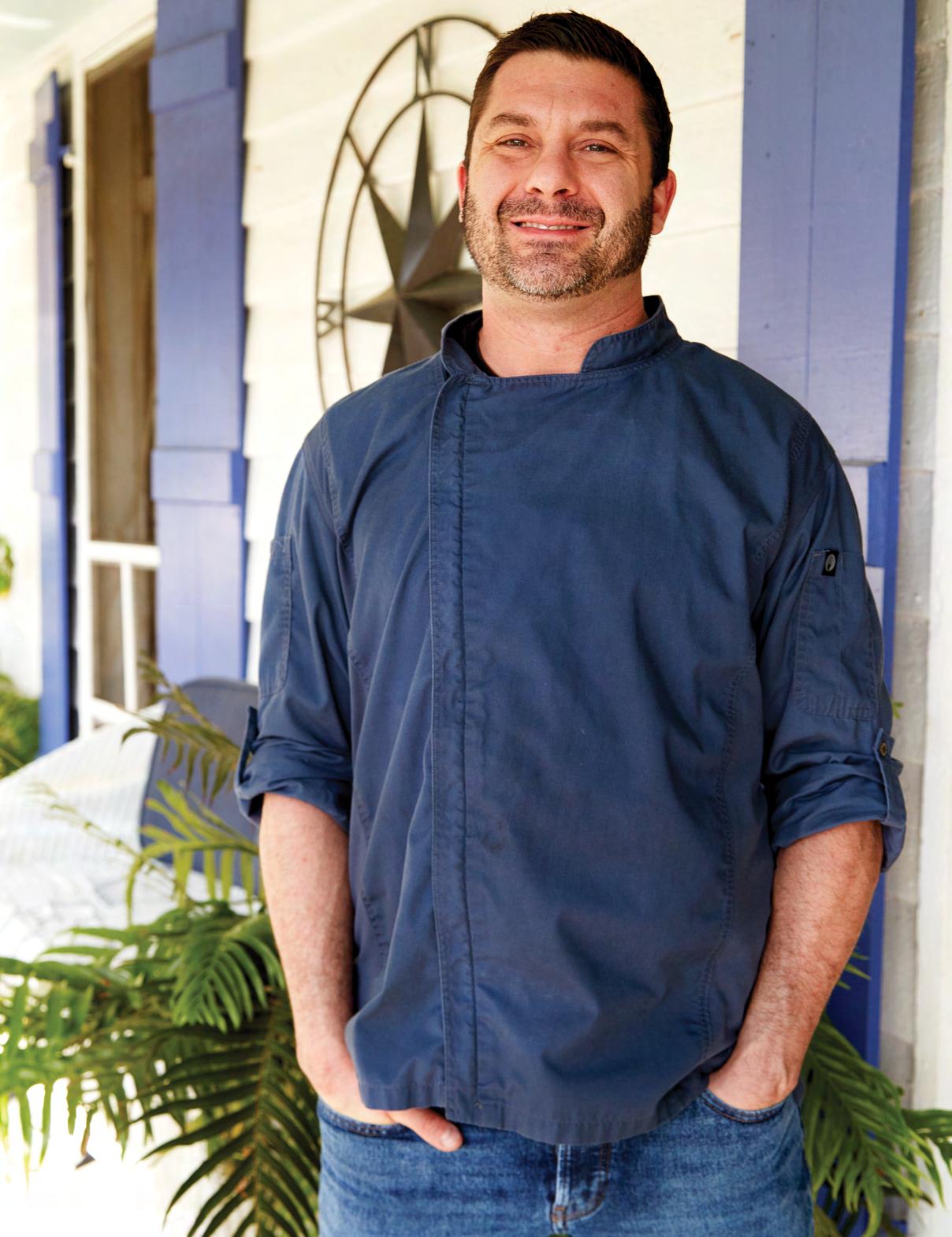 Photos by Caroline Knopf.
Photos by Caroline Knopf.
Indigenius Cuisine executive chef and entrepreneur Roland Feldman had already established a food truck and two restaurants by the time he began working with Indigenius in 2019. The Isle of Palms-based personal chef and catering service prepares personalized meals for vacationers and locals inside their homes, bringing the fine dining experience to you. Indigenius handles everything from setup and cooking to serving and cleaning. “We like to keep it hands-on. We’re really out there cooking on-site,” says Feldman. “We don’t just show up there with a bunch of stuff kind of wrapped up and just put it on a plate.”
An Indigenius dinner event typically begins with a cocktail hour and reception, followed by an elegantly presented sit-down meal. “We guide them through a multicourse dinner experience,” says Feldman. Southern staples from oyster roasts to shrimp ‘n grits are common customer requests. Sustainability is central to their approach, whether it’s using all-natural grass-fed beef or local seafood and produce. “We are all about locally-sourced, sustainable, and ethical products,” he says. What really elevates their dishes, he says, is that they grow many of their own fresh herbs, such as dill, rosemary, and basil..
Feldman loves working on Isle of Palms and Sullivan’s Island, acknowledging that it’s the beaches that keep him anchored in Charleston: the refreshing sea breezes and the absence of gnats. Since he usually arrives at each event around 5 p.m. and serves dinner at 7:30 p.m., he sees gorgeous sunsets over the water nearly every time. “My view for work is the ocean,” he says.
Indigenius (a play on indigenous cuisine) was started in 2014 by Boston native and Culinary Institute of Charleston alum Arlette O’Rourke. Feldman joined in 2019 and, a couple of years ago, took over running the business along with fellow entrepreneur and chef Lee Anderson.
Feldman, who was raised along the Stono River near Hollywood, developed an affinity for Lowcountry cuisine in his formative years. “I grew up just really immersed in everything Charleston, everything having to do with the beach and the water,” he says. Family friends
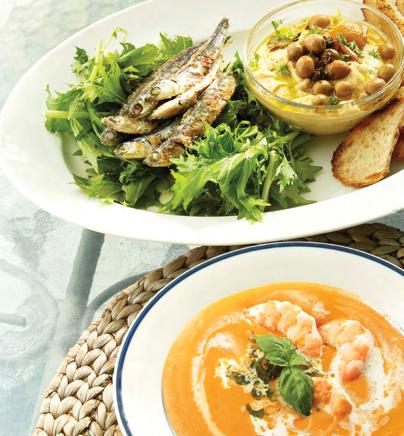
owned restaurants in Charleston and Feldman was part of the culinary scene early on, washing dishes on weekends as a teen to earn a few bucks.
He worked at the Sticky Fingers on Meeting Street when he was 17 and discovered that his mind was well-suited to the frenetic pace of a restaurant kitchen. “I can’t sit still at a desk if you paid me, but I can rock a sauté station — keep my eyes on a hundred things at once,” says Feldman. From there, he went to Magnolias on East Bay Street, which was his introduction to fine dining. “That showed me that there was a pathway career-wise for me to do this because it’s a little more art-driven,” he says.
Feldman attended Johnson & Wales University in Denver, where he studied under James Beard-award-winning chefs, including Jennifer Jasinski, a protégé of Wolfgang Puck. Here he was thrust into the high-volume fine dining scene. Returning to Charleston, he worked a stint as sauté chef at Peninsula Grill on Market Street, where “I refortified my love of the Southern food scene,” he says.
His next venture involved a food truck and Smoke BBQ, which quickly gained traction, moving to brick-and-mortar on King Street in 2015. The restaurant was on Food Network’s Beach Bites and in The Washington Post .
Smoke BBQ closed right before COVID hit. With a young family now, he began working with O’Rourke. A gig in Hawaii, cooking for the cast and crew of the shows Love Island and Temptation Island , introduced him to Anderson, a Charleston native and owner of Sugar Beach Events in Maui. When Anderson moved back to the Holy City, the opportunity arose for the pair to take over Indigenius.
Indigenius has hosted dinners for football and movie stars, as well as a gig on the set of the locally-filmed HBO series The Righteous Gemstones. However, it’s the area’s steady stream of tourism and beach house rentals that drive their business. “Our bread and butter is small, elevated dinner parties on the islands,” says Feldman. They also love to cook for locals, serving at various parties and celebrations.
Regardless of who he is cooking for, one thing remains constant: His work environment is hard to beat: “Everything just flows better on the islands."
— Colin McCandlessI can’t sit still at a desk if you paid me, but I can rock a sauté station.
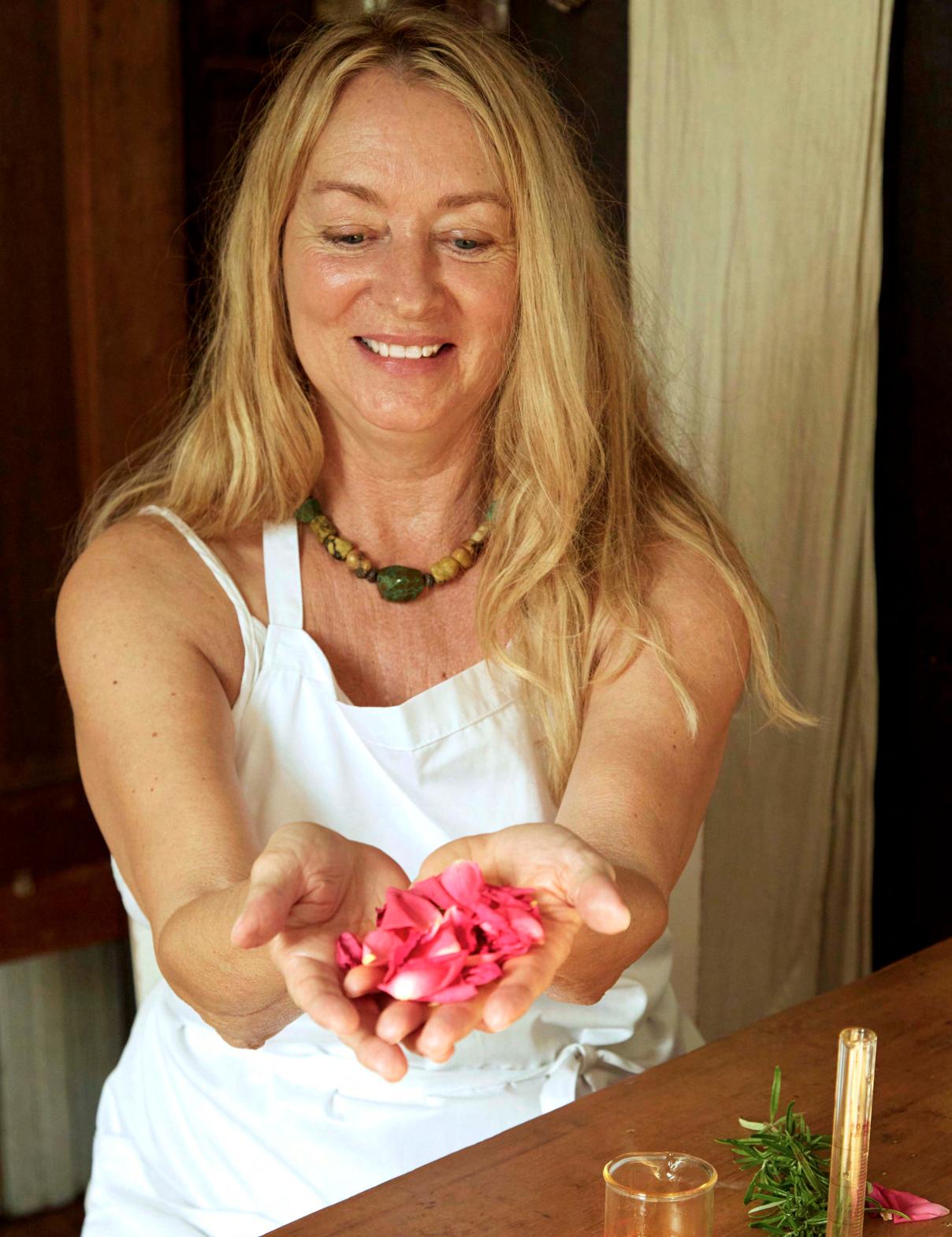
Free of pesticides, synthetics, and chemicals, JANE’s skin care products and perfumes are inspired by nature and old-world apothecaries. The Sullivan’s Islandbased line uses local plants such as jasmine, lavender, rosemary, resins, and roses whenever possible. Each serum, cleanser, facial mist, body balm, salve, and perfume is “small batch, hand-blended with love,” says owner and chief mixologist Stephaney ‘Jane’ Oberon.

When local herbs are not available, only the “highest quality oils” from small producers and cooperatives from around the world are used. Many of the exotic oils have been local secrets in far-flung corners of the world for centuries but have rarely been used in products in the United States. Oberon says the ingredients are pioneering in the skin care industry.
The pathway leading to Oberon’s Sullivan’s Island cottage is wild and unmanicured. Jasmine and wisteria climb freely along the screened porch that runs the length of the house. Her organic journey to this home, this island, and this career began in her hometown of Des Moines, Iowa, where she owned a fitness studio. At age 20, she was diagnosed with a degenerative disc disease. Doctors handed her a sheet of exercises to help make her body stronger. They told her she might be in a wheelchair by age 30. “No way,” said Oberon.
She began getting regular chiropractic treatments and doing strength training, which she parlayed into her own low-impact aerobics studio. While taking continuing education credits as a fitness instructor in New Orleans, a serendipitous flyer on the ground got her attention. It was an advertisement for training for a nonimpact combination mind/body/ spirit fitness workout class called neuromuscular integrative action. After six years of training she became a Black Belt and was invited to become a trainer, the highest level of Nia training, and presented sessions around the world for 17 years.
Sullivan’s Island was always home in between her worldly travels, other than a brief stint in Manhattan. The yin of the sea drew her back to Sullivan’s Island. “The city has always seemed masculine to me, whereas the sea is more feminine,” mused Oberon, in her multipurpose room that is a living room/dance studio/apothecary/art studio/laundry room.
Settled back into island life, indulging in quiet, starlit, nighttime bike rides and the magic that lies behind the picket fences that she missed while in New York City, she refocused her creative curative energies on using natural herbs to help people with skin issues. “While my friends and I were reading Nancy Drew, I was also reading books about herbal remedies,” she said. “Aromatic applications were always fascinating to me.” As a teenager, she suffered from painful acne and unbalanced skin. The antibiotics prescribed for her did nothing to help.
Though partially self-trained in herbal applications, she also took workshops in Asheville at the Aromatic Institute. Around that time, Oberon’s sister, Shawna Robinson, who was among the first female NASCAR drivers, was diagnosed with breast cancer, and the chemotherapy wreaked havoc on her skin. She wanted to find a way to help them both. And so the JANE skin care line was created in 2015. She still conducts monthly Nia dance classes in her studio at the Academy of Dance Arts in Mount Pleasant and by Zoom and lives within a body that is pain-free in spite of her doctor’s original dire warning.
When she’s not sharing knowledge from her journey of self-healing, Oberon can usually be found creating something in her studio, with the sweet-smelling myrtle grove at the back door softly diffusing the sounds of the ocean. Last year, she performed in Ode to the Sea at the Battery Gadsen Cultural Center, a tribute to the sea and the beloved Chilean poet Pablo Neruda.
Oberon has been a part of the community since 1997, keeping a diary through the years that she plans to turn into a book. “I swore if they ever closed Bert’s Bar [closed in 2009] I would leave here. It was, in its own way, the heartbeat of the island. But it closed, and I stayed,” she says. “Then I swore if they ever closed Atlanticville [closed in 2015], I would leave. It was like dining inside a perfume bottle. But it, too, closed, and I stayed.”
“I think that if I were anywhere else, I would just be wondering if the wisteria was blooming on Sullivan’s.
“
I think that if I were anywhere else, I would just be wondering if the wisteria was blooming on Sullivan’s.— Marci Shore
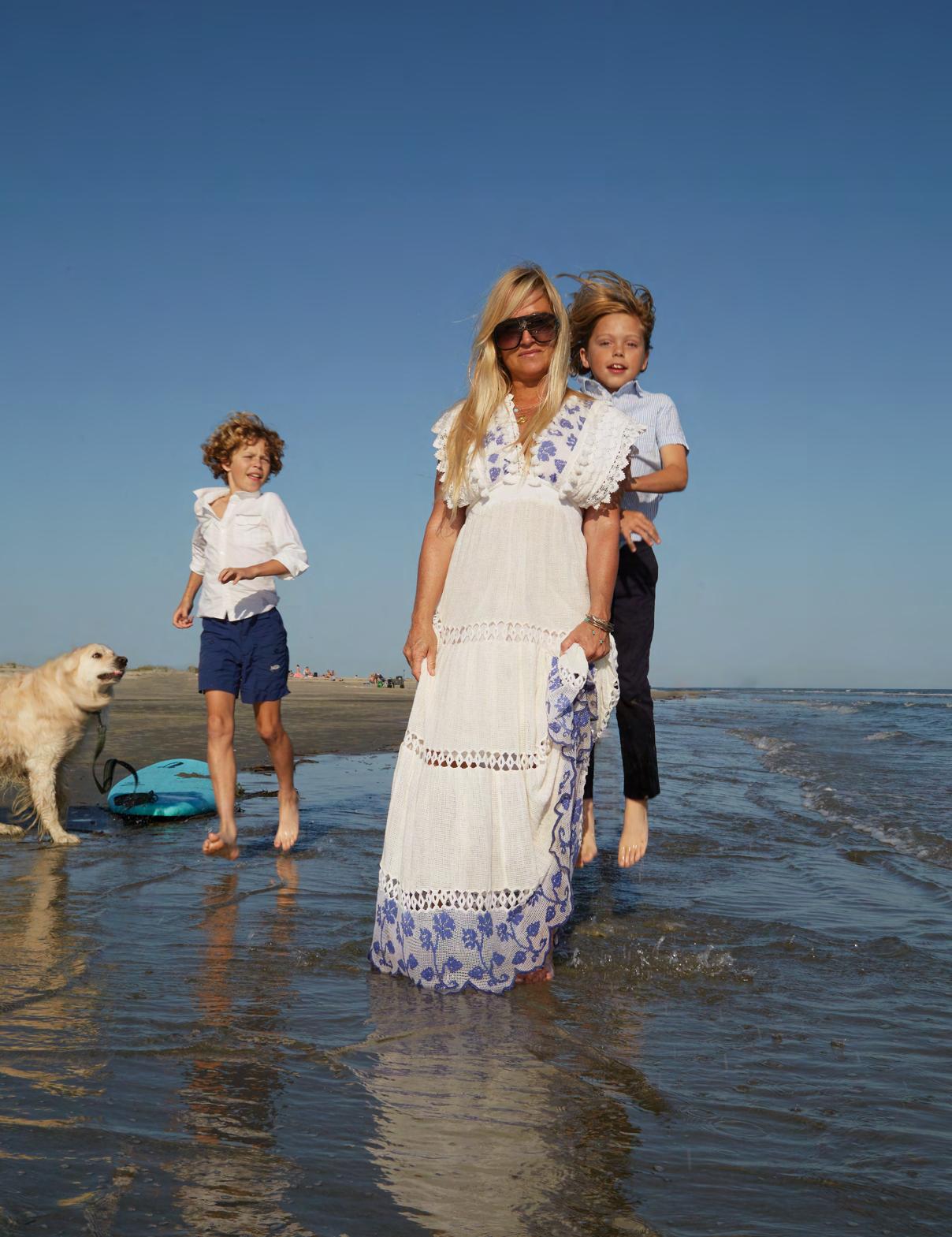
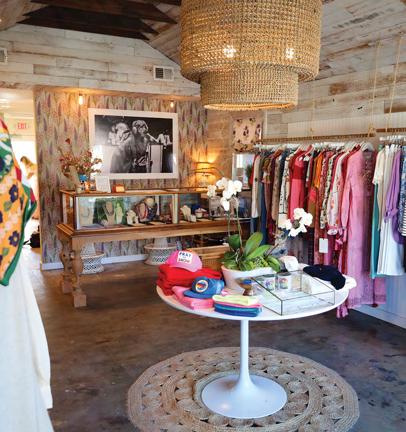
For Bennie + Coco owner Katie Poole, the decision to relocate from downtown Charleston to Sullivan’s Island in August 2020 was a no-brainer. A space previously occupied by Home Team BBQ’s Middle Street Market opened up at Station 22 along the busy tourist hub of Middle Street, and it seemed like the perfect fit for her business' '70s surf-inspired style. She swapped her shoes for sand between her toes and moved to the beach with which she is so enamored.
Poole’s motivation for owning her own boutique dates back to her college days when she was a fashion major at the University of Alabama. At the time, she lived on Sullivan’s Island during the summers to be near the water. She had aspirations of becoming a buyer for a luxury store such as Bloomingdale’s, but the profession requires a lot of math skills, an area in which she acknowledges she was wanting.
After graduating, Poole worked in magazine advertising and promotions, including at Vogue, before launching her own events company, The Burlap Elephant. Poole operated out of a space on Queen Street in downtown Charleston that was zoned for retail. In May 2018, she decided to start selling some items in a corner of the building, a venture she dubbed Bennie + Coco. Then the epiphany came. “I realized I much preferred retail,” says Poole.
By early 2020, she had moved full-time into retail — although, like many other businesses, had to close for a period during COVID. She acquired the modest storefront at 2213 Middle St. later that year. “I always wanted this spot as a cute little stand-alone store,” says Poole. “Clothes and fashion have always been my thing.”
The location and atmosphere melded well with the company’s aesthetic. A selfproclaimed “Deadhead,” Poole loves to incorporate chill music to augment the relaxed feel of her shop. She regards Bennie + Coco as a mix of music and lifestyle.
Poole’s clothes exude a casual beach vibe,
with mellow tunes playing in the background to complement the easy-going shopping experience. Since relocating to Sullivan’s Island, she has jettisoned all ties to shoes and embraced a mostly barefoot existence befitting a beach town setting.
The name Bennie + Coco pays tribute to her grandmothers, a reference to their maiden names, Benson and Collier. Her boutique offers dresses, T-shirts, swimwear, jewelry, and accessories from a variety of popular and emerging brands. One of her best sellers is Aviator Nation apparel, which includes sweatpants. “Aviator Nation is huge,” she says. On the casual side are a selection of tops and bottoms, and there are some higher-end items from lines such as Alix of Bohemia. But laidback and comfortable is the prevailing fashion theme. “We’re at the beach,” says Poole, so the style is more casual. She says the biggest compliment she gets is when people tell her they wear her clothes all the time, no matter the occasion.
Poole has shuttled between living in Charleston and on Sullivan’s over the past few years. She wanted her children, Lily, 14, Parker, 12, and Wilde, 10, to go to Sullivan’s Island Elementary, where recess is on the beach and after school involves going to the park and spending time outside. “It’s a good quality of life,” she says.
Poole, who just opened a second Bennie + Coco location in Birmingham, Alabama, loves being a part of the Sullivan’s Island community. “I think the locals that are out here are awesome,” she says. She sees the same local people every day and enjoys building relationships. While there aren’t many shops on Sullivan’s, Poole has found it to be a supportive business community. The proximity to the beach and the ocean doesn’t hurt either. “I like being out by the water,” she says. “It’s a happy vibe. Everything is positive.”
— Colin McCandless“
Poole’s clothes exude a casual beach vibe, with mellow tunes playing in the background to complement the easy-going shopping experience.Photo by Laura Anderson
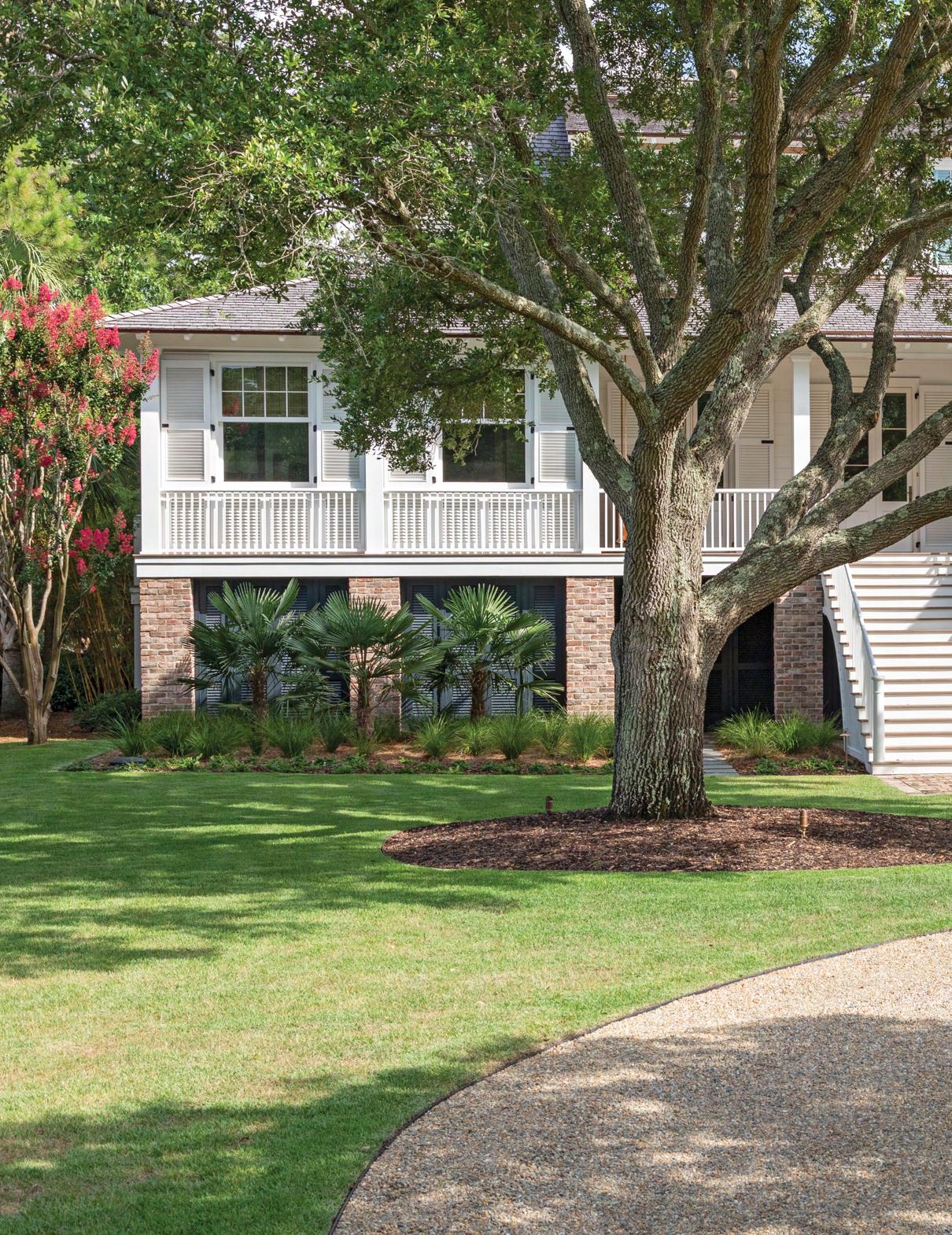
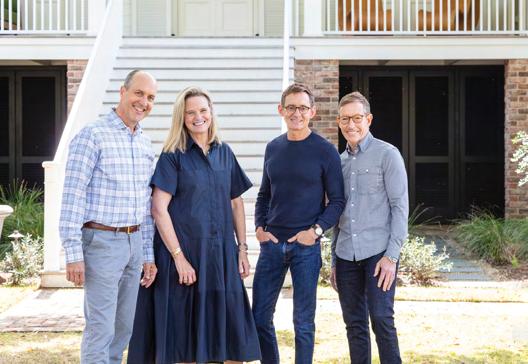
A thoughtful renovation helps a 1970s Atlantic Avenue beach house capture the quintessential charm of a classic Sullivan’s Island cottage.
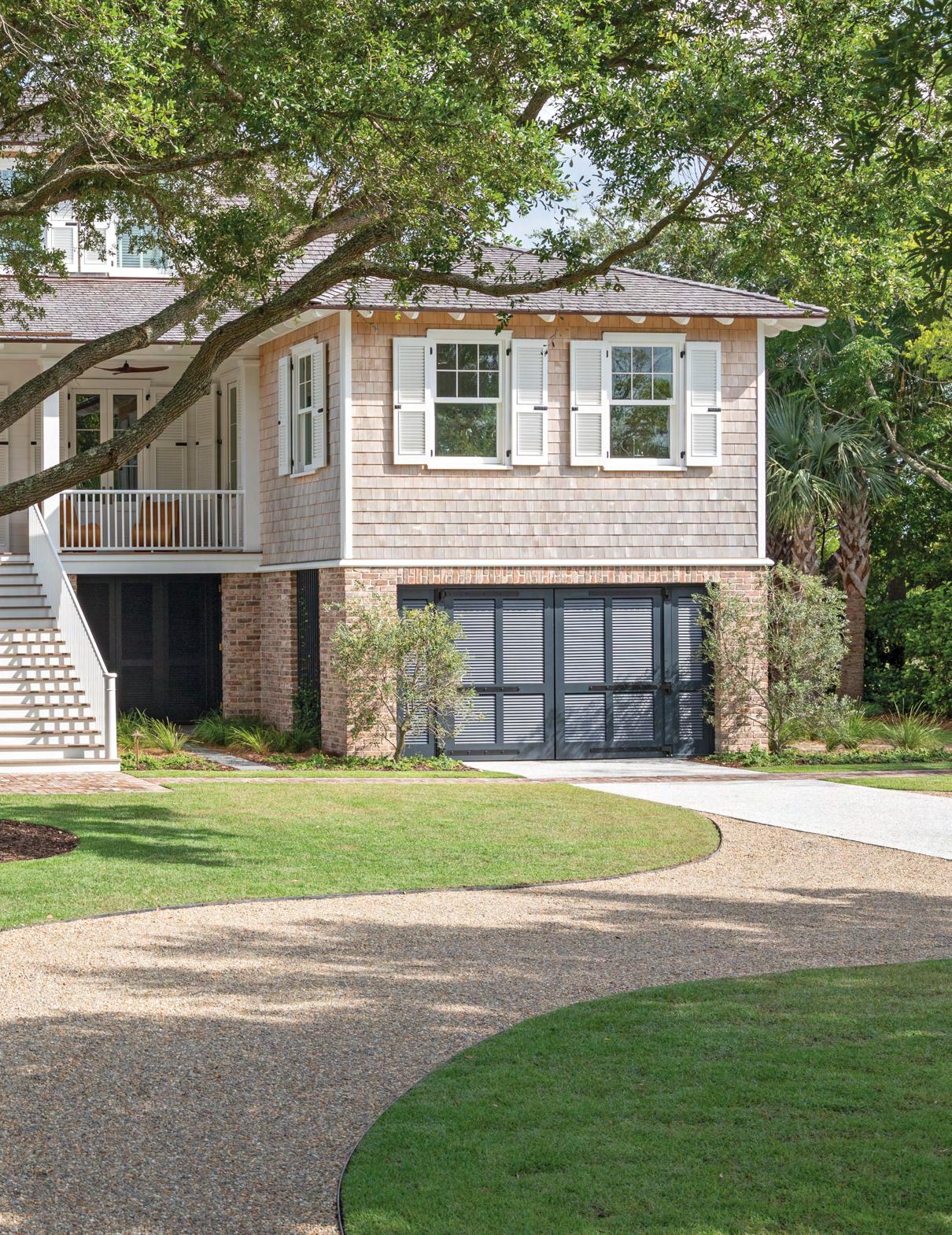 By Jennifer Pattison Tuohy.
Photos by Julia Lynn
By Jennifer Pattison Tuohy.
Photos by Julia Lynn
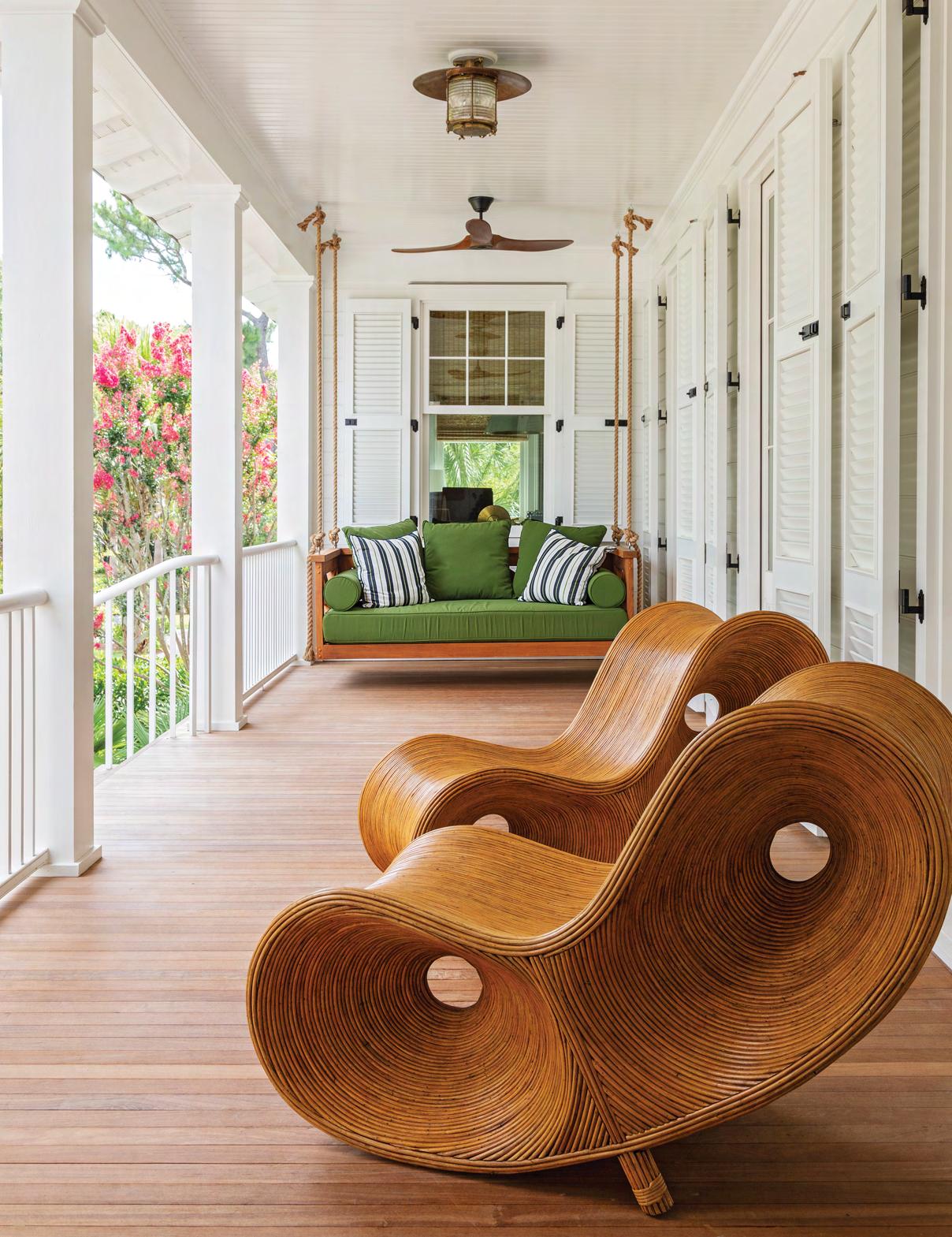 Part of the renovation included re-introducing the classic Lowcountry front porch to the home. Designer Melissa Ervine added a touch of modern with these shapely rattan infinity loungers from Fritz Porter in Charleston.
Part of the renovation included re-introducing the classic Lowcountry front porch to the home. Designer Melissa Ervine added a touch of modern with these shapely rattan infinity loungers from Fritz Porter in Charleston.
This charming Sullivan’s Island cottage has a secret to share. Nestled ocean side along Atlantic Avenue, its white cedar shingles, pecky cypress paneling, and 100-year-old heart of pine floors hark back to “old school Sullivan’s.” However, the house at 2407 Atlantic has not experienced generations of barefoot kids running through its hallways. It’s not even made the half-a-century mark. Constructed in 1974, when this strip of the beachfront road was first developed, the house speaks to a simpler time — one of beach shacks characterized by peeling paint, battered porches, slamming screen doors, and sea breezes serving as air conditioning.
A recent careful and considered renovation overseen by owners Stephen and Alisoun Brewster stripped the ‘70s beach babe down to her bones and rebuilt her stronger and more beautiful than before. Today, the patinaed look and classic style cleverly disguise the fact that this home is, for all intents and purposes, thoroughly modern.
Initially built by the Crawford family, 30 years and one Hurricane Hugo later, it was sold to Sam and Hazel Boyd, who kept it
until 2016. It was then, as so many of its like, bought, renovated, and put back on the market before the Brewsters finally claimed it. “We fell in love with the home the first moment we stepped inside,” says Alisoun. So began an almost three-year renovation that transformed the house from a sprawling contemporary beach home to a charming yet timeless seaside cottage.
Begin again?
This renovation story isn’t unique, but its outcome is one anyone building or remodeling a home on the islands should take note of. An old Sullivan’s Island house fixed up and added to many times over the years presents a dilemma to new owners. Do you tear down the (nonhistoric) home and build fresh, or do you work with what you have? The latter turned out to be the path of least resistance for the Brewsters, who were drawn to the idea of working within the existing footprint to create something timeless that felt like it had always been there — like it belonged.
The couple’s first home in Charleston was on Kiawah, which Alisoun discovered when
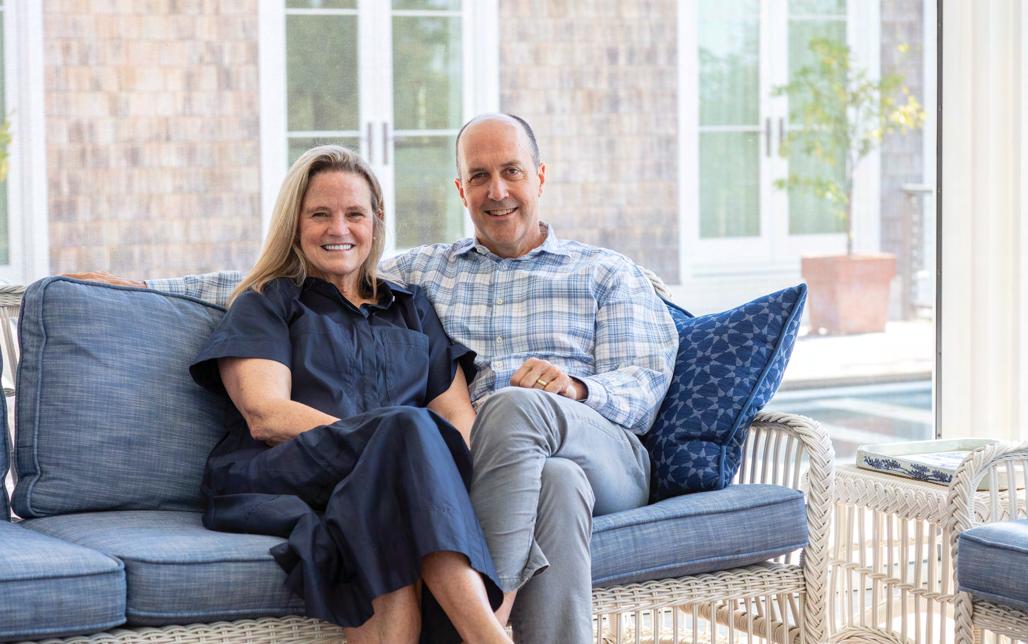
“ The vision was to take a house that had a bunch of interesting architectural elements and a quirky series of additions and turn it into a cohesive home.
–Stephen BrewsterAlisoun and Stephen Brewster hail from Chicago but now call Sullivan’s Island home.
she played tennis at the barrier island resort. Returning home to Chicago, she told Stephen they had to buy a house on that idyllic island to escape the frigid Illinois winters.
Originally from Detroit (her) and Cincinnati (him), they had lived in the Windy City since the ‘80s, raising their three children there. But warmer climes beckoned. After a few years of vacationing on Kiawah, they decided to make the Charleston area home but wanted to move closer to downtown. They bought a house at 2608 Atlantic Avenue in 2016 as a vacation home, with a view to becoming permanent. “We just fell in love with Sullivan’s,” says Alisoun. “It was time to plant some roots.”
At that time, 2407 Atlantic was also for sale. While they missed the opportunity, they had a decision to make when it came back on the market less than a year later. “Whether to buy 2407 and do a modest renovation,” recalls Stephen. “Or tear down 2608 Atlantic and build something new.” The quirky ‘70s beach house won, and they embarked on what Stephen recalls was originally going to be “just some minor updates.”
The idea had been to rework the floor plan to incorporate at least five bedrooms for when their grown children and grandchildren visited but also to feel manageable for when they were home alone. But as with so many best-laid plans, things changed. After finding some issues with the structural integrity of the home and being inspired by the vision of architects John Young and Philip Dufford, of Duffor Young Architects, the Brewsters went all in on a full renovation. They finally moved into their “forever home” in March 2020.
“The objective was to keep the old classic understated beach look,” says builder Rus Sheppard of Sheppard Construction. To achieve that, the builder and architect worked to give the home a timeless feel. “You have to maintain a certain simplicity. It’s purity in the form that gives it a historic feel,” says Young. From small details such as modeling the handrails out front on those found on older island cottages to larger projects such as removing all the tongue-and-groove pecky cypress from
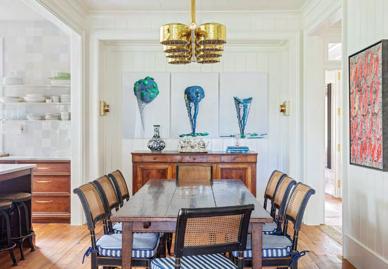
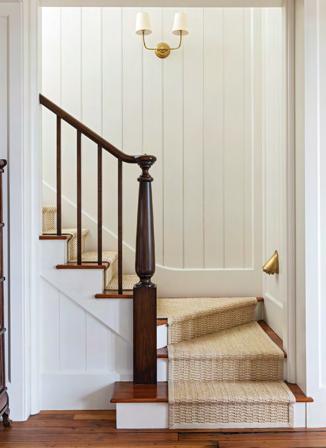

the house that had been painted white, and painstakingly restoring it to its original form. “Saving the antique heart pine floors in the house and restoring them was another exciting part of the project,” recalls Sheppard.
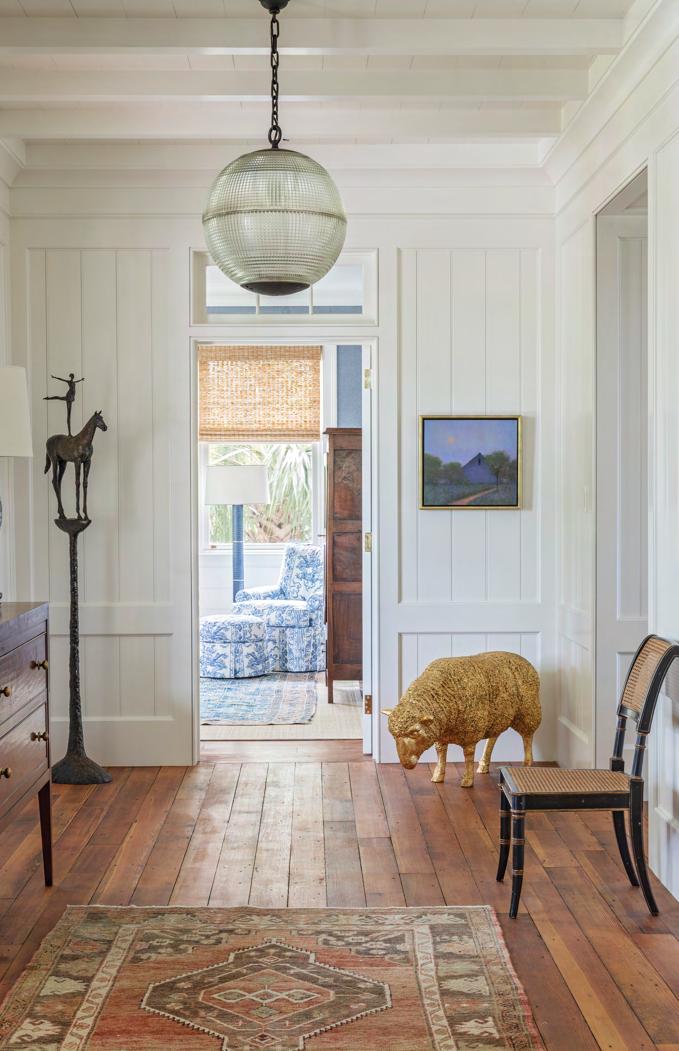
Over the years, the home had gained extra rooms where previously there were porches, giving it a wide, rambling feel. The additions had also extended the roof downward, resulting in an odd juxtaposition of soaring vaulted ceilings inside and a low, 7-foot roofline outside. During an early site visit, the architectural team hopped on top of the roof, where they had an “aha!” moment. They could solve the problem of the low roofline and the puzzle of squeezing in five bedrooms by going up.
“Fitting in five beds was the challenge, and, aesthetically, the roof profile was a challenge,” says Dufford. “When we went up on the roof, we realized that making the jump to create the second floor would get the space we needed and change the aesthetic of the house to be more closely proportioned to the historic island vernacular.” That decision turned out to be the key to the whole project, freeing the downstairs space from the burden of five bedrooms and allowing for a primary bedroom suite with views of the Maritime Forest, an office, a large laundry room, and a sitting room in addition to an open-plan living room, dining room, and kitchen.
The old porches were reinstated, and the new second story became a long hallway with four bedrooms and bathrooms. Here Sheppard put the reclaimed pecky cypress to use, paneling the walls with the classic beach house material and even making custom doors and built-in wardrobes with it. Stephen’s mother’s quilt collection and children’s picture books framed as art all lend to the summer campstyle feel of a century-old cottage. “It really feels like an old family beach house up there,” says Young.
With a second story, the new clipped gable roofline gives the once sprawling house more of a cottage feel, and extending the railing on the re-created front porch along the whole house adds to that “filled in” look common on older island homes where porches have
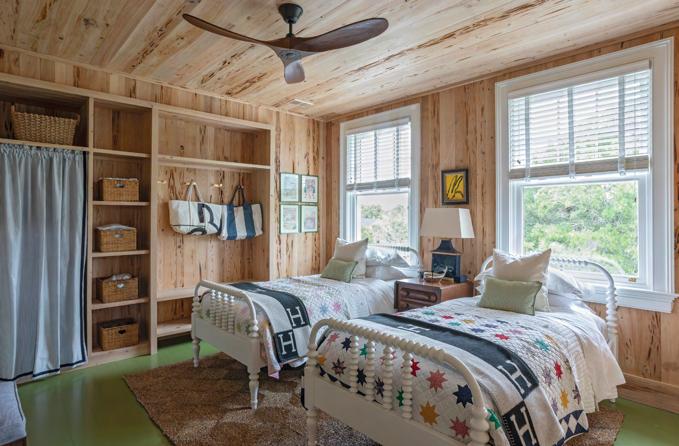 (Left) The entire second floor is paneled with pecky cypress, which builder Rus Sheppard reclaimed from the original home. The installation gives the space a summer camp feel. (Below) The home’s foyer, likely once a porch, has antique heart of pine floors, lending to the home’s historic feel.
(Left) The entire second floor is paneled with pecky cypress, which builder Rus Sheppard reclaimed from the original home. The installation gives the space a summer camp feel. (Below) The home’s foyer, likely once a porch, has antique heart of pine floors, lending to the home’s historic feel.
been filled in with rooms. Uniquely, all this renovation barely changed the square footage. “The volume of the new building is essentially the same as the old building,” says Dufford, primarily because they removed some of the outer rooms and ground floor living space and reallocated that square footage to the second floor.
“Ultimately, we kept the integrity of the footprint, which was the real benefit because it gave us a broad house with many rooms and views. And we could get in bedrooms above, so rather than all of these spaces being bedrooms, they became more living spaces,” says Alisoun. With more space, they could configure a layout that suited their lifestyle. “When houses are added on to over time, it can result in an interesting layout — a quirky personality. But when you can reset and start out again, you can get all the proportions right,” says Stephen.
The new floor plan allows for an easy flow for everyday living and ample space for friends and family to gather: from the large kitchen/ dining room — with distressed cabinets that feel like they’ve been around for decades — to

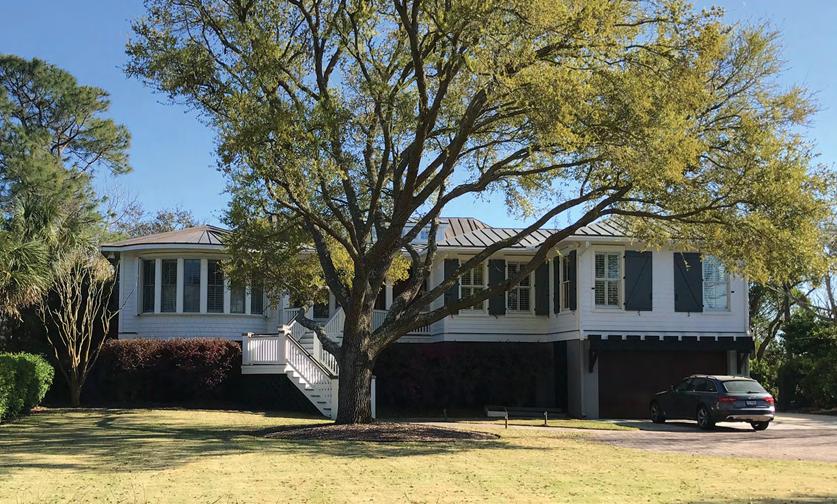
a cozy yet open living room that can expand to the large deck and screened-in porch.
As you enter the home through the wide doorway, you arrive in a foyer that runs the length of the front porch. The flooring is salvaged heart of pine installed by a previous owner. “It goes a long way to giving the house that old soul integrity,” says Alisoun. Just beyond the foyer, two doorways lead into a welcoming sitting room, where large windows look onto a deck and pool and beyond to the Maritime Forest. To the left is an office sitting in the “filled in” portion of the porch, and, to the right, the open-plan kitchen leads to a laundry room that mirrors the office.
Despite the tall ceilings, the architects designed the doorways to a more traditional scale, filling the space with glass transoms. This gives the large rooms a more modest scale, and the wide casements of the doorways help carry you from one room to the next, creating the feel of cottage-like passageways. A new stairwell for the second-story addition allowed for the design of a beautiful banister,
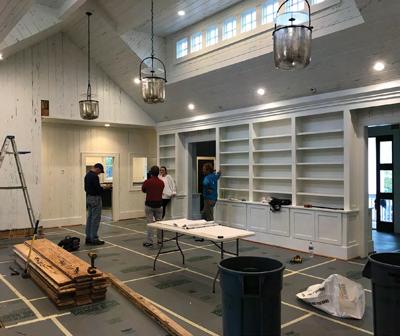
“ You have to maintain a certain simplicity. Its purity in the form that gives it a historic feel.
–John Young
placed strategically in view from the living room. The piece, finished with a similar distressed look to the kitchen cabinets, looks like it’s seen generations of tiny hands spinning around it.
Local designer Melissa Ervin created the home’s interiors, working with the Brewsters to integrate the couple’s extensive art collection and many family heirlooms. She created a classic beach house look — comfortable and elegant — that feels like it’s always been part of the family. Blue and green fabrics in linens and texture tipped with grosgrain ribbon on a white and wood palette add elegance to the living spaces. A mix of antiques and vintage pieces, along with the layering of rugs over sisal, create the feel of a loved and lived-in space. The bold colors continue into the family room, where green lacquered walls in Farrow & Ball “Bancha” draw your eye, and the powder room, where a brilliant ocean blue paint envelopes the small space. “There’s a lot of furniture here that has a lot of history for us,” says Stephen. “So it feels like home, even though it’s new.”
And Sullivan’s feels like home to the couple now, too. One of their daughters has relocated to Mount Pleasant, and the family has fully embraced island living. “There’s such a wonderful multi-generational community here,” says Stephen. “I love the eclectic feel of Sullivan’s.”
A large screened-in deck adjoning a pool provides the Brewsters and their family a lovely spot to enjoy dinner and for their grandchildren to play in the water. Below, the rear of the house overlooks the Maritime Forest.
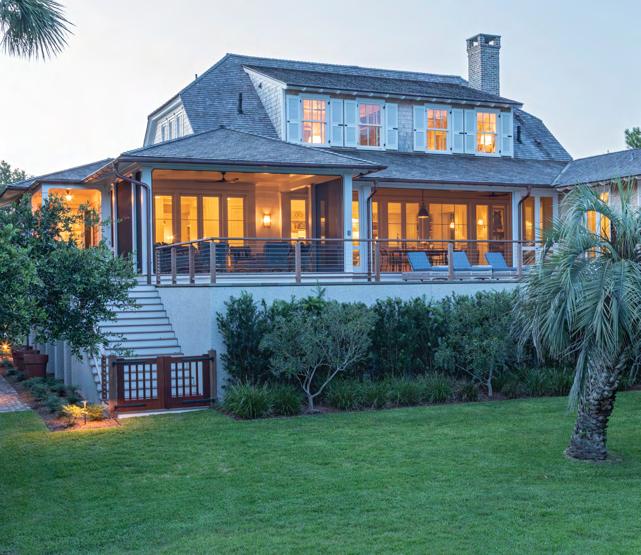
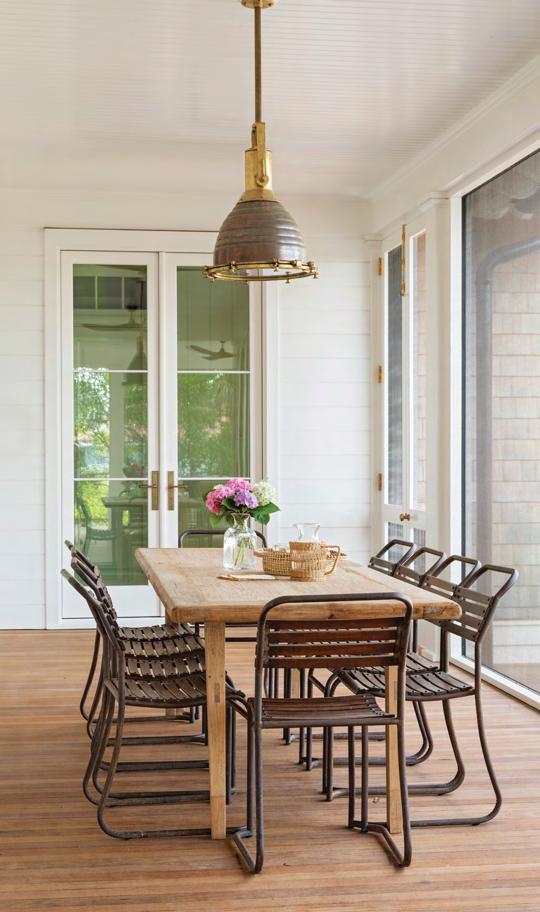

“
Saving the antique heart pine floors in the house and restoring them was a very exciting part of the project.
–Rus SheppardSiP SiP
If you could eat only one type of food for the rest of the season, what would it be? Here’s a bold suggestion: Salads. Forget a boring succession of bland lettuce topped with soggy cucumbers and flavorless hothouse tomatoes. Let us show you a transformed classic that is anything but repetitive.
Sure, the traditional side salad can be great if done right. But today’s chefs are turning this former side dish into a complex flavor experience. When you consider the wide range of ingredients that can be incorporated into a salad — grilled shrimp, sprouted quinoa, watermelon, plantain chips — suddenly all of your former favorite stand-alone foods are fair game in the salad category.
Craving steak? Got it. Have a soft spot for avocado? Coming right up. Feeling sweet on honey? You’re covered. This versatile dish can be whatever you want it to be.
We talked to local chefs and food-industry experts to find four of the most appealing, exciting, and creative salads on the Isle of Palms and Sullivan’s Island. We learned about new trends and fresh ingredients. Jason Daly from The Refuge says “sea beans” are in vogue. Thalita Smith at Coastal Provisions dished on a locally produced blend of lettuces called the “chef cut.” Mex 1 Coastal Cantina’s Morgan Hurley says he’s seeing “more international concepts than we’ve ever seen before.” Ryan Camp from The Longboard revealed that he has “a soft spot for citrus.”
These experts’ innovative dishes express their creators’ expertise, creativity, and warm personalities. Let them convince you to take a culinary adventure. This summer, choose the salad.
Can a salad be a main course? “Absolutely,” says Jason Daly, executive chef and bar manager at The Refuge, on Isle of Palms. Any doubters should consider his innovative approach to a familiar fruit: “When you cook watermelon, it condenses upon itself so the flavor sucks into the melon and the outside caramelizes,” says Daly. “So you get a really nice, dense texture.” Seared for “a minute on each side on our flat-top, seasoned with salt, pepper, and blackening spice,” the result “mirrors the feeling of a protein.”
watermelon and an elevated whipped feta, which has “almost a ricotta texture.” Seasonal greens,
walnuts, red onion, and a bacon-sherry vinaigrette make up the chorus line. To put together the perfect show, “you want to have a variety of flavors and textures,” says Daly. “I try to go for something sweet and savory — and add a crunch as well.”
After 20 years as a chef, Daly knows his salads. He has worked in the South and in the North. Oh, and he’s also been featured on the Food Network’s Chopped , where he made it to the
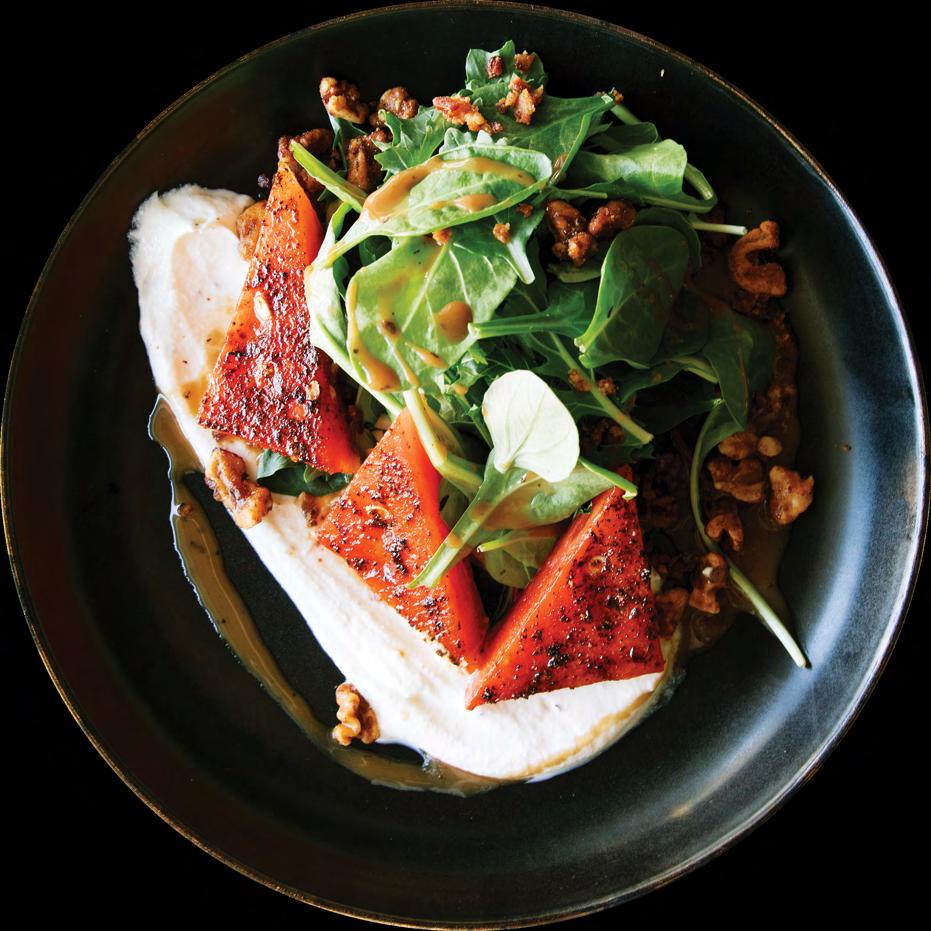
“When you cook watermelon, it condenses upon itself so the flavor sucks into the melon and the outside caramelizes.
Thalita Smith is always in search of local beauty. “Sometimes, I’ll have a color in mind. I will look for ingredients that have the specific color that works together with the salad,” says Smith, the chef de cuisine at Coastal Provisions at Wild Dunes Resort.
Born and raised in Brazil, Smith has been eagerly exploring her new home’s foodscape ever since she joined the Wild Dunes Culinary team. “I want to know what is available, what is the freshest — keeping things as local and close to us as possible,” says Smith.
Her Spring Salad is a gorgeous blend of colors, flavors, and textures. She sources her lettuces from local hydroponic farm-to-table company King Tide Farms. The salad’s greens are complemented by the reds and pinks of pickled strawberries, and three varieties of radishes from local supplier Limehouse Produce. Snap peas and pea tendrils offer elements of surprise. Sprouted quinoa and puffed Carolina rice provide hardiness.
The stunning dish is dressed with a house-made vinaigrette featuring lemon juice, lemon olive oil, and honey. Always aware of her surroundings, Smith tweaks her menu as the environment demands. “The weather changes, the mood changes,” she says. “The food also needs that change, constantly.”
“ I will look for ingredients that have the specific color that works together with the salad.
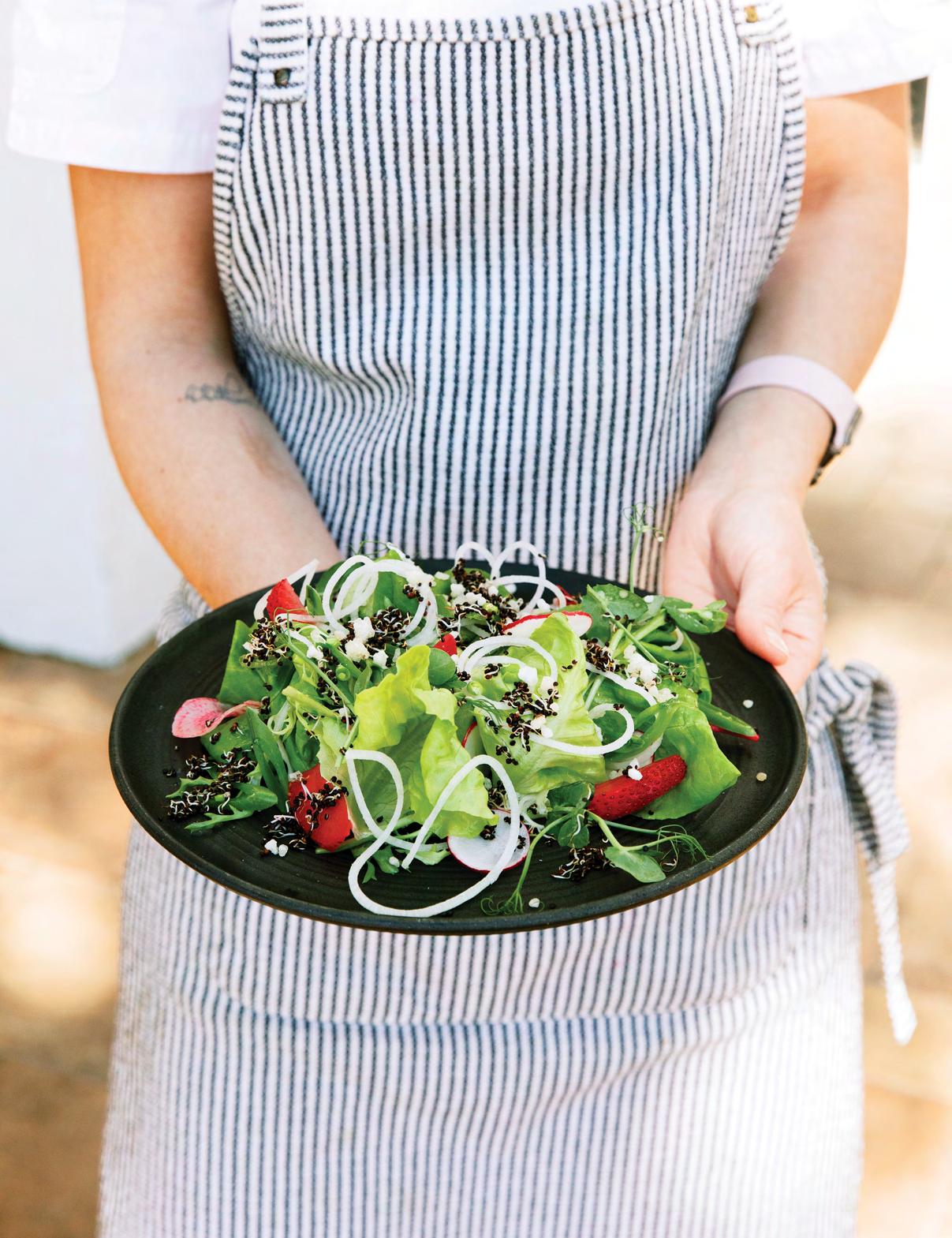
“You’re hungry. You just want craveable food. Come as you are, sand on your feet,” says Morgan Hurley, Mex 1 Coastal Cantina’s marketing and beverage director. The surf-trip-inspired restaurant’s So-Cal Caesar is “our most popular salad and the perfect light snack after a day on the beach,” says Hurley. It features crisp romaine lettuce, grilled wild-caught Atlantic white shrimp, croutons, pepitas, and cotija cheese. The dressing is a “classic Caesar with a Southern California twist,” says Hurley. “We take the classic Caesar, then blend in avocado to add some extra richness and depth.”
The refreshing dish “allows you to save room for chips and queso.” Hungry carnivores or pescatarians can make it a heartier meal by adding mahi-mahi, seared steak, carnitas, braised chicken, or the restaurant’s weekly fresh catch. Vegetarians can top the salad with some roasted cauliflower to satisfy big appetites.
The So-Cal Caesar pairs well with a drink that offers more than a buzz: A dollar from every Pineapple Margarita goes to the Warrior Surf Foundation, which helps veterans heal through surf therapy. No matter what add-on patrons choose to order with their salad, they can expect to have a good time. A recent poll of the Sullivan’s Island staple’s customers confirms it: “The number one word was ‘fun.’”
“ We take the classic Caesar, then blend in avocado to add some extra richness and depth.
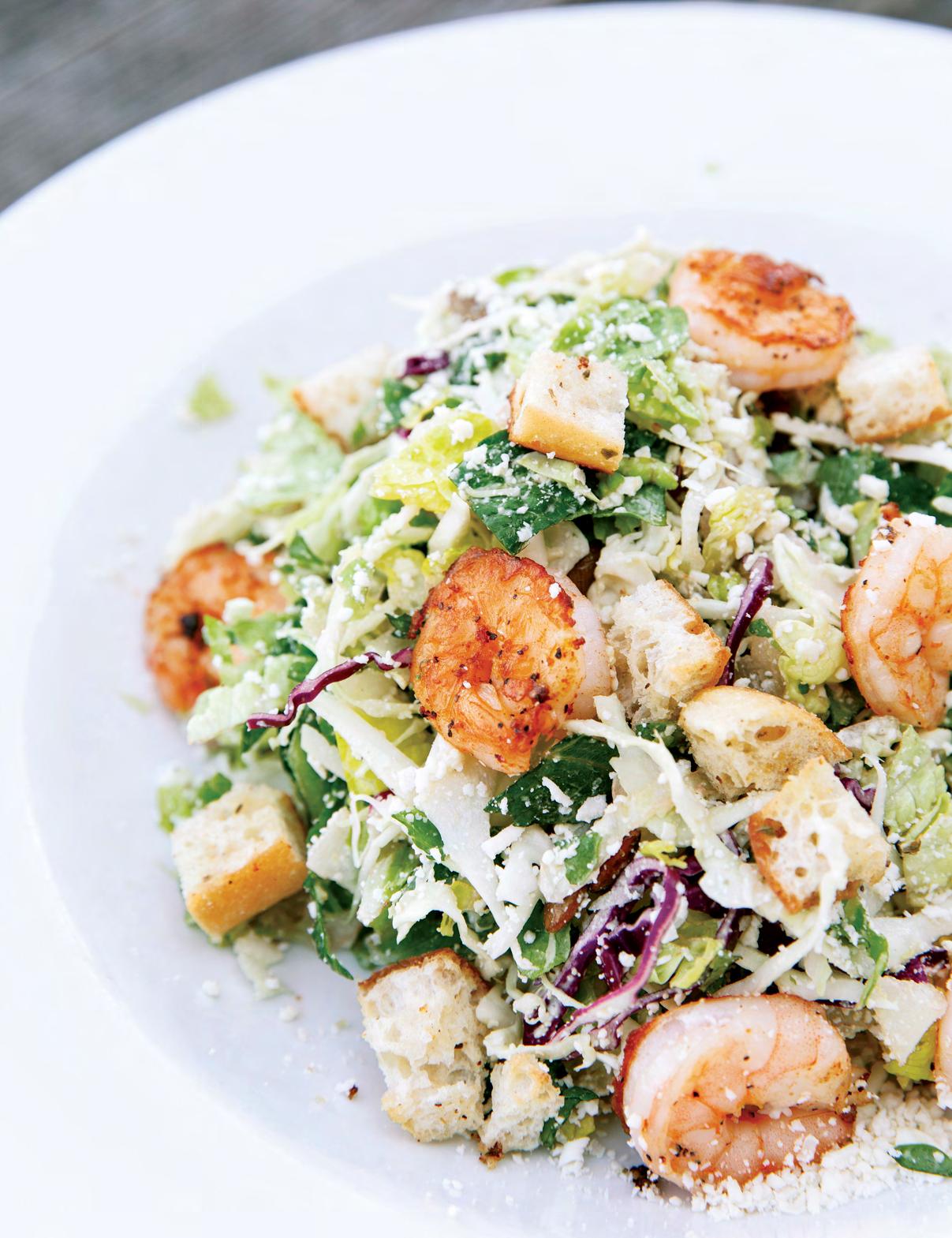
The first sign that The Longboard’s Jumbo Lump Crab Salad isn’t just an ordinary mix of greens and seafood? The plantain chips served on the side of the bowl. “It could be a dip or a salad,” says Ryan Camp, culinary director of Ballast Hospitality and interim executive chef for The Longboard Sullivan’s Island.
Listed in the Share Plates section of the menu, this hearty, versatile dish can be devoured by one person or passed around a table of friends. “Everybody can kind of pick at it,” says Camp. “I like the idea of people being able to play with their food a little bit.”
But don’t let the fun of the dining experience fool you into thinking that sociability is this salad’s only strength. The well-planned recipe is designed to take epicureans on a culinary journey.
Jumbo lump crab and avocado are tossed with Fresno peppers, red onions, and aioli, while the arugula is mixed separately with a lime-agave vinaigrette, which provides a “nice acid to bite through all of that creaminess.”
It’s a dish to share and savor. Camp, who is constantly thinking of new daily specials for The Longboard’s menu, says, “the flavor is always the most important thing.”
THE LONGBOARD’S JUMBO LUMP CRAB SALAD
“ The flavor is always the most important thing.
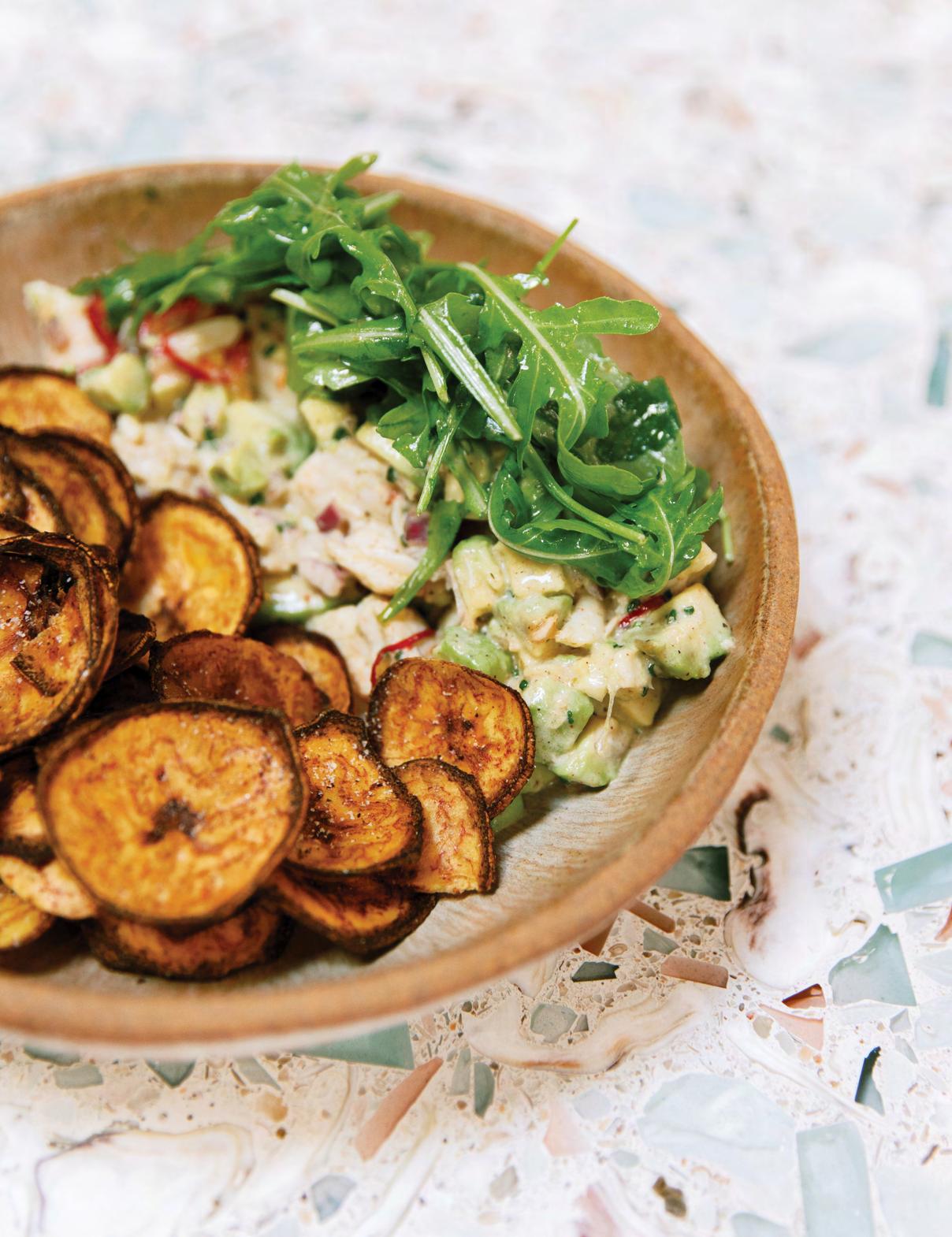
Musician Marci Shore takes a tour through Isle of Palms’ and Sullivan’s Island’s live music hot spots to bring you the lowdown and highlights of the vibes and vocals to be found on the sea islands this season.
Local musician Chris Cordaro performs rock and country covers every Friday at the Co-Op on Sullivan’s Island from 5 p.m. to 8 p.m. In the spirit of the weekend island jam sessions that Chris was an integral part of for many years, he welcomes guest singers and instrumentalists to join him for a song. Photo by Kelly Laureman.
COCONUT JOE’S BEACH GRILL
coconutjoesbeachgrill.com, 1120 Ocean Blvd., Isle of Palms, 843.886.0046
Vibe In its 26th year in business, but under new ownership, the main restaurant area has a panoramic view of the beach. Atop, there is Tequila Ted’s Rooftop Bar – quite possibly the most scenic spot in the Charleston area to listen to music and have a fruity cocktail. Walk off the beach, shake off the sand, and have a seat in this casual, family-friendly establishment. Try some fried grouper bites, or go for it with a ribeye steak. There are burgers, tacos, shrimp ‘n grits, and a brunch menu with drink specials. This is the third season of Joe’s new beach-side bar, Colada Swings, featuring hammocks where you can socialize, sip, and swing with sand between your toes.
Vocals Tequila Ted’s Rooftop Bar hosts music Wednesday through Sunday from 4 p.m. to 7 p.m. Rotating acts include singer-songwriter Kevin Church, multigenre singer and instrumentalist Chris Tidestrom, keyboard player/ vocalist Jeremiah King, and party favorites by Lane Doss. Sunday Reggae on the Rooftop is a long time draw.
THE DINGHY TAPROOM AND KITCHEN dinghyiop.com, 8 J C Long Blvd., Isle of Palms, 843.242.8310
Vibe Many locals describe the Dinghy as being very close to what the vibe of the original Windjammer was like before it was rebuilt after Hurricane Hugo. It’s a proud, casual dive bar with some eclectic menu items and a sophisticated craft beer selection. The menu includes clam strips, alligator bites, and sweet potato fries topped with warm peanut butter – the Dirty Elvis. After a day on the beach, a Philly cheesesteak sandwich, Buffalo chicken wrap, or fried seafood platter might be in order. Drink specials on weekdays from 4 p.m. to 7 p.m.
Vocals Live music seven days a week –typically features a mix of acoustic folk/country solo, duo, or trio acts from 7 p.m. to 10 p.m. No cover. Rotating groups include soulful songwriter Mel Washington, multigenre performer Dave Landeo, fun favorites by the Jeff Bateman Duo, solo rocker Donnie Polk, and husbandand-wife duo Gracious Day, among others. The online music calendar is updated regularly.
PAPI’S TAQUERIA papisiop.com, 1012 Ocean Blvd., Isle of Palms, 843.926.7274
Vibe Just a few steps from the beach, Papi’s proclaims to have “the best tacos in Charleston.” They also have one of the best views from their rooftop dining area. Creative tacos include a sesame seared tuna taco, a Nashville hot chicken variety, a chorizo meatball taco, and a pork belly, sunny side up and sweet potato taco. Locally sourced seafood tacos and, of course, margaritas are a specialty as well. They have a rotating mix of Mexican beers and local beers on tap and a variety of top-shelf tequilas. There’s a children’s menu and a menu attachment listing all possible allergens, making Papi’s a go-to spot for everyone.
Vocals Weekly music is admittedly “random” in terms of days and times, says the manager. The genres range from rock and reggae to singer-songwriter and country. The restaurant also features a pop-up songwriters series and new pop-up comedy series. Follow Papi’s on social media for the latest announcements. Songwriter Wyatt Durrette (who co-wrote many of the Zac Brown Band’s hit songs) is the bar co-owner, and he is often part of the “‘pop-up” entertainment.
THE REFUGE refugeiop.com, 1517 Palm Blvd., Isle of Palms, 843.242.8934
Vibe The quaint coffee bar is the place to nurse your hangover, with a full list of barista classics, signature whipped coffee blends and a hot tea menu. There is steakhouse night on Tuesdays, prime rib night on Thursdays and lobster night each Sunday, and bingo and taco night on Mondays, with prizes to winners. They offer gourmet fare in a non-intimidating yet classy environment, with three menus — one each for morning, midday, and evening. You may find yourself back here multiple times during the day.
Vocals Live music on Wednesdays at 7 p.m. and for Sunday brunch. The music tends to have a “chill” vibe and usually includes acoustic covers of Indy/Americana artists or acoustic versions of songs from many genres. The Sunday brunch vocal vibe is usually a solo or duo act.
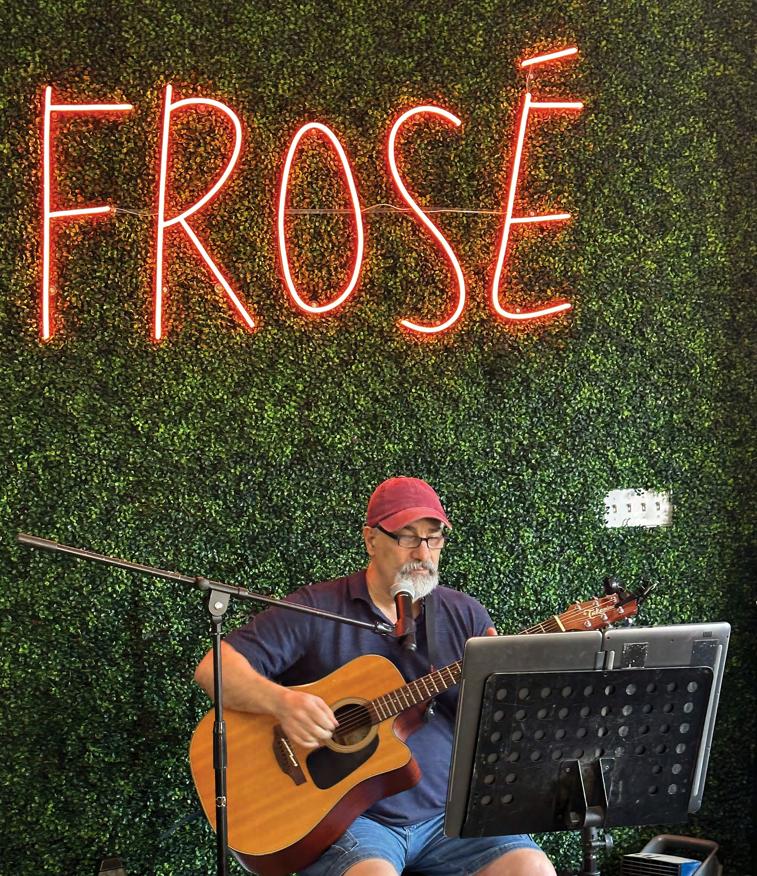
SMUGGLER’S-ISLAND EATS & RUM SHACK
smugglersiop.com, 1122 Ocean Blvd., Isle of Palms, 843.885.7009
Vibe This is Smugglers’ second year in business after taking over the former location of Island Joe’s coffee and ice cream hut. It has outdoor bar seating mostly, with a few tables on the patio. Every Tuesday is Kenny’s Fried Chicken day. Mondays feature half-priced smashburgers, and Sundays feature rotating app and drink specials. Multicolored rum drinks and soft
serve ice cream make it a family affair. Even better, they are dog friendly.
Vocals There is not a set schedule for live music, but you are likely to find a multigenre mix of live entertainment on the patio throughout the season, including local singer/songwriter Dave Landeo and steel drum island sounds from Sam McCoy. The best place to find music announcements is on Smugglers’ Facebook page.
THE WINDJAMMER
the-windjammer.com, 1008 Ocean Blvd., Isle of Palms, 843.886.8596

Vibes The “Jammer” is not only Charleston’s premier live music beach venue; many agree it is second to none on the East Coast. There aren’t many other locally owned restaurants where you can snag a hamburger and a Pabst Blue Ribbon for around $10 and be steps from the beach. For $2.75 more, add some tots, onion rings, or fries. Beach volleyball and the Budweiser Bikini Bash add to the character of the Jammer.
Vocals It’s double the fun for live music at the Jammer with the addition of its outdoor stage within earshot of the surf, sponsored by NUTRL Vodka Seltzer this year. The outdoor music starts at 6 p.m., and, if there is a concert indoors, the doors open at 9 p.m., with the concert starting at 10 p.m. The Jammer is known for helping launch the careers of now nationally known acts like Hootie and the Blowfish and Edwin McCain. Scheduled to appear outside on the NUTRL Beach Stage: Local favorites The Blue Dogs, Grammy-nominated artist Grace Potter, David Nail, Chris Lane, Flipturn, Futurebirds with Leon III, Corey Smith, Easy Honey, Edwin McCain and the Yacht Rock Review.
Leaphart, Moondog, and the Grateful Dead cover band, Scarlett Begonias. Every Tuesday is Team Trivia Night.
mex1coastalcantina.com/sullivans-island, 2205 Middle St., Sullivan's Island, 843.882.8172
Vibe With three locations in the Charleston area, Mex 1 features Tex-Mex cuisine with a surf bar theme. Salsas, sauces, and dressings are made in-house daily. Freshly squeezed juices and 100% Blue Agave tequila are used in all margaritas. The cuisine is inspired by the light, fresh flavors of the Baja Peninsula. Tacos, salads, quesadillas, brown rice bowls, and house-infused margaritas are menu highlights. The patio and outdoor bar seating add to this establishment’s colorful ambience. Mex 1 was reportedly a favorite hangout for the cast of Outer Banks while they were filming on the island.
Vocals Mex 1 Cantina hosts live music Friday nights from 8 p.m. to 11 p.m. with fan favorites like Jaykob Kendrick, who play everything from the Beatles to the Black Crowes, the five-piece dance and party band, Return of the Mac, popular covers by Chief Brody and Americana music by Hans Wenzel.
THE CO-OP
Thecoopsi.com, 2019 Middle St., Sullivan’s Island, 843-882-8088
dunleavysonsullivans.com
2213 Middle St., Sullivan's Island, 843.883.9646
Vibe The pub had its start with a brother and sister’s dream of co-owning an Irish restaurant. Over 30 years later, Dunleavys has its roots firmly established as a favorite spot for both locals and tourists and the only place around to get a proper pint of Guinness. Get a feel for the local characters when you belly up to the bar. Acclaimed for their burgers, grilled wings, and rotating blue plate specials, they recently added more gourmet fare with a new chef onboard. Free popcorn. No fried foods. Cash only.
Vocals During the summer, there may be some weekends with a solo or duo act, but, more predictably, there is the long-running “Vintage Country Night” the first Tuesday of each month. Seats fill up early for these shows, so arrive by 7 p.m. for a good spot. Lowcountry Music Hall of Fame vocalist/guitarist Carroll Brown brings his own local following along with his three-piece band and guest performers. He often plays late into the night, accommodating requests.
hometeambbq.com, 2209 Middle St., Sullivan's Island, 843.883.3131
Vibes Fiery Ron’s famous barbecue can be found in seven locations, including one in Aspen, Colorado. The Sullivan’s restaurant was the original. Located in the building formerly housed by the island’s iconic bar, Bert’s, Home Team is the island’s most popular spot to watch whatever sports event is in the headlines. Pulled pork plates, tacos, and salads are a unique island specialty, and the wings are a popular to-go item for the beach or a party at home. The sun-kissed crowd is always a lively mixture of the young and young at heart, and there are a few tables on the covered patio. The Gamechanger frozen cocktail is legendary, and there is a new frozen drink — The Frozen Irish Coffee — featuring Tullamore D.E.W., coffee, cacao nibs, and sea salt.
Vocals Music returns in May, with one concert a month planned for the summer season, including artists Sufferin’ Moses, Mac
Vibe The Co-Op started as a place to graband-go a coffee, breakfast sandwich, turkey club, or bottle of beer, but once they cranked up the fruity frose adult slush puppy machines several years back, this end of the Middle Street commercial district has never been the same. The Co-Op now has seven locations. Try the $1 drip coffee, avocado toast or heart-healthy egg sandwich with cheddar, spinach, and hummus for the hangover that results from the frose the day before. There is a rotating cast of flavors, and there are flights and to-go containers as well.
Vocals Guitarist and singer Chris Cordaro performs inside at the Co-Op every Friday from 5 p.m to 8 p.m. Chris’ jam sessions on the island are legendary, and they bring out many of the artsy locals who either want to sing along or play along as guest performers. Bring an instrument or a song you want to sing, but, most importantly, bring your desire to have a good time.
ISLANDER 71
Islander71.com, 80 41st Ave., Isle of Palms, 843-885-6463
Vibe In the location of the former Morgan Creek Grill, Islander 71 brings back dining on the rooftop overlooking the Intracoastal Waterway as well as the more private dining area on the ground floor. The restaurant’s name is a tip of the hat to the IOP island life of the 1970s, and the menu items are inspired by simple beach fare of that era, including fresh salads, she-crab soup, a chilled shrimp cocktail app, fried seafood platters, and burgers. There are three outdoor decks, a courtyard, and two outdoor bar areas to watch ships passing through or the sun going down. There are a few boat slips available for guests.
Vocals Live music throughout the season on Fridays and Saturdays from 5 p.m. to 8 p.m., featuring classic rock, fun, popular covers from Rob Corbett and Just Groove, four-piece electric covers by Chief Brody, jazz from the Cooper River Band, and a rotating ensemble of acts performing country, funk, and Americana, as well an occasional DJ spinning tunes. The outdoor courtyard has a small stage with plenty of dance room. There is music on some Sundays, as well on some holidays: Easter 2 p.m. to 5 p.m.; Mother’s Day, 2 p.m. to 5 p.m.; Memorial Day, Fourth of July, and Labor Day Sundays, 5 p.m. to 8 p.m.
Lifeguarded Beaches
Isle of Palms County Park is lifeguarded on weekends beginning May 13 from 10 a.m. to 6 p.m. Beginning June 7, lifeguards are on duty daily through mid-August and weekends through the last weekend in September.
IOP Beach Sweeps
Isle of Palms Beach Cleanup Crew holds weekly litter sweeps during the beach season on Monday nights (6 to 7 p.m.) and Wednesday mornings (7 to 8 a.m.), Memorial Day through Labor Day. In the off-season they are held the 2nd Monday of the month, 4:30-5:30 p.m. No advance registration is required. For more information, email susanhillsmith@gmail.com
Mount Pleasant Farmers Market
Discover South Carolina-grown produce and local food vendors while enjoying live music. Tuesdays, 3:30 p.m. to 7 p.m., April through September on Coleman Boulevard, next to Moultrie Middle School. ExperienceMountPleasant.com
IOP Farmers Market
Enjoy local produce and arts and crafts, every Thursday, 4 p.m. to 7 p.m. June through October. on the front lawn of the Recreation Center, located at 24 28th Ave. iop.net
The IOP Rec Dept. hosts this free event for all ages that focuses on teaching proper bike safety. There will be giveaways for new bikes and helmets, along with free snacks, snowcones and water. Register in-person or online at the Recreation Center, 24 28th Ave. iop.net/recreation, 843.884.7031
Spoleto Festival
The annual international performing arts festival returns for its 46th season, running May 26 through June 11. Spoletousa.org, 843.579.3100
Floppin’ Flounder 5K Run/Walk
This community-wide group run hosted by the Charleston Running Club has had a faithful following for more than 25 years. It takes place Saturday, June 3 at 8 a.m. and starts in front of the Sullivan’s Island
Elementary School. Registration is $45. floppinflounder.com
Piccolo Spoleto Sand Sculpting Contest
June 3 at 9 a.m. head to the beach at IOP County Park for a stunning display of sandsculpting prowess. The event is part of the Piccolo Spoleto Festival, which runs May 26 through June 11. Piccolospoleto.com
Sullivan’s Island Fire Department Fish Fry
The annual Sullivan’s Island Fire Department Fish Fry will make a comeback after two years of absence due to COVID. The fundraising event will be held on the evening of June 24 at the Fish Fry Shack, 1459 Hennessy St.
Carolina Day Recognition
Battery Gadsden Cultural Center’s annual Carolina Day recognition is June 24, at 9 a.m. on the plaza in front of Sullivan’s Island Town Hall. Speakers will be followed by the raising of the Moultrie flag. BatteryGadsden.com
Battle of Sullivan’s Island Musket & Artillery Demonstrations
Fort Moultrie National Historical Park observes the anniversary of the Battle of Sullivan’s Island, known locally as Carolina Day, on June 24 and 25 with Ranger talks and cannon firing demonstrations. 10 a.m. to 3 p.m. nps.gov/fosu
4th of July Golf Cart/Bicycle Parade
Deck out your golf cart or bicycle for this annual parade celebrating America’s independence. Start at the Sullivan’s Island Elementary School; end at Stith Park. Meet at SI Elementary. The parade begins at 9 a.m.
4th of July BBQ at Wild Dunes Resort
Enjoy live music and the best BBQ around at the 4th of July BBQ on the Village Plaza. 5:30 p.m. and 7:30 p.m. seatings, $40/ adults, $15/kids, $23/drinks package. Book online destinationhotels.com/wild-dunes/ events/4th-of-july-bbq
Isle of Palms Beach Run
On July 29 choose from a Youth Fun Run, 5K or 10K run, or a 5K walk on the beach. Start at The Windjammer, 1008 Ocean Blvd., at 8 a.m. Registration closes July 26. Race day registration and packet pick-up begin at 7 a.m. at The Windjammer. Race starts at 8 a.m. iop.net/recreation, 843.886.8294, raceroster.com
National Lighthouse Day
A special ranger program on the Charleston Light and the Historic U.S. Life Saving Station District will be held on Aug. 7 at 10 a.m. and 1 p.m. at the Life Saving Station at 1807 Atlantic Ave., Sullivan’s Island. nps.gov/fosu
Half Rubber Tournament
This annual tournament takes place at IOP Recreation Center on Saturday, Aug. 12. Register by calling Aaron Sweet at 843.886.8294 or email asweet@iop.net. Three and four-person teams, $25 per person. Check-in/captain’s meeting at 7:30 a.m.; games begin at 8 a.m. halfrubber.com
Beach Sweep
The National Park Service participates in the 34th annual cleanup of South Carolina’s beaches on September 16. Volunteers are encouraged, meet at the Fort Moultrie Visitor Center at 9:30 a.m. nps.gov/fosu
IOP Community Wellness Fair
Held in Sept., the IOP Recreation Department teams up with East Cooper Medical Center to offer flu shots and bloodwork for local residents, including cholesterol screenings and lipid profiles at the Recreation Center, 24 28th Ave. iop.net/ recreation, 843.884.7031
Isle of Palms Connector Run & Walk Fundraiser for the IOP Exchange Club’s programs for the healing and prevention of child abuse takes place Oct. 7 at 8 a.m., IOP Connector. Registration is $35 or $40 on the day of the race. ioprun.com
Fire Prevention Celebration
Look for a SI/IOP parade of engines in October at Sullivan’s Island Fire House, 2050 Middle St., Sullivan’s Island.
Ghostly Tide Tales
Bring a blanket, flashlight, chairs, and friends for spooky stories by bonfire light on the beach at Isle of Palms, 28th Ave. Free. October 14, 6 to 7 p.m., iop.net/recreation
IOP Halloween Golf Cart Parade
Held on Oct. 29, the parade starts at 11 a.m., lineup at 10:30 a.m. at 27th Avenue. Pre-register at IOP Recreation Dept., 24 28th Ave., iop.net/recreation
Art on the Beach / Chefs in the Kitchen
The annual fundraising event for Charleston Pro Bono Legal Services plans takes place
Sunday, Nov. 12 from 1 to 5 p.m. Tour Sullivan’s Island homes, see art from local artists and eat dishes prepared by Charleston chefs. Charlestonprobono.org/ artonthebeach

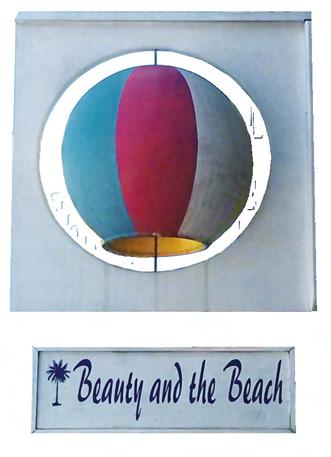
Blessing of First Responders & Veterans
Saturday, Nov. 5, 2023 at 11 a.m. St. Mark’s Lutheran Church, 300 Palm Blvd., Isle of Palms.

Wild Dunes Resort Thanksgiving Golf Cart Parade
Golf cart parade down Palmetto Drive on Thursday Nov. 28, at 10 a.m. The parade starts in front of the Swim Center and is led by the Isle of Palms Fire Department and followed by Santa Claus. This parade is fun for drivers and spectators alike. Rent a cart for $40.
IOP Holiday Festival
Celebrate the season on Front Beach, Saturday, Dec. 2, 2 to 7 p.m. Enjoy the 25-foot Christmas tree, arts and crafts vendors, food trucks, children’s activities and live entertainment, plus a visit from Santa Claus. iop.net/holiday-street-festival
Sullivan’s Island Holiday Fireworks
Light up the night at Sullivan’s Island Stith Park, 2050 Middle St. on Dec. 2. Enjoy a fireworks display, the Wando Chorus, and the lighting of the town holiday lights. Sullivansisland-sc.com
Owls By Moonlight
The Center for Birds of Prey in Awendaw hosts an evening in the nocturnal world of owls on Dec. 7. This program includes a reception with refreshments and experiences with nearly 14 different species of owls. $100, thecenterforbirdsofprey.org
Dunleavy’s Polar Bear Plunge
“We’re freezin’ for a reason.” Jump into the chilly waters of the Atlantic on Jan. 1. Meet at 2 p.m., 2213 Middle St. Sullivan’s Island, dunleaveyspubpolarplunge.com, 843.795.5316
Charlie Post Classic 15K/5K
Charleston Running Club hosts the 38th annual Charlie Post Classic 15K & 5K in January. Start is 8:30 a.m. in front of the Sullivan’s Island Fire Department, 2050 Middle St., charlestonrunningclub.com
FEBRUARY 2024
Doggie Days at the Rec
Bring your pooch to the IOP Rec Center for some pampering and petting at the city’s hugely successful annual Doggie Days event. Get your pup vaccinated and show him/her off at the Dog Show for a yappyfun day out. Early February, check iop.net/ doggie-days-at-the-rec for exact date.
Southeastern Wildlife Expo
SEWE is a three-day showcase of everything we love about wildlife, nature and artistic representations of them. Various locations, Feb. 16 through 18. sewe.com
MARCH 2024
Front Beach Fest
Look for this annual party on IOP’s Front Beach, celebrating the start of the season with local musicians, food vendors, jump castles, and other entertainment. Free admission. iop.net, 843.886.8294
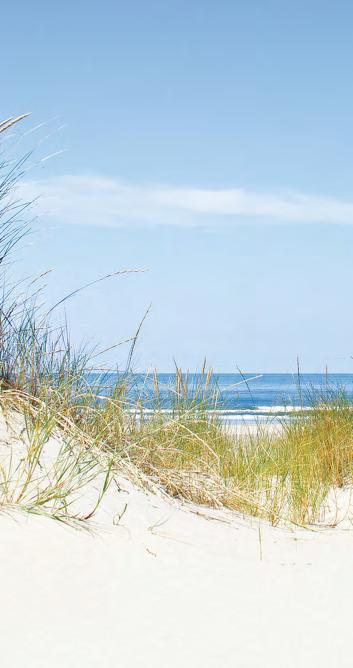
Credit One Charleston Open
The professional women’s tennis tournament returns to the Charleston Tennis Center at the Credit One Stadium on Daniel Island from March 30 to April 7. Watch world-class tennis and enjoy fun family activities at this long-running event. creditonecharlestonopen.com
APRIL 2024
46th Annual Cooper River Bridge Run
The annual run across the Ravenel Bridge takes place April 6. A world-class 10K foot race that begins in Mount Pleasant and ends in downtown Charleston. bridgerun.com
Isle of Palms Annual Yard Sale
Residents of IOP sell their gently used items in an island-wide yard sale at the IOP Rec Center in mid-April. iop.net or call 843.886.8294.
Isle of Palms Easter Egg Hunt
Hunt eggs and get your photo with the Easter Bunny at 10 a.m. sharp. IOP Rec Center, 24 28th Ave. iop.net/recreation
Local photographer Michael Barnett captured this astonishing drone shot of a pod of dolphins bow-jumping in front of a slow-moving ship in the Charleston Harbor. Theories abound on why dolphins do this, from riding the power of the waves generated by the ship to feeding on fish swept up by the waves. But mostly, Barnett thinks they’re just having a lot of fun. Barnett has been capturing this phenomenom since 1999. See more from the series on Instagram @themilkywaychaser.
